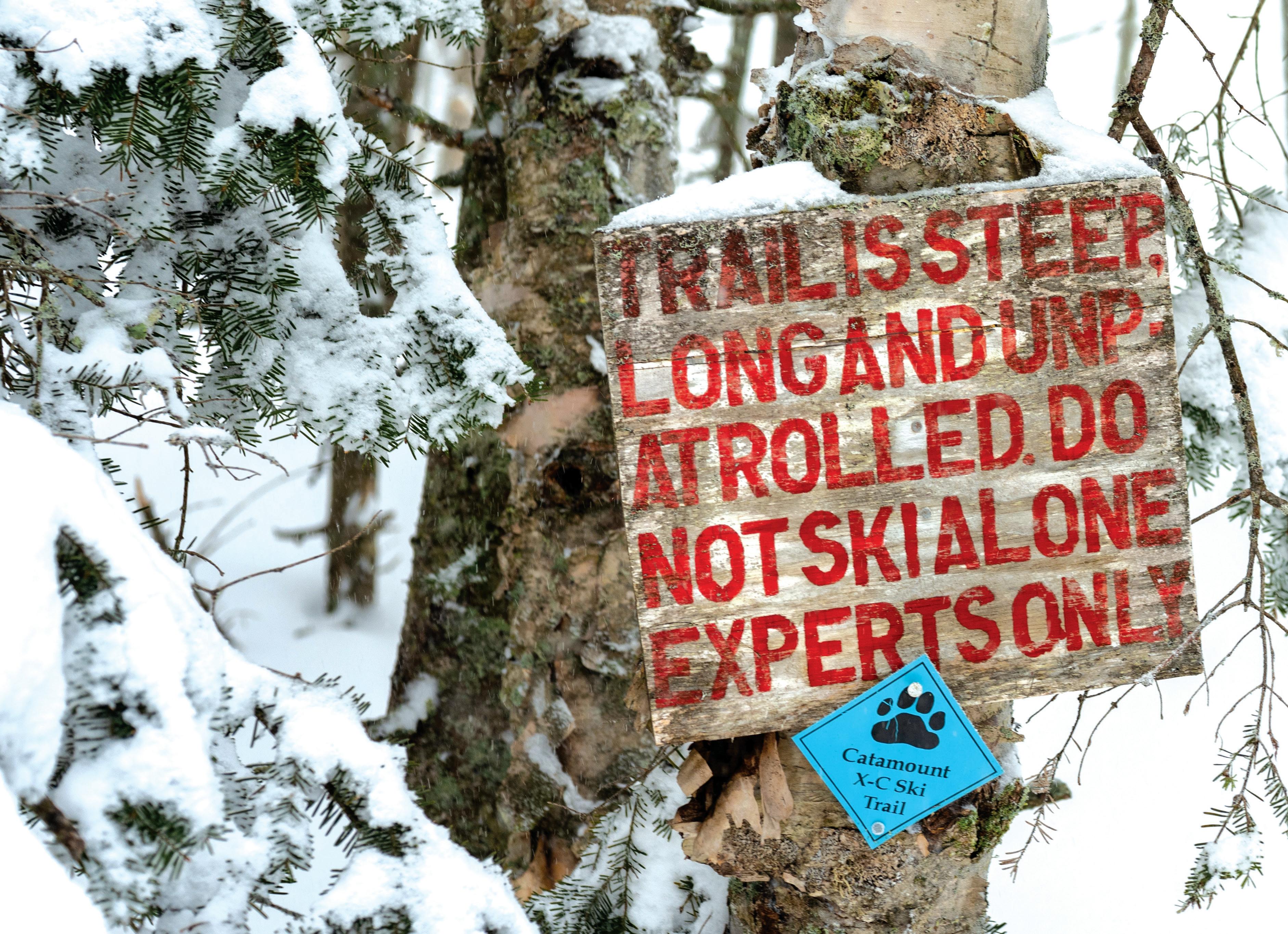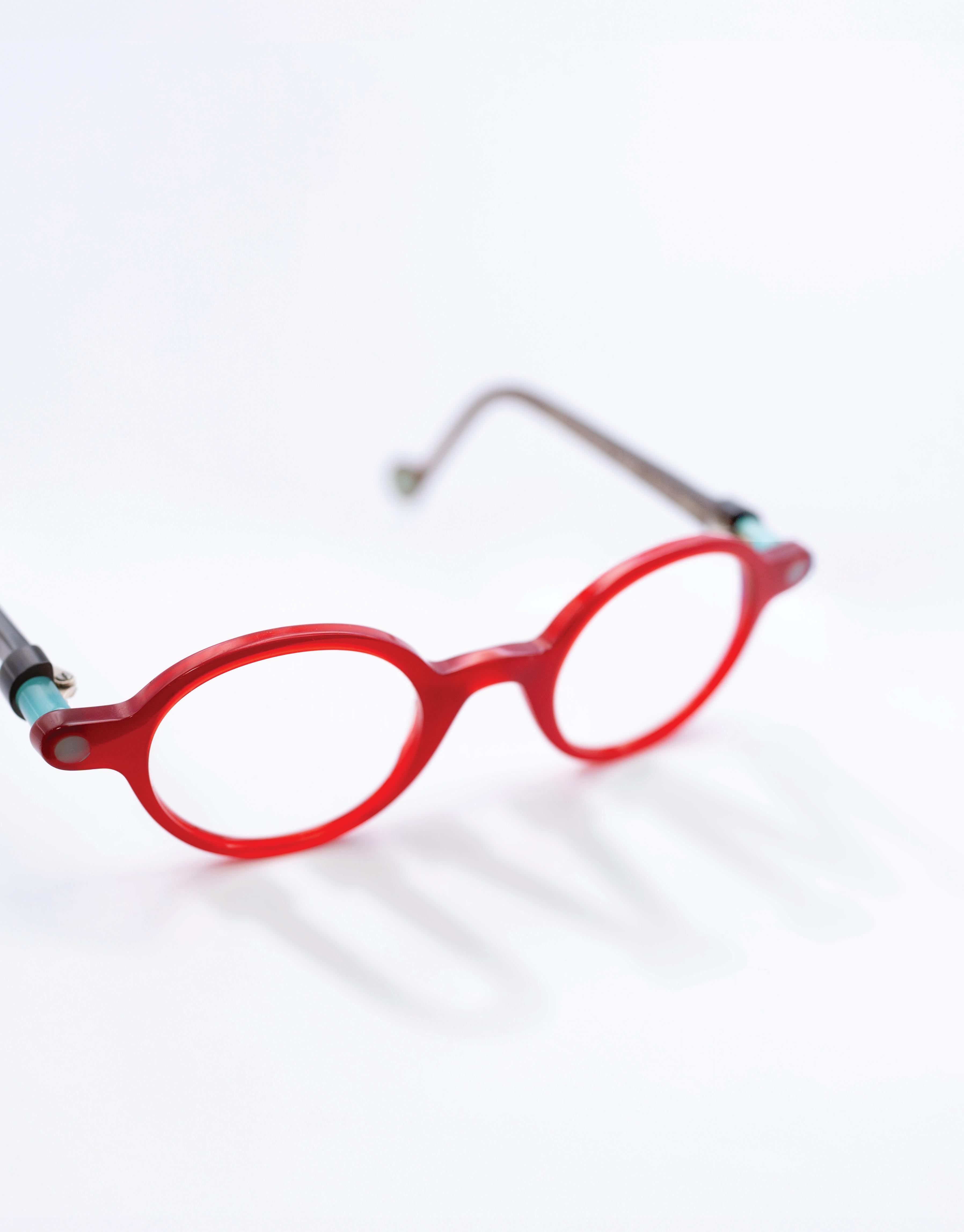

A NEW VISION
UVM’s 28th president, Marlene Tromp, has seen the transformative power of education and looks forward to broadening its reach.
As she begins her tenure as the University of Vermont’s 28th president , Marlene Tromp has big goals for UVM, an institution she feels “has the power to truly lead the nation and even the world on several fronts.”
From a wild idea to a 320-mile ski trail, the Catamount Trail’s founders celebrate 40 years of adventure.
| BY JOSHUA BROWN
As male college enrollment drops, UVM works to close the gender gap and foster true belonging for all.
|
BY
KRISTEN MUNSON
FRONT COVER: UVM President
Marlene Tromp’s distinctive eyeglasses. Photo by Cody Silfies.
BACK COVER: Joshua Brown
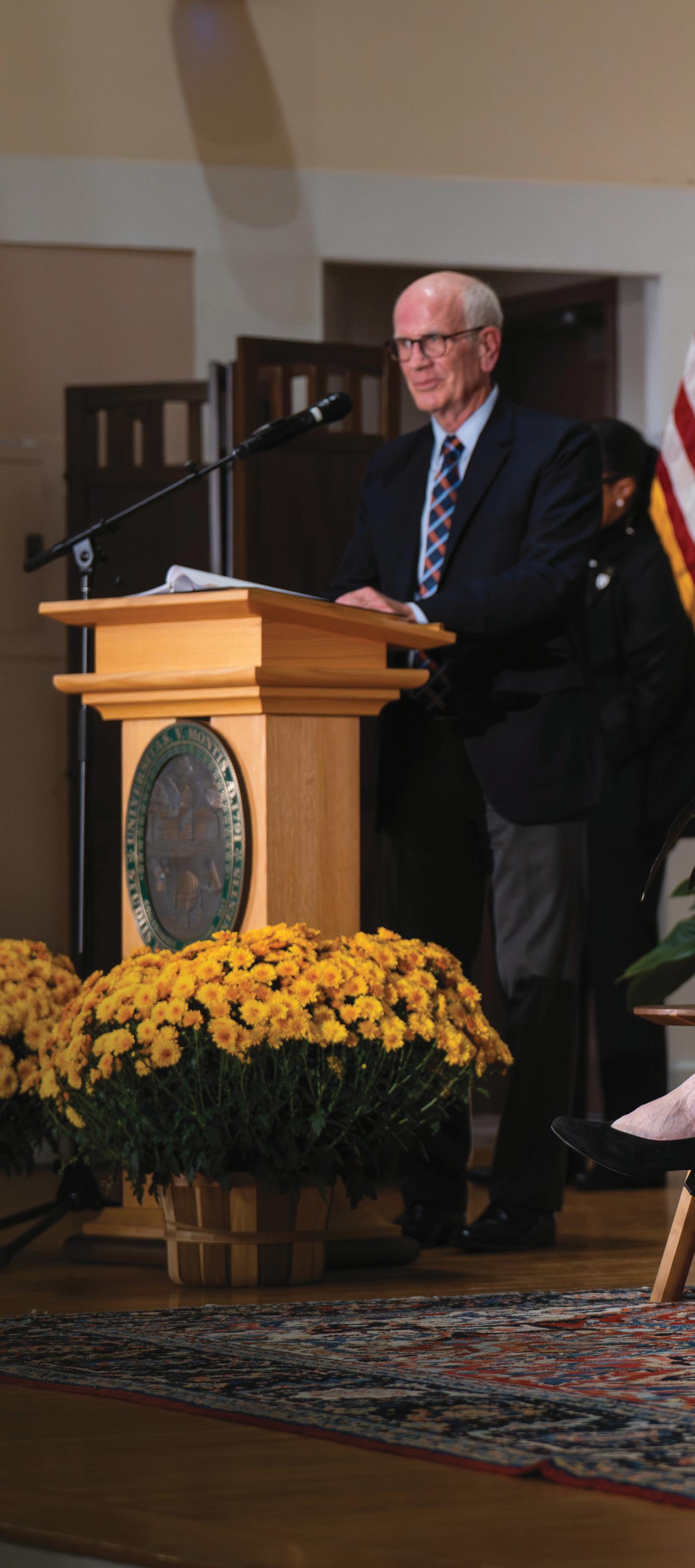
PERSEVERANCE
AND HEART
U.S. Supreme Court Justice Sonia Sotomayor, now in her 17th year of service on the High Court , arrived on the UVM campus on October 20 ready to share with students the lessons that have served her most in life: perseverance in hard times, the necessity of failure, the value of other points of view, and the importance of using your heart. The main event, billed as an evening conversation between Justice Sotomayor and UVM President Marlene Tromp, took place at Ira Allen Chapel, and featured introductory remarks by U.S. Senator Peter Welch (at left) and Vermont Governor Phil Scott. Earlier that day, Justice Sotomayor read her latest children’s book, Just Shine! How to be a Better You, to a group of local third, fourth, and fifth grade students, and later held sessions with UVM political science and Patrick Leahy Honors College students.
QR,
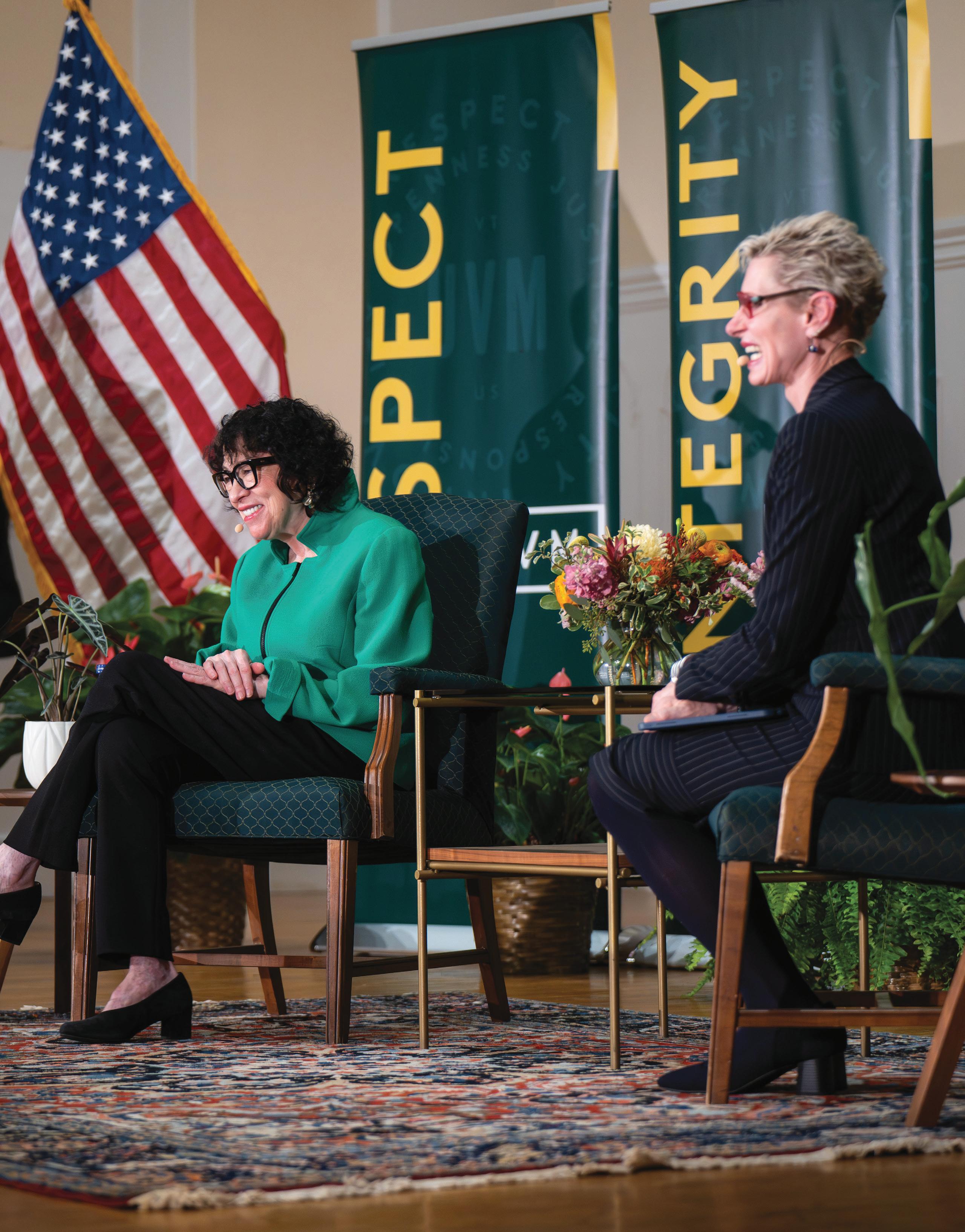
New Challenges, New Opportunities.
This fall has been a season of renewal for me, as I begin my tenure as UVM president. I’ve already begun meeting faculty, staff, students, alumni, and friends, and I’m so grateful for the welcome I’ve had from the members of the university community, and from people across Vermont.
My message to all I’ve met has led with how proud and fortunate I am to lead a land-grant university: a brilliant innovation, the brainchild of Vermont’s own Justin Morrill, that opens access to education to all people, giving them the opportunity to bring their talents to the world–an idea that transformed this country. It continues to hold our best hope today, particularly when higher education and our nation are facing such real and profound challenges.
You can read in this issue a bit about my own personal journey. As a first-generation graduate from a rural community, I’ve experienced the power of education to transform lives. My passion and commitment are to ensure that we can change people’s lives so they can change the world, whether that’s in their hometown or across the globe.
We do that at UVM in part by creating new knowledge through our extraordinary research enterprise, driven by a faculty dedicated to innovation and commitment to community. Our research is critical to the future. I know UVM is ready to meet the challenges research enterprises face today with creativity and insight.
One of the most important efforts underway is our broad, campus-wide work to craft the university’s new strategic plan. A committee of more than 30 members, with broad representation from across the university—including elected faculty members from each college and school, staff from throughout our academic and administrative units, student representatives, members of our governance groups, our valued alumni, and the community—is engaged in this work right now,
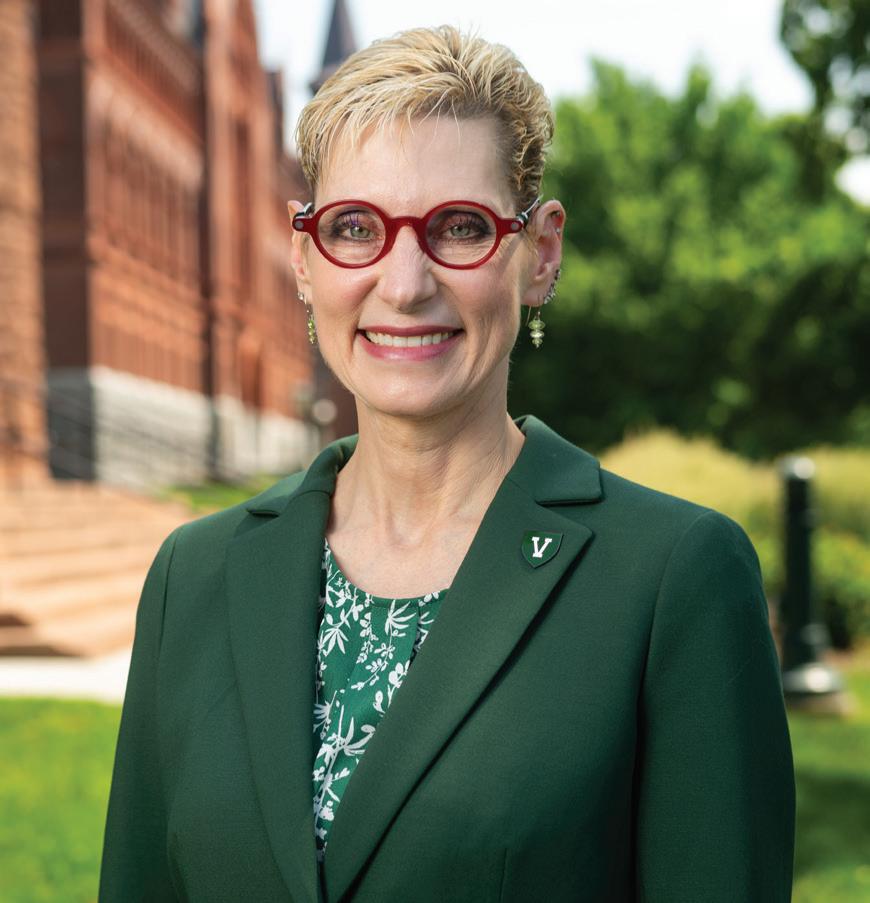
with a goal of a finished plan by early in the spring semester. This is an important step for our community–an opportunity for us to come together, guided by our institution’s Our Common Ground values, and create a vision for the future of UVM.
A crucial challenge today for universities and, indeed, for our broader society, involves the problems affecting young men, particularly their participation in higher education, and the benefits that flow from that. This issue details the crucial work that faculty and staff at UVM are performing in this area, and points to some hopeful outcomes.
When I think of the more than 130,000 UVM alumni who are out in the world right now, making a difference in thousands of ways each day, I’m awed by the power of this institution. You can read here the story of three alums who, working together over the years, built the Catamount Trail, a ski path that connects the state from top to bottom and has added another dimension to Vermont’s important winter recreation industry.
It seems to me that the term “Catamount Trail” could be an appropriate descriptor for so much of the good work that’s done by the faculty, students, staff, and alumni of this university. It’s a path on which I’m happy to add my footprints.
—Marlene Tromp President , University of Vermont
Once a scholarship is now ensuring futu changing suppo
For Andrew Bowen ’15, scholarships were more than financial aid—they were life-changing.
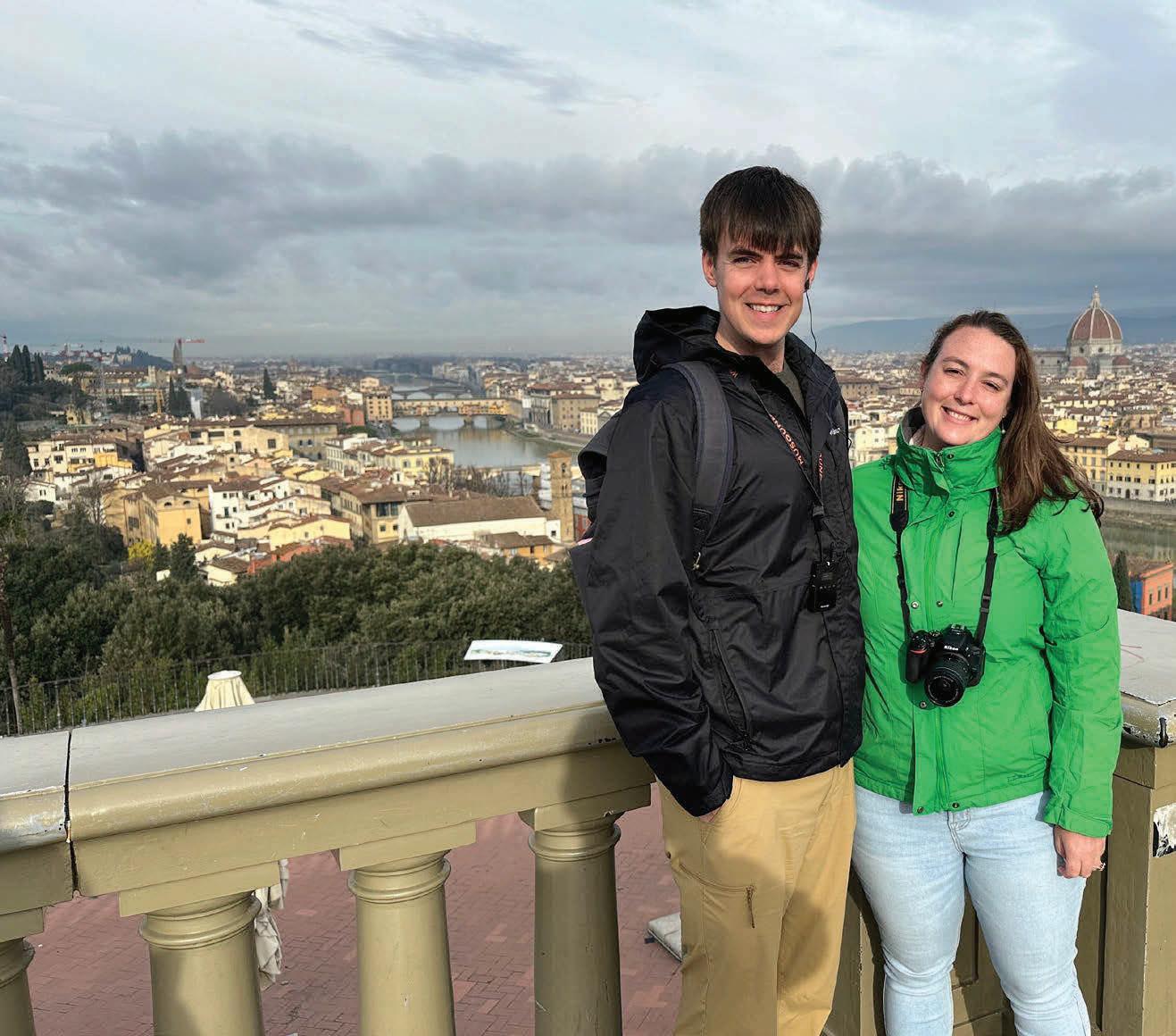
Raised by a single mother, Andrew worked three campus jobs and waited tables at night to afford his education. Even with his determination, the financial strain was constant. Everything shifted the summer before his senior year, when he learned he had received a scholarship.
“Immediately, it was hugely impactful for me,” he says. “It almost covered my entire tuition for senior year and the university health insurance I needed to purchase. It made a massive difference.”
That support eased the burden, but more importantly, it affirmed his place at UVM and allowed him to focus on learning and leadership. The experience left a lasting impression—one that inspired him years later, alongside his wife, to establish a scholarship of their own.
“As someone who benefited from that generosity, it was a no-brainer,” Andrew says. “If we can make the same impact on one student that someone once made on me, that’s invaluable.”
Andrew’s journey shows how one act of generosity can spark another, creating a cycle of support that sustains students today and long into the future.
Read Andrew’s full story at go.uvm.edu/bowen
PUBLISHER
University of Vermont
Marlene Tromp, President
EDITORIAL BOARD
Alessandro Bertoni, Interim Chief Communications and Marketing Officer, chair Krista Balogh, Ed Neuert, Benjamin Yousey-Hindes
EDITOR
Ed Neuert
CREATIVE DIRECTOR
Cody Silfies
CLASS NOTES EDITOR
Cheryl Carmi
CONTRIBUTING WRITERS
Joshua Brown, Cheryl Carmi, Christina Davenport, Ren Dillon, Joshua Defibaugh, Chris Dissinger, Jeanne Dorf, Kellie Fleury, Doug Gilman, Colleen Goodhue, Nich Hall, Stephanie Knific, Kevin Morgenstein Fuerst, Kristen Munson, Ed Neuert, Su Reid-St. John, Nate Scandore, Lisa Wartenberg Vélez, Basil Waugh, Adam White, Sara White
PHOTOGRAPHY
Bailey Beltramo, Joshua Brown, Joshua Defibaugh, Andy Duback, Leo He, Mark Isselhardt, Sara Kinnamon Fritsch, Su Reid-St. John, David Seaver, Cody Silfies, Magdalena Sorrentino, Jay Stearns, Tanya Tran, Sally McCay, Kevin Morgenstein Fuerst, Ed Neuert, Oliva Weale, Josh Valcarcel, Alex Weiss, Zandy Wheeler, Catamount Trail Association, Well Told Films
CONTRIBUTING DESIGNERS
Emily Murray, Jared Carnesale ’27
ADDRESS CHANGES
UVM Foundation 411 Main Street Burlington, VT 05401 (802) 656-9662, alumni@uvm.edu
CORRESPONDENCE
Editor, UVM Magazine 16 Colchester Avenue Burlington, VT 05405 magazine@uvm.edu
CLASS NOTES alumni.uvm.edu/classnotes
UVM MAGAZINE Issue No. 97, November 2025
Publishes Spring / Fall Printed in Vermont by Lane Press
UVM MAGAZINE ONLINE uvm.edu/uvmmag facebook.com/universityofvermont
youtube.com/universityofvermont x.com/uvmvermont instagram.com/universityofvermont
YOU SHOULD KNOW
BIG NUMBERS
This summer UVM secured over $5.5 million in National Science Foundation funding to support researchers investigating nextgeneration artificial intelligence computing, human tissue mechanics, atmospheric science, underground robots, and renewable energy systems. The largest grant of $2.1M is for a new supercomputer for artificial intelligence research at UVM’s Vermont Advanced Computing Center. Named IceCore, the new, high-performance computing cluster is 100 times faster than existing UVM systems.
Read more: go.uvm.edu/icecore
LIVE SINCE ’55
In 1954, Mrs. Nellie Lane donated $317,000 in stock and securities to the University of Vermont to honor her late husband, George Bishop Lane, UVM class of 1883. She gave the university three choices of projects to which it could apply the gift: a reading room in the library, an organ for Ira Allen Chapel, or a concert series. UVM chose the concert series and in October 1955, the Lane Series was launched. This year the series celebrates 70 years of live performance, in one of the great acoustic spaces in New England–the UVM Recital Hall. Also celebrating a 70th this year is Across the Fence, the weekday television show coproduced by UVM Extension and WCAX-TV. The program was honored with induction into the Vermont Agricultural Hall of Fame in August.
Read more: go.uvm.edu/laneatf70
FULL PLATE
In July UVM announced the launch of the Food Systems Research Institute, a collaboration with the U.S. Department of Agriculture’s Agricultural Research Service. The institute will focus on longterm, transdisciplinary food systems research, working off a decades-long commitment to food systems research at UVM. It builds on the foundation of the UVM Food Systems Research Center, established in 2019 through a congressionally mandated allocation facilitated by then Senator Patrick Leahy.
Read more: go.uvm.edu/fullplate
NEW LEADER
Linda Prokopy became dean of UVM’s College of Agriculture and Life Sciences on July 1. Prokopy is an accomplished scholar and leader who comes to Vermont from Purdue University, where she was a professor and head of the Department of Horticulture and Landscape Architecture. Prokopy leads the $10 million USDA-NIFA funded project, Diverse Corn Belt, which involves nine universities, four non-profit organizations, and two federal agencies.

IGNITING BIOTECH
With a ribbon cutting, speeches, and tours of its extensive laboratory space, the formal opening of the BioLabs Innovation Center at UVM was celebrated on September 23. The new facility is a collaborative effort between UVM’s Office of the Vice President for Research and BioLabs, the premier international network of shared lab and office facilities for life science startups. The opening of the facility marks a significant milestone for the university and region, offering early-stage life science startup companies critical infrastructure, equipment, and resources designed to foster innovation and entrepreneurship.
Read more: go.uvm.edu/biotech
We’re proud to enhance student wellbeing with comprehensive medical and counseling services in one location. This is a huge step forward in improving vital care services for our students.”
– Blake Reilly, Center for Health and Wellbeing Director, on the announcement that the UVM Board of Trustees had approved the design and funding for a new Center for Health and Wellbeing building.
Read more: go.uvm.edu/chwbclinic
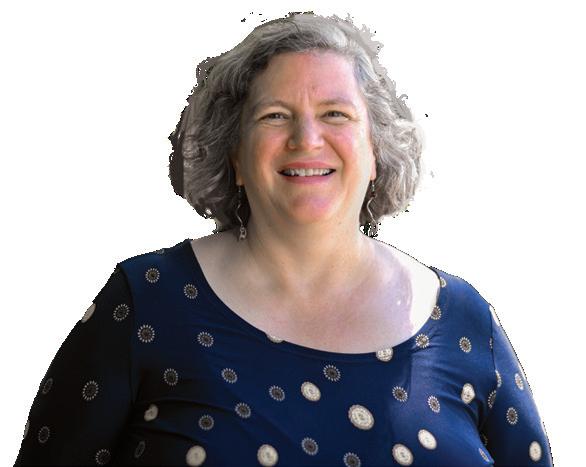
Read more: go.uvm.edu/prokopy
SIGNED AND SEALED
A new collective bargaining agreement between the University of Vermont and UVM Staff United was approved this spring by the UVM Board of Trustees and ratified by the union’s membership. The new three-year agreement includes updates to compensation and classification, enhanced and clarified employee benefits, and other improvements to the previous contract from 2022.
Read more: go.uvm.edu/sucontract
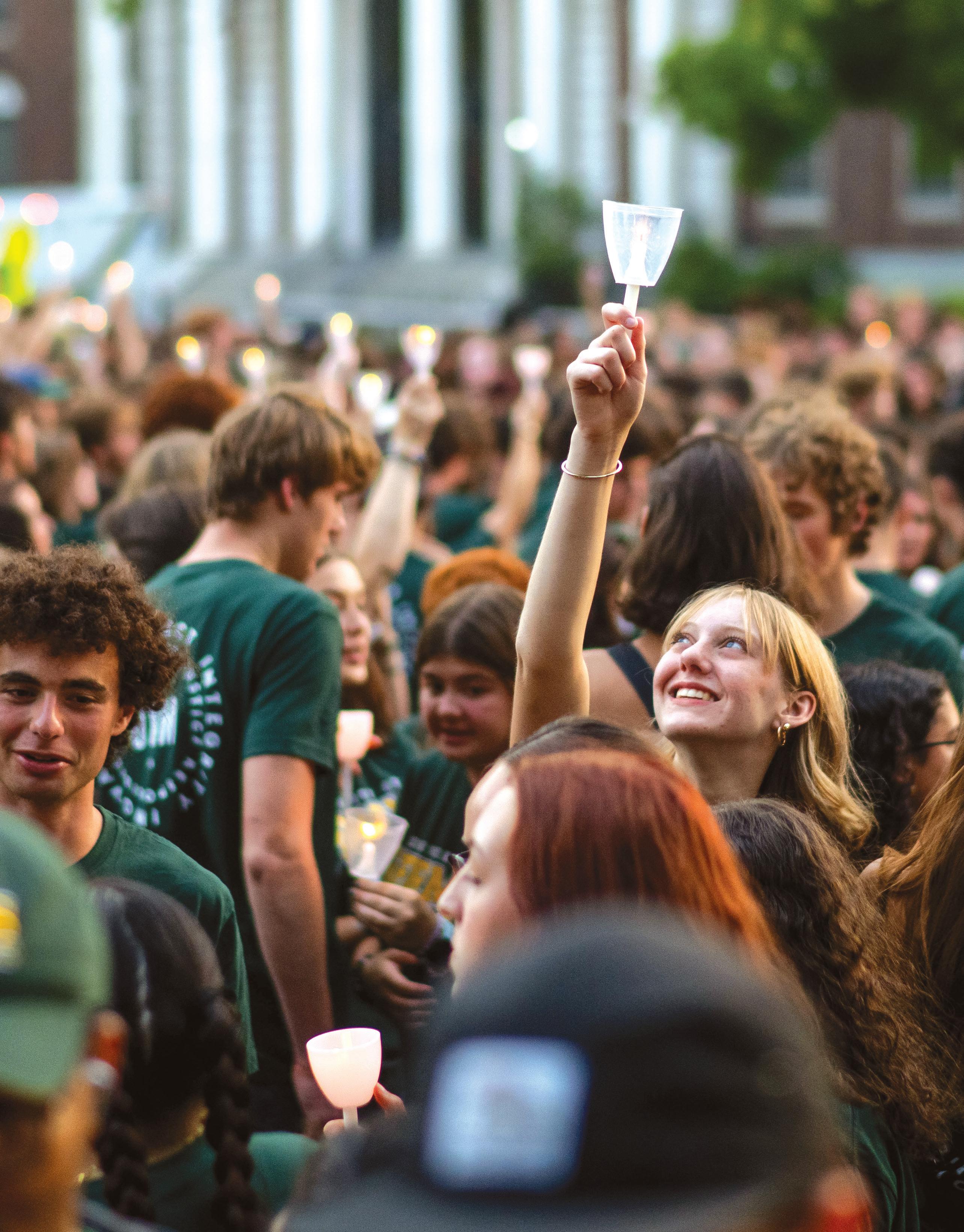
NEW ARRIVALS
A new cohort of Catamounts, the Class of ’29, descended upon campus this August from all over the country—and the world—and it showed increases in both first-generation students and men. Members of the new class hail from 48 states, and the number of Vermont students continues to be strong —a key component in UVM’s service to the people of the Green Mountain State as a land-grant institution.
Scan this QR, or visit go.uvm.edu/fall25start to watch a video of this UVM tradition.
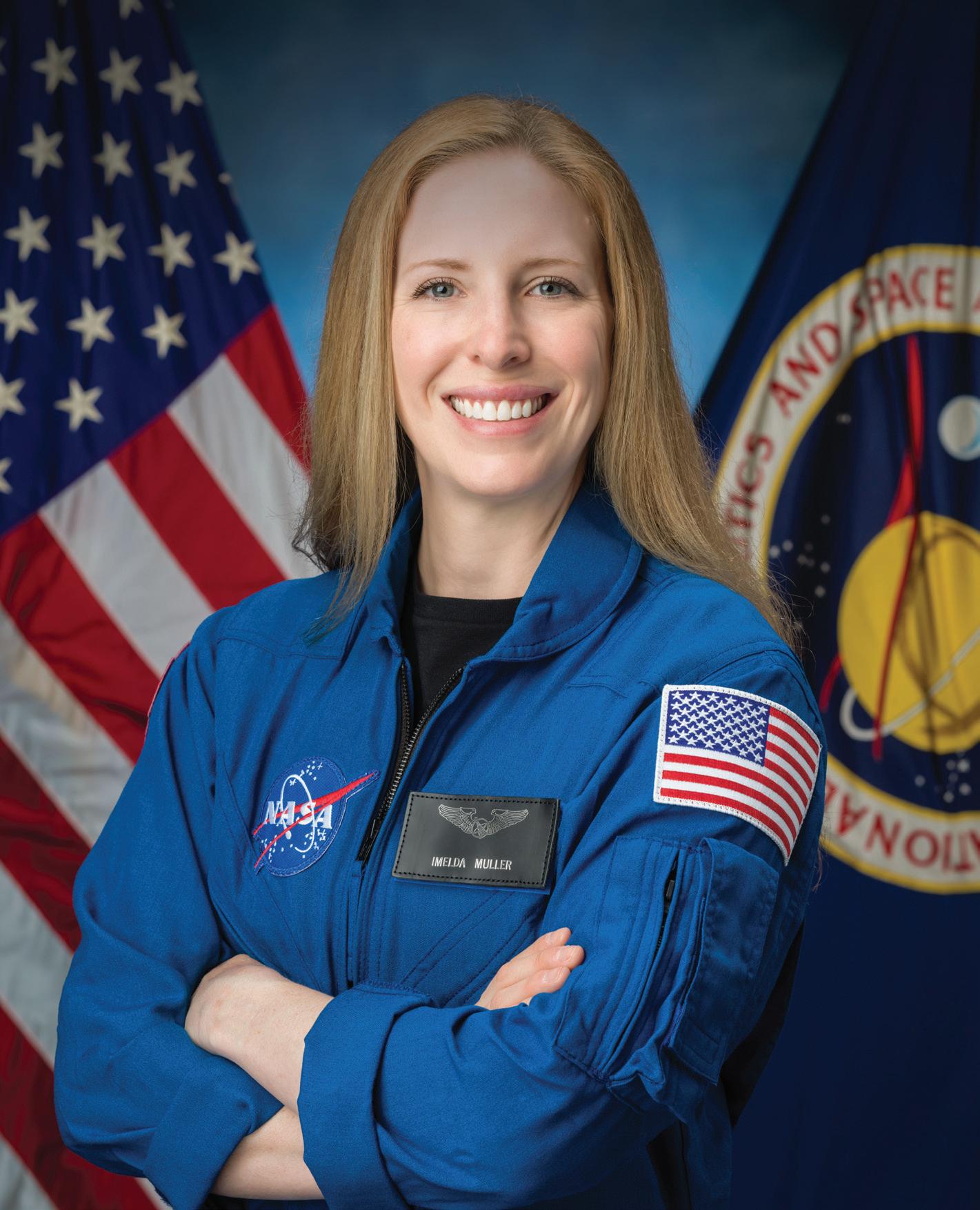
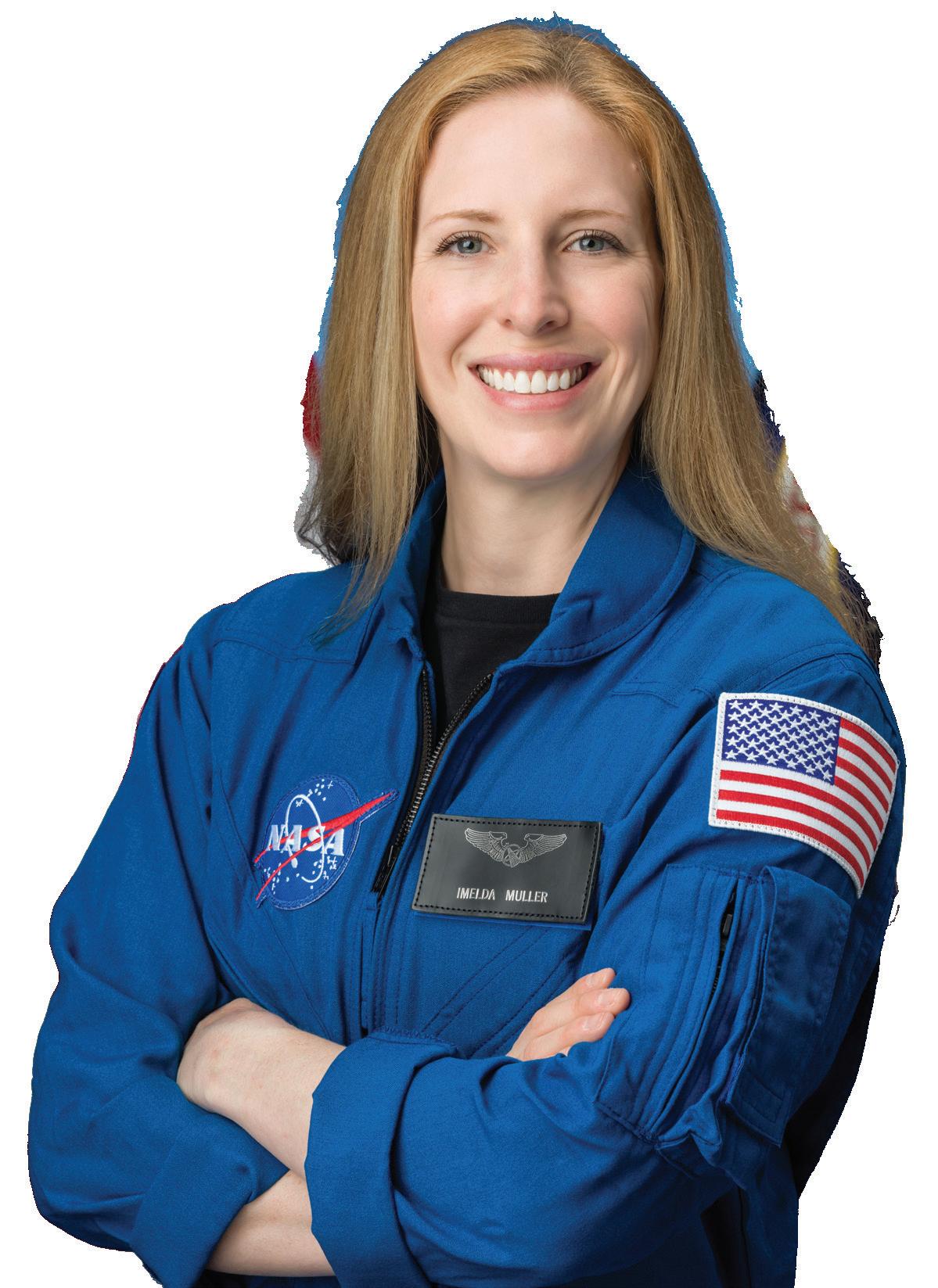
just in space, but in areas of human health here on earth,” said Muller. “The future of space medicine is now, and I’m incredibly honored to be here with this team.”
We are pushing the boundaries of human performance and the lessons that we learn, the knowledge that we gain ...are going to help us to excel not just in space, but in areas of human health here on earth.
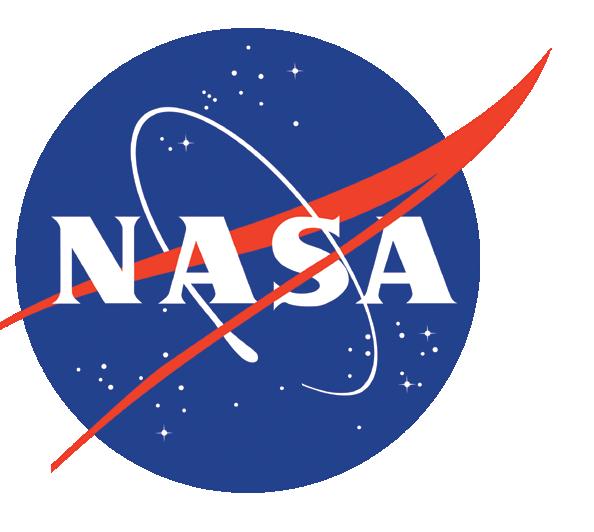
UVM Medical Alum Named NASA Astronaut Candidate
Larner grad with the “right stuff” selected for NASA’s new class of astronaut candidates.
ALUMNI | Graduates of UVM’s Larner College of Medicine have practiced medicine around the globe; now, one Larner alum is poised to work above the globe–possibly far, far above it. On September 22, NASA named Imelda Muller, M.D., as one of ten new members of its next class of astronaut candidates.
The ten astronaut candidates were selected from a pool of nearly 8,000 applicants. Muller’s class is the 24th group of astronaut candidates to be selected by NASA since the first–the famed
“Mercury Seven”–were chosen in 1959.
Muller, who grew up in Copake Falls, N.Y., received her UVM medical degree in 2017. Prior to entering medical school, she earned a bachelor’s degree in behavioral neuroscience from Northeastern University.
“With upcoming exploration missions, we are pushing the boundaries of human performance and the lessons that we learn, the knowledge that we gain, all of these things are going to help us to excel not
Muller is a former lieutenant in the U.S. Navy and, after training at the Naval Undersea Medical Institute, served as an undersea medical officer. She later provided medical support for Navy operational diving training at NASA’s Neutral Buoyancy Laboratory at the Johnson Space Center in Houston.
After receiving her medical degree from UVM, Muller went on to a transitional year at the Naval Medical Center in San Diego, Calif., and later entered a residency in anesthesia and critical care medicine at Johns Hopkins School of Medicine. At Hopkins she has also been associated with its Human Spaceflight Lab.
“The UVM community is thrilled to see Dr. Imelda Muller joining NASA’s newest cadre of astronaut candidates,” said UVM President Marlene Tromp, who was present at the announcement event at the Johnson Space Center. “UVM’s Larner College of Medicine has always produced physicians who make a positive and profound impact on Vermont and the wider world. It’s wonderful to think that
Dr. Muller has already extended that mission to the depths of the seas, in her work for Naval Sea Systems, and now into the stars. We are so proud to call Dr. Muller a UVM alum.”
Muller and her nine fellow astronaut candidates will now begin a two-year training regimen that will include courses in geology, training in land and water survival, and simulations of spacewalks in the Neutral Buoyancy Lab.
At the NASA announcement, Muller reflected on her work as an undersea medical officer with the Navy, and its applicability to her future work.
“That experience gave me the opportunity to work with multidisciplinary teams in experimental and saturation diving, and I developed a passion for learning about the way the body adapts in extreme environments,” said Muller. “This led me to pursue medical residency training in anesthesia, where I deepened that understanding of how our body responds when it’s under stress.”
UVM maintains a close research connection with NASA, the most prominent being the Vermont Space Grant Consortium, part of a national network of colleges and universities connecting NASA with the educational and research institutions of the United States. The Space Grant is a NASA partner dedicated to connecting Vermonters interested in science, technology, engineering, and mathematics with opportunities to work on NASA projects or alongside NASA professionals. In addition, a number of fourth-year Larner medical students have taken part in NASA’s four-week Aerospace Medicine Clerkship at the Johnson Space Center.
Historic $16 Million Gift Will Expand UVM Nursing Scholarships
NURSING | George Bemis, M.D., a member of the UVM Class of 1960, has made a landmark estate commitment— currently valued at $16 million—to the university in honor of his late wife, Nancy Wicks Bemis, R.N., who studied nursing at UVM in the late 1950s. As the largest gift in the history of the College of Nursing and Health Sciences (CNHS), the bequest will significantly expand access to nursing education through scholarships for undergraduate and graduate students.
“This historic investment in nursing scholarships opens doors for more students pursuing one of the most critical professions in our country,” said UVM President Marlene Tromp. “At a time when the United States faces a serious nursing shortage, strengthening nursing education at UVM not only supports Vermont’s communities but also contributes to addressing the urgent need for nurses nationwide. Dr. Bemis takes a rightful place in the pantheon of UVM’s most generous and thoughtful donors, and Nancy’s name will be cherished by generations of students who will benefit from his remarkable gift.”
The Nancy Wicks Bemis, R.N. Endowment will provide scholarship assistance for undergraduate and graduate nursing students with financial need who demonstrate potential to become future leaders in the profession. Priority will be given to students who are Vermont residents. Once fully invested, the endowment is predicted to more than double the annual donor-funded scholarship aid currently designated for nursing students.
“Dr. Bemis’s commitment—among the largest in UVM history—will transform nursing education at UVM,” said Kathleen Kelleher, interim president and CEO of the UVM Foundation. “His vision and generosity will ensure that Vermont and the nation continue to benefit from highly skilled, compassionate nurses in perpetuity.”
Nancy Wicks Bemis overcame countless
obstacles in her pursuit of nursing. She began her education at UVM but had to pause her studies after marrying George in 1958—at the time, married students were not permitted in the nursing program. Still, her desire to be a nurse never wavered. After raising a family, she completed her nursing education at age 50 at the College of St. Catherine in St. Paul, Minn. Just three months later, she was diagnosed with metastatic breast cancer and given a 3 percent chance of surviving five years. Defying the odds, she lived 26 more years, passing away in 2017, at 77, after a brief battle with ALS.
“UVM was and is of great importance to both Nancy and me,” said Dr. Bemis. “I am pleased to be making this commitment to the College of Nursing and Health Sciences as a lasting tribute to Nancy.”
Bemis has been a steadfast supporter of UVM for more than 50 years and is a strong proponent of nursing and medical student education. After graduating from UVM in 1960, he earned a medical degree from the University of Cincinnati in 1964. He led a distinguished career as an OB/GYN doctor in the U.S. Air Force that spanned nearly 30 years. He earned an MBA from the University of St. Thomas in 1988 and retired from the Air Force in 1991 while in the process of a promotion to full colonel. Now retired from his medical practice, he lives in Lakeville, Minn.
News of the scholarship commitment has been met with an outpouring of gratitude across CNHS. “By removing financial barriers to enrollment in our nursing program, the Nancy Wicks Bemis, R.N. Endowment will pave the way for us to welcome countless students who call Vermont home,” said Rosemary Dale, chair of the Department of Nursing.
“This estate commitment is a fitting celebration of Mrs. Bemis’s life and work and an inspiring show of confidence in the college,” said Noma Anderson, dean of CNHS. “We could not be more grateful to Dr. Bemis.”
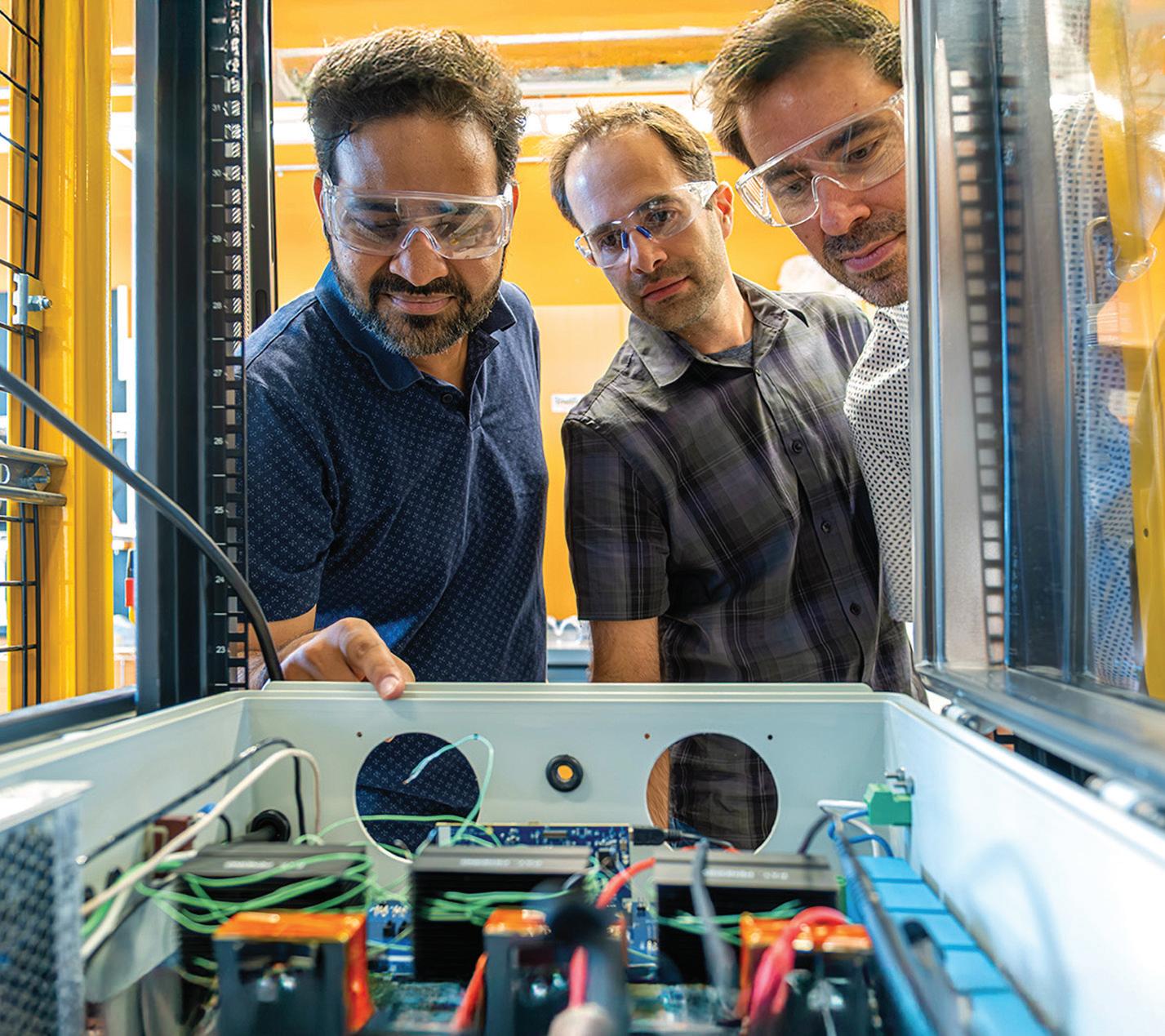
Powering the Future: UVM Tackles Grid
Resilience and Renewable Energy Challenges
Research Associate Tanmay Mishra, Associate Professor Hamid Ossareh, and Associate Professor Mads Almassalkhi examine new hardware in the Accelerated Testing Laboratory.
INNOVATION | The confidence we enjoy when we turn on any of the dozens of electrical devices plugged in throughout our homes and offices belies a growing challenge engineering researchers are facing to ensure it remains that way, with the complex interplay between expanding demand and the broadening role of clean energy sources that place unprecedented stress on the nation’s aging power infrastructure.
UVM faculty and student researchers in the Center for Resilient Energy & Autonomous Technologies in Engineering (CREATE) have recently launched a new powerful laboratory in the university’s STEM complex that aims to accelerate the development of new grid technologies and advanced approaches to address many of the nation’s emerging energy challenges.
Aptly named the Accelerated Testing Lab (ATL), a team of College of Engineering and Mathematical Sciences faculty and graduate student researchers spent much of this spring and summer setting up advanced equipment and systems to test, in real
time, the control algorithms they’re developing for a wide range of energy research challenges.
Led by CREATE Executive Director Mads Almassalkhi and Co-director Hamid Ossareh, a research team composed of Research Associate Tanmay Mishra and Graduate Research Assistants Madiha Akbar and Arash Omidi have worked collaboratively to begin to explore the new hardware’s potential to expedite their research from white board brainstorming to functioning simulations and physical experiments.
“During the last couple of years, we have been working towards verification capabilities to test the algorithms we build and then loop these tests together with certain grid simulations,” said Almassalkhi. “We want to demonstrate real engineering impact as opposed to just academic study.”
We want to demonstrate real engineering impact as opposed to just academic study.
Much of the focus for the new lab is on understanding the multifaceted impacts of integrating and controlling hybrid energy systems, which are systems that integrate various energy generation, storage, and conversion technologies, into the existing electrical grid. While the benefits of diversifying the grid with responsive hybrid energy systems include positive impacts such as reduced greenhouse gas emissions and enhanced energy independence from clean energy sources, the challenges for widespread implementation are complex and call into question the reliability and resilience of our current energy infrastructure.
For example, both solar and wind energy generation systems are weather-dependent and subsequently variable, which can lead to fluctuations in power supply. As a result, modern electrical grids require additional flexibility, energy storage solutions, and sophisticated distributed energy resource management systems and controllers. As the renewable energy power generation ebbs and flows, our grid needs to be able to seamlessly store an influx of excess energy and then release that energy at the right time and place. Essentially, grid operators need to solve complex energy riddles in real time, all the time, and the ATL helps CREATE researchers test Vermont-grown solutions to those riddles.
JOSHUA BROWN
Supporting Vermont’s Sweetest Industry
New Maple Syrup Quality
Testing Lab Serves
Vermont Producers.
AGRICULTURE | A nearly $200,000 grant from the Leahy Institute for Rural Partnerships has enabled UVM’s Extension Maple Program to found a firstof-its-kind lab in the U.S. that promises to be a game changer for the maple industry.

The new Maple Syrup Quality Testing Lab project is being led by Extension Maple Program Leader Mark Isselhardt, along with Extension Maple Quality Specialist Joanna Haas. In addition to the support of the Leahy Institute, additional funding came from UVM’s Food Systems Research Institute. The project represents a partnership between UVM and Vermont Maple Sugar Makers Association (VMSMA) to offer long-needed quality-control services to Vermont producers for one of Vermont’s most iconic products.
Allison Hope, VMSMA’s executive director, is enthusiastic about this resource for the state’s maple producers. “Maple quality is such a foundational part of the Vermont Maple brand and the pride that the state’s sugar makers have in their products–rightfully so!” Hope said. “Additional resources to help ensure that producers continue to make high-quality syrup that meets the state’s regulations is beneficial to the entire industry and provides value to consumers as well. We look forward to working with Mark and Joanna to share information with our members about how to access the new Quality Lab, year-round.”
Maple syrup production is a cornerstone of Vermont’s agricultural economy and cultural heritage. The success and continued growth of Vermont maple syrup in the global marketplace relies on the industry’s ability to consistently deliver a top-quality product. Over the past four years, UVM Extension has noted that some retail maple syrup is not up to Vermont Grade A
Maple quality is such a foundational part of the Vermont Maple brand and the pride that the state’s sugar makers have in their products–rightfully so!
standards. This finding aligns with data from retail inspections published by the Vermont Agency of Agriculture, Food and Markets. When maple syrup that fails to meet Grade A standards reaches the marketplace, it can impact the entire industry. Consumers who are disappointed by the product may choose to purchase a different product entirely or select syrup from a different region.
The new lab is equipped with the staff and instrumentation required to perform testing to discern syrup quality accurately and consistently, and will test syrup for compliance in all four attributes of Grade A quality: color, clarity, density, and flavor. The lab is housed within UVM’s Proctor Maple Research Center, a facility that has worked side-by-side with Vermont’s maple producers for more than 75 years.
Use a mobile camera or visit go.uvm.edu/maplequal to watch a video about this new testing lab.
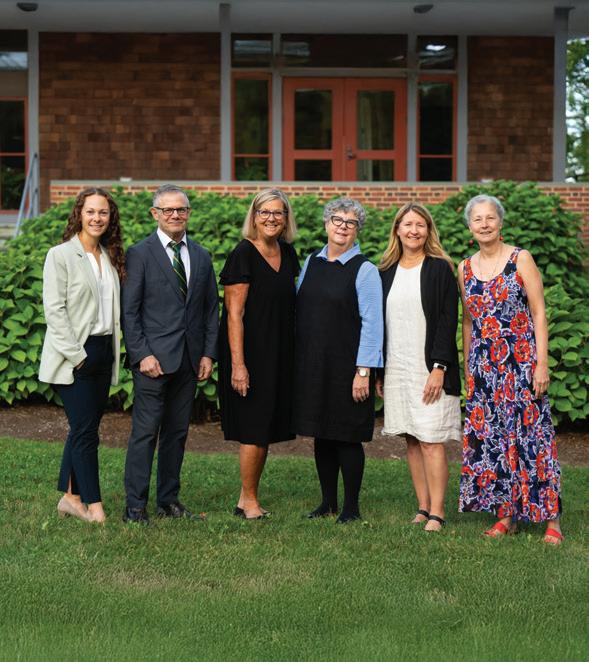
2025 Presidential Our Common Ground Staff Award Recipients Announced
STAFF | On Thursday, September 19, President Marlene Tromp announced the recipients of the 2025 President’s Our Common Ground Staff Awards. Since 2014, these awards have celebrated staff members who exemplify UVM’s core values of respect, integrity, innovation, openness, justice, and responsibility. Together, known as Our Common Ground, these aspirations guide the university community. This year’s honorees, pictured left to right, are: Genevieve Anthony, Assistant Dean for Business Operations at the Patrick Leahy Honors College; Tim Bilodeau, Chief of Police, UVM Police Services; Sharon Mone, Director, Office of Accessibility Services; Barbara Stewart, Administrative Coordinator, College of Arts and Sciences; Lori Durieux, Business Manager, Department of Family Medicine; and Gail Shampnois, Director of the Office of Student and Community Relations.
Scan this QR or visit go.uvm.edu/ocg25 to read more about award recipients.
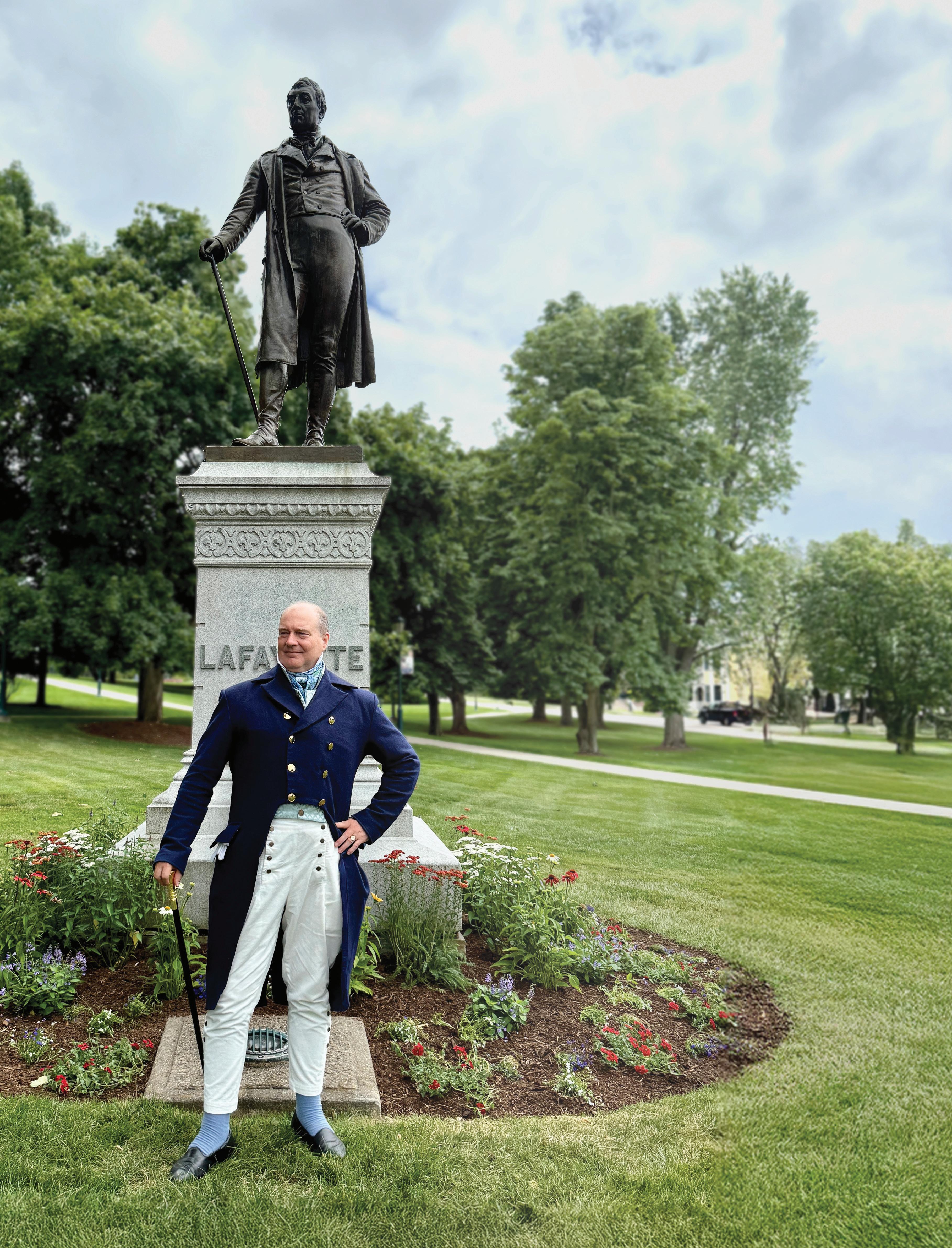
Celebrating a Campus Bicentennial
HISTORY | On an early summer evening in 1825, the enthusiasm of an American Revolutionary War hero for the country he’d helped found and the hopes and dreams of the people of a Vermont wilderness town came together on the top of the hill overlooking Lake Champlain.
The Marquis de Lafayette, former general in the Continental Army, returned to the young United States in 1824 to tour the country whose independence he’d fought to secure nearly 50 years before. Over the course of 13 months, General Lafayette visited all the then 24 United States. In late June of 1825, he crossed over the Connecticut River at Windsor and traveled by carriage to Montpelier and, on the 29th of June, to Burlington. In Burlington he was feted by the townspeople and, late in the day, took part in a cornerstone laying ceremony for the new building of the University of Vermont, the structure now known as Old Mill. (See “The Cornerstone,” in the Spring 2025 UVM Magazine.)
“I am sure that the young sons of Vermont will ever evince in their studies the same ardor and perseverance which at all times and on every occasion have characterized the spirited inhabitants of the Green Mountains,” said Lafayette, addressing the gathering.
On June 29, 2025, exactly 200 years after Lafayette’s visit, the laying of Old Mill’s cornerstone was commemorated with a reenactment featuring a portrayal of the general by Michael Halbert of the American Friends of Lafayette, a reprise of UVM President Willard’s 1825 dedication address by UVM past president Daniel Mark Fogel, and a formal cornerstone rededication ceremony by members of the Grand Masonic Lodge of Vermont.
Use a mobile camera or visit go.uvm.edu/oldmill200 to read more about the elaborate Masonic rededication ceremony.
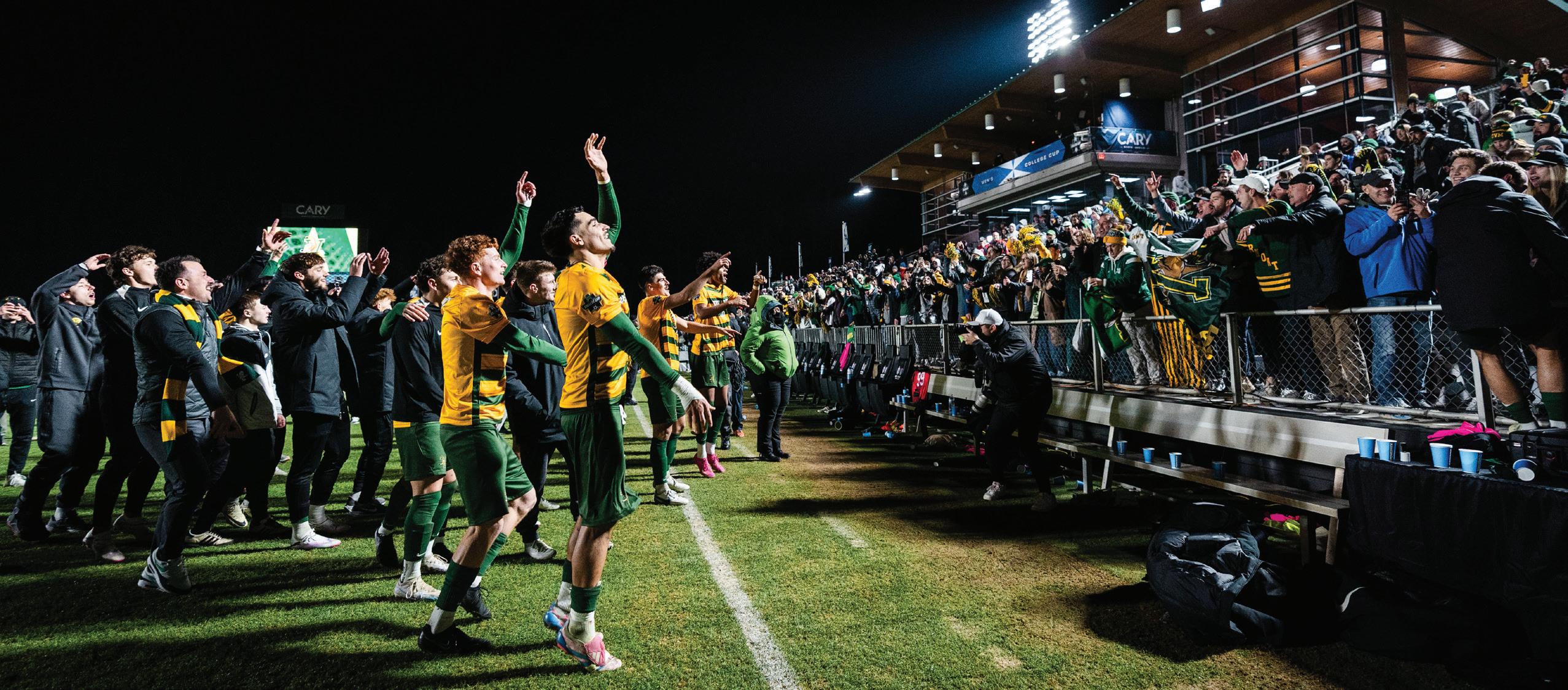
VERMONT EARNS THIRD STRAIGHT AMERICA EAST ACADEMIC CUP
Top: The 2024-25 UVM men’s soccer team celebrates with their fans after the penalty kick victory over Denver in the College Cup Semifinals.
Bottom: Catherine Gilwee makes a move to the basket against North Carolina State in the first round of 2025’s March Madness.
The America East Conference announced this summer that the University of Vermont’s studentathletes secured the athletic department’s record 11th Walter Harrison Academic Cup.
The Walter Harrison Academic Cup is presented each season by the conference to the institution with the best cumulative GPA among its student-athletes competing in league sports.
Vermont earned the 2024-25 honor, its third in a row, with a cumulative GPA of 3.54, the second highest GPA in conference history.
“This is another very proud moment for UVM Athletics and a fitting conclusion to a remarkable year in Catamount Country,” said Director of Athletics Jeff Schulman. “Our student-athletes truly represent the best of college athletics. Their success in the classroom and in competition is a testament to their discipline, resilience, and commitment to excellence in all that they do. A big thank you to our coaches and staff, especially those on our Academic Services team who consistently go above and beyond in supporting our student-athletes’ academic success, and to UVM faculty and our campus partners who have created an academic community that supports student success across the entire student body.”
Vermont had seven different programs earn at least a 3.50 GPA, led by women’s soccer (3.78), women’s swimming and diving (3.72), and

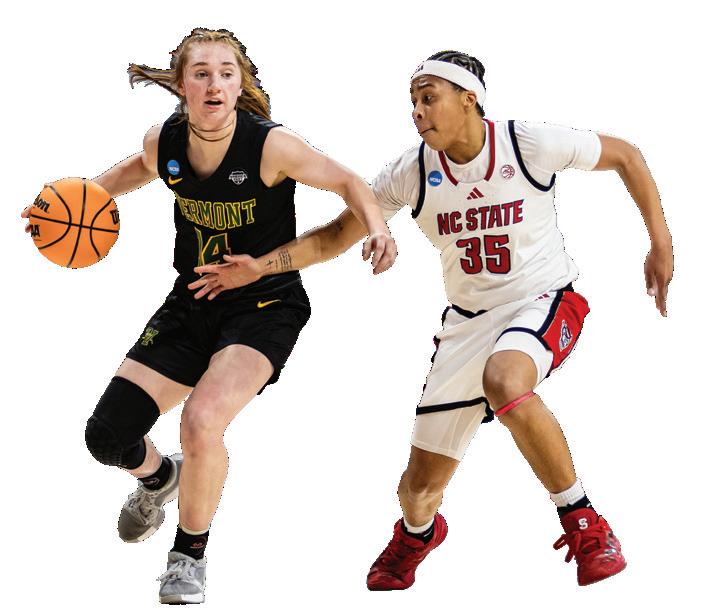
“ANOTHER VERY PROUD MOMENT FOR UVM ATHLETICS
women’s track and field (3.67). The Catamounts were one of three America East programs where all their sponsored sports earned at least a 3.0 GPA. Vermont men’s basketball (3.09) and women’s soccer (3.78) were the top-performing America East programs in their sport.
The Academic Cup, established by the America East Board of Directors in 1995, is presented to the institution whose student-athletes post the highest grade-point average during that academic year. The award was named for longtime University of Hartford President Walter Harrison, in 2017. America East studentathletes averaged a 3.40 GPA overall in 2023-24, the second highest in conference history. It’s the 20th consecutive year America East studentathletes have averaged better than a 3.0 GPA.
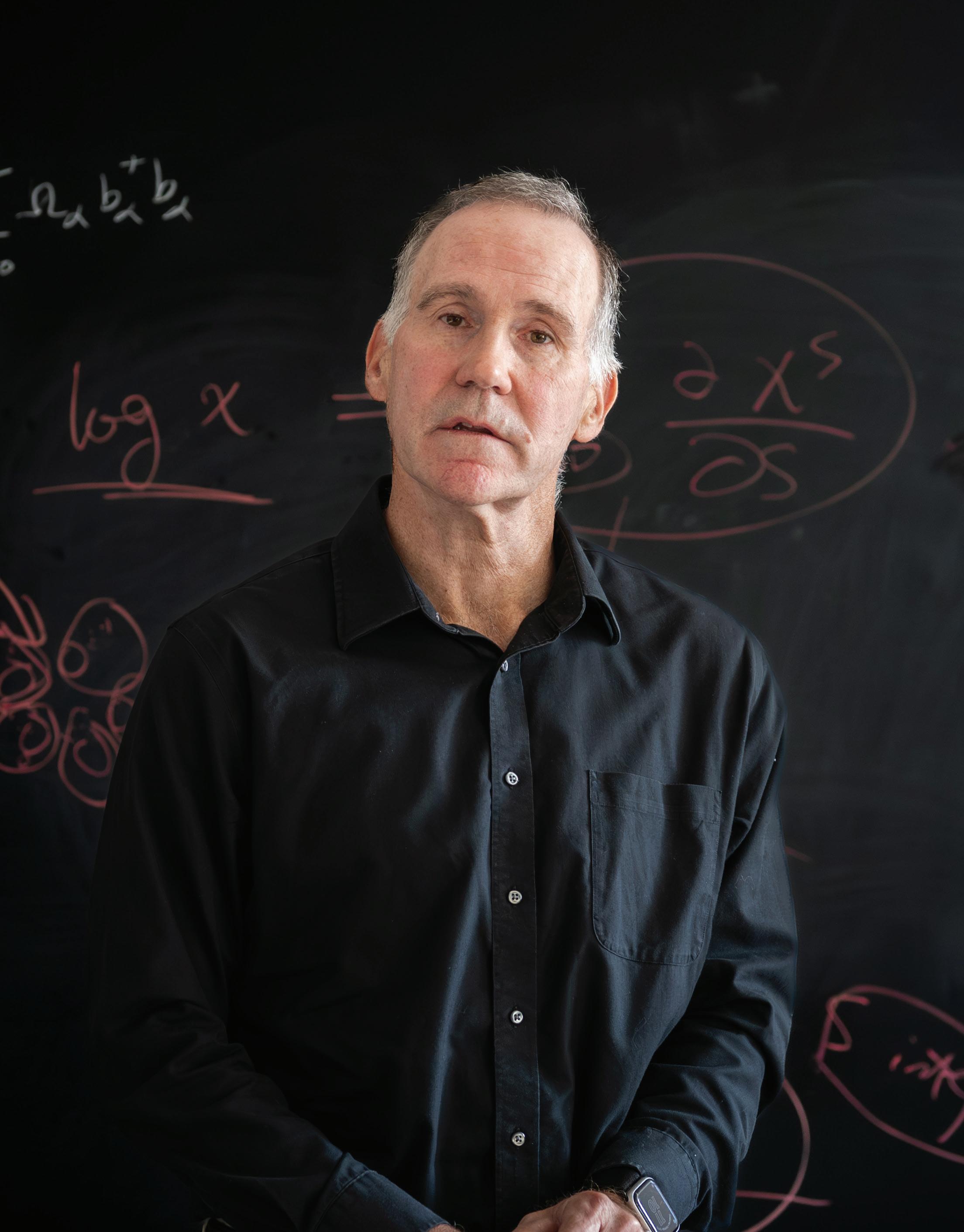
A Lamb in Quantum Clothing
A UVM physicist and his student solve a 90-year-old mystery
STORY BY JOSH BROWN
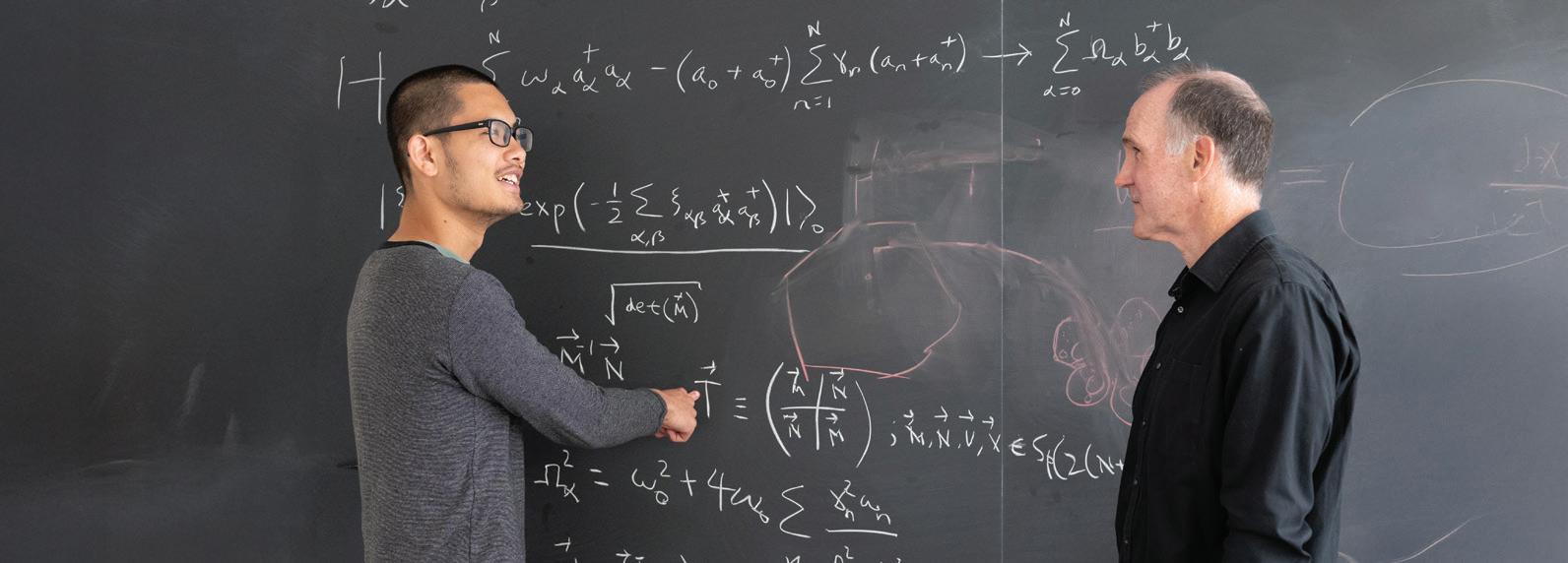
A plucked guitar string can vibrate for seconds before falling silent. A playground swing, emptied of its passenger, will gradually come to rest. These are what physicists call “damped harmonic oscillators” and are well understood in terms of Newton’s laws of motion.
But in the tiny world of atoms, things are strange—and operate under the bizarre laws of quantum physics. UVM professor Dennis Clougherty and his student Nam Dinh wondered if there are systems in the atomic world that behave like the vibrating motion of a guitar string in the Newtonian world. “If so, can we construct a quantum theory of the damped harmonic oscillator?” Clougherty wondered.
In a study published July 7, 2025, in the journal Physical Review Research, he and Dinh did just that: found an exact solution to a model that behaves as a “damped quantum harmonic oscillator,” they write—a guitar-string type of motion at the scale of atoms.
It turns out that for roughly 90 years, theorists have tried to describe these damped harmonic systems using quantum physics—but with limited success. “The difficulty involves preserving Heisenberg’s uncertainty principle, a foundational tenet of quantum physics,” says Clougherty, a professor of physics at UVM since 1992. Unlike the human-scale world of, say, bouncing balls or arcing rockets, the famed Heisenberg uncertainty principle shows that there is a fundamental limit to the precision with which the position and momentum of a particle can be known simultaneously. At the scale of an atom, the more accurately one property is measured, the less accurately the other can be known.
LAMB CHOPPED
The model studied by the UVM physicists was originally constructed by British physicist Horace Lamb in 1900, before Werner Heisenberg was born, and well before the development of quantum physics. Lamb was interested in describing how a vibrating particle in a solid could lose energy to the solid. Using Newton’s laws of motion, Lamb showed that elastic waves created by the particle’s motion feed back on the particle itself and cause it to damp—that is, to vibrate with less and less energy over time.
“In classical physics, it is known that when objects vibrate or oscillate, they lose energy due to friction, air resistance, and so on,” says Dinh. “But this is not so obvious in the quantum regime.”
Clougherty and Dinh (who graduated from UVM in 2024 with a B.S. in physics and in 2025 with a master’s degree, and is now pursuing a Ph.D. in mathematics)— with support from the National Science Foundation and NASA—reformulated Lamb’s model for the quantum world and found its solution. “To preserve the uncertainty principle, it is necessary to include in detail the interaction of the atom with all the other atoms in the solid,” Clougherty explains. “It’s a so-called many-body problem.”
TINY TOOLS?
How did they solve this problem? Hold onto your seat. “Through a multimode Bogoliubov transformation, which diagonalizes the Hamiltonian of the system and allows for the determination of its properties,” they write, yielding a state
called a “multimode squeezed vacuum.” If you missed a bit of that, suffice it to say that the UVM researchers were able to mathematically reformulate Lamb’s system so that an atom’s oscillating behavior could be fully described in precise terms.
And precisely locating the position of one atom could lead to something like the world’s tiniest tape measure: new methods for measuring quantum distances and other ultra-precision sensor technologies.
By reducing this uncertainty, one can measure position to an accuracy below the standard quantum limit.
These potential applications emerge from an important consequence of the UVM scientists’ new work: it predicts how the uncertainty in the position of the atom changes with the interaction to the other atoms in the solid. “By reducing this uncertainty, one can measure position to an accuracy below the standard quantum limit,” Clougherty says. In physics, there are some ultimate limits, like the speed of light—and that Heisenberg’s uncertainty principle prevents perfect measurement of a particle. But this uncertainty can be reduced beyond normal limits by certain quantum tricks—in this case, calculating the particle’s behavior in a special “squeezed vacuum” state which reduces the noise of quantum randomness in one variable (location) by increasing it in another (momentum).
This kind of mathematical maneuver was behind the creation of the first successful gravitational wave detectors, which can measure changes in distance one thousand times smaller than the nucleus of an atom—and for which the Nobel Prize was awarded in 2017. Who knows what the UVM theorists’ discovery of a new quantum solution to Lamb’s century-old model might reveal.
JOSHUA BROWN
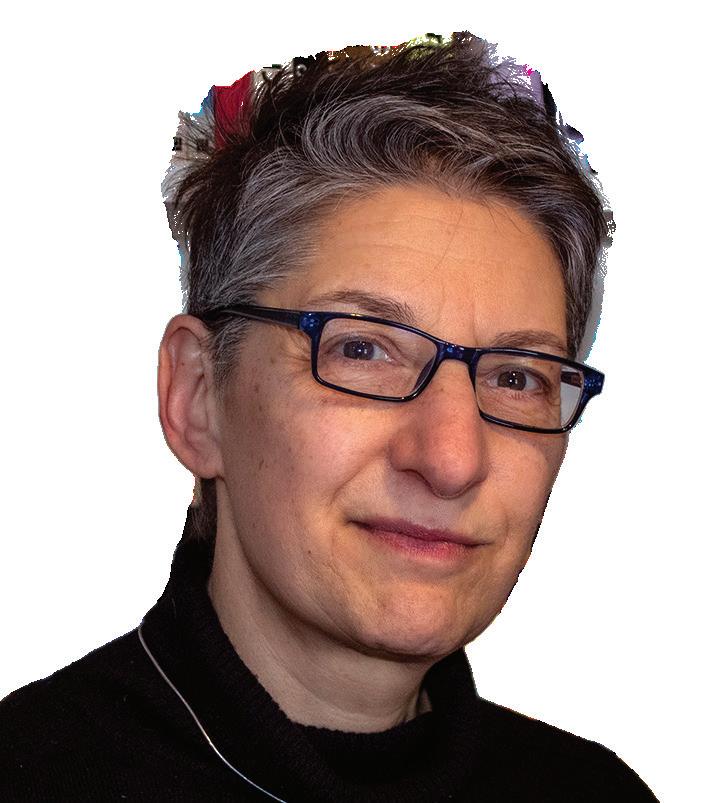
FELICIA KORNBLUH
Throughout her career, Felicia Kornbluh, Ph.D., a UVM professor of history and director of the Jewish Studies program in the College of Arts and Sciences, has shown a knack for illuminating the present through the lens of the past, and that ability has earned her well-deserved recognition–most recently the prestigious Martin Duberman Visiting Fellowship from the New York Public Library.
A glance at Kornbluh’s CV reveals an extensive list of public-facing work, including op-eds and articles for many prominent publications, as well her recent book, A Woman’s Life Is a Human Life: My Mother, Our Neighbor, and the Journey from Reproductive Rights to Reproductive Justice, winner of the 2024 Independent Publisher Book Award for Women’s Issues. She also writes regular content for her bold, incisive Substack, “History Teaches….” Kornbluh uses her deep knowledge of history to provide context and clarity to complicated issues affecting the LGBTQ+ community, women, and disabled people, writing about them in a way that resonates with a broad audience.
UVM writer Su Reid-St.John sat down with Kornbluh to talk about her research, her inspirations, and what history can teach us about what’s happening in the world today—and what’s to come.
TELL US ABOUT THE RESEARCH YOU’LL BE DOING AT THE NYPL.
KORNBLUH: I’m writing a book about the Sharon Kowalski case, which lasted from 1983 to 1991. At that time, it was something that almost everybody in the gay, disability, and feminist communities would have known about. It really was a starting point for the marriage equality movement.
CAN YOU TELL US A BIT ABOUT THE CASE?
FK: Back in the early ’80s, a woman named Sharon Kowalski became disabled because of a drunk driving accident. She shared a home with her lesbian partner, Karen Thompson, and they had exchanged rings and made a lifetime commitment to each other. But Thompson soon discovered she had absolutely no rights. She couldn’t make healthcare decisions and wasn’t even allowed to see Kowalski in the ICU because she wasn’t considered family.
Kowalski’s parents became her legal guardians and made all the decisions. They rejected the idea that she was gay and refused to let Thompson have any meaningful role in her life. And that became the battle: What standing does a same-sex relationship have in legal or medical situations? It became a kind of national educational opportunity and wake-up call. And, of course, it was happening at the same time as the AIDS crisis, which was giving rise to the same questions.
The case took nearly 10 years to resolve. Part of what I’m writing about is that, during that decade—which was a really conservative time in our history—there was this rich, robust world of feminist publishing that reported all the twists and turns of the case and illustrated how gay people, women, and disabled people were being shut out from the world of legal decision making. But that publishing world had pretty much disappeared by the early ’90s. I interviewed the founder of one lesbian feminist publishing house who said
to me, “We couldn’t imagine that this world wouldn’t go on forever.”
LOOKING AT THE HISTORY OF HOW THESE MOVEMENTS TEND TO START WHEN THEY’RE MOST NEEDED, DO YOU SEE ANY RUMBLINGS OF A RESURGENCE NOW THAT THE CHALLENGES FACING THESE GROUPS ARE INCREASING ONCE AGAIN?
FK: Lesbian feminism is sort of having a moment right now, and I think it does have something to do with a legacy of building these resistant institutions. They’re built on volunteerism, on young people’s energy and their capacity to think through new things. The people I’m writing about saw a problem they felt passionate about, so they built a solution, even without mainstream support. I think there’s a lot to learn there. Once people really put their shoulders to it, they can change things very fast in terms of both public opinion and the legal system. I find that hopeful.
YOU WRITE FREQUENTLY FOR PUBLICFACING OUTLETS. WHO DO YOU SEE AS YOUR PRIMARY AUDIENCE?
FK: I think there’s a big audience out there—people who are engaged and interested and want to go beyond the clickbait. Among other things, I think I can perform a service because I’m good at reading and understanding constitutional law cases, knowing what the stakes are, and explaining that in a journalistic way.
There’s so much bias around the issues of abortion, reproductive rights, and the trans community, and the discourse is often hostile and unsophisticated. I’m trying to speak to people who are sympathetic and know enough about the issues to know the mainstream isn’t getting it right.
WHY IS HISTORICAL CONTEXT IMPORTANT WHEN WE ARE TALKING ABOUT THESE SORTS OF ISSUES?
FK: History helps us see not only that things can be different, but also how things became what they are. As an historian, I believe legal and constitutional meanings change
over time. The Constitution has plenty of room in it to accommodate the needs of a diverse population. Change is part of the story of America. It’s part of the story of our law. It’s part of the story of our Constitution. If the American legal system is going to be a good system, it has to be a system that accommodates new knowledge and new communities that come forward and demand their rights. And I think we as a community of writers and scholars can play an important role in that.
CAN YOU TALK A LITTLE BIT ABOUT WHAT ORIGINALLY SPARKED YOUR INTEREST IN THESE KINDS OF ISSUES?
FK: My mother was a lawyer and, when I was three years old, was the original drafter of the legislation that decriminalized abortion in New York. So, it’s fair to say I got it from her. And then when I was nine, I became a journalist for an organization called Children’s Express. The very first story I did was about a young woman named Sybil Luddington, who was like the Paul Revere of her town in upstate New York. She warned the residents of her town that the Redcoats were coming and helped organize the militia so they could defend themselves before the British Army arrived.
Later, Children’s Express had a magazine and a syndicated column with the United Press International. With a small team (another 13-year-old, an 18-year-old editor, and our adult publisher) I reported on the children of Cambodia who were driven into refugee camps when the Communist Khmer Rouge took over the country. We published an article in Rolling Stone magazine and were on TV. I also reported from the Soviet Union when I was in high school. I went to Hiroshima, Japan, and led dialogues between American and Japanese kids about their fears regarding nuclear war. My work was part of a package by Children’s Express that was nominated for a Pulitzer Prize. I worked for Children’s Express until I graduated from high school. That was the launching point for me.
HOW DO YOU SEE HISTORICAL PATTERNS BEING REPEATED IN TODAY’S POLITICAL AND SOCIAL CLIMATE?
FK: I don’t want to be too sanguine about it, but I do hear people in my LGBTQ+ activist and scholarly circles saying we’ve been here before and we know how to survive. We survived a time when we weren’t allowed to get married legally. We survived a time when we had to leave the country to get certain kinds of medical care or find networks to access those things.
Change is part of the story of America. It’s part of the story of our law. It’s part of the story of our Constitution.
It’s a damn shame that we appear to be going backward, and it makes me angry and disappointed and sad. But at the same time, there’s a bit of comfort in the knowledge that there were generations of people before us who survived and who made meaningful relationships and communities.
DO YOU GET FEEDBACK FROM READERS WHO DON’T AGREE WITH YOU? HOW DO YOU HANDLE THAT?
FK: I do sometimes. It’s not usually at the level of serious conversation, though. It’s more just people on the internet saying I’m stupid or ridiculous for writing what I write. Still, I know many of these issues, like medical transition for minors or trans participation in school sports, are difficult for a lot of people, and I am definitely open to having those conversations.
HOW DOES YOUR WORK IN JEWISH STUDIES FACTOR INTO ALL OF THIS?
FK: I started teaching in the newly created UVM Jewish Studies program in 2017, which was especially meaningful for me because my mom had died not long before. As I argued in my last book, a history of reproductive rights that centers around my mother’s activism on that issue, for her generation of Jewish feminists, their background as American Jews was part of what drew them into the reproductive rights movement. They didn’t have the same kinds of barriers that a lot of American Christians did because the traditional Jewish legal approach to abortion is quite different.
While my current project doesn’t have an obvious connection to Jewish studies, I am planning to do an oral history project on LGBTQ+ Jews in America that has a dual focus on Jewish lesbian feminism and the American Jewish community’s response to HIV/AIDS.
IS THERE ANYTHING ELSE YOU’D LIKE US TO KNOW?
FK: Along with my public-facing writing, I’m working on some scholarly projects. I’m co-editing a special issue of the Journal of American Constitutional History that will focus on queer American constitutional history. The starting point is the fact that this year, 2025, marks the 10th anniversary of the Obergefell Supreme Court decision, which legalized same-sex marriage nationwide. But the pieces aren’t just about marriage. At the same time, my co-editor and I are organizing a mini conference on queer legal history across the globe that will take place in conjunction with the American Society for Legal History’s annual meeting. I’m hoping that will lead to a book as well, and we already have some interest from Cambridge University Press.
You know, sometimes people feel they have to choose between academic work and public-facing work. I’m trying to keep a foot in both camps because I care about all of it.
UVMPEOPLE
MAGDALENA “MAGGIE” SORRENTINO ’25
CARRYING ON A FAMILY LEGACY
Growing up in a small rural town in western Massachusetts, Magdalena “Maggie” Sorrentino was inspired by a family tradition of teaching. Following in the footsteps of her grandfather and mother, she set forth to earn a degree and licensure to teach elementary education.
Story by Doug Gilman
“From a very young age, I knew that I wanted to become a teacher,” recalls the third-generation educator. “I was drawn to UVM’s focus on scholarship in service of children, families, and communities. It felt like a perfect fit for me.”
Beginning her career at Swanton Elementary School in the fall of 2023, Sorrentino was prepared and confident as a certified English language learner (ELL) teacher to meet the needs of all students. But she wanted to be better equipped to teach students about the structure and function of the English language itself.
Inspired by her undergraduate work as an education for cultural and linguistic diversity minor, she began graduate study as a Reading and Literacy Specialist in UVM’s Advanced Specialties in Educational Practice master’s degree program.
“I had the honor of learning alongside incredibly passionate, thoughtful, and hardworking educators striving to build strong, evidencebased literacy programming,” says Sorrentino. “As a young educator, the network of teachers provided support, knowledge and resources to integrate into my professional practice.”
Working as a first and second grade literacy specialist during her graduate studies, Sorrentino put her coursework into practice to support young students who were building their emergent literacy skills.
“I am beyond grateful for the people and students at Georgia Elementary and Middle School (GEMS) who helped me to grow as an educator and specialized literacy professional.”
With her master’s degree and three professional teaching licenses secured, she will lead her own classroom of kindergarteners at GEMS this fall.
During her graduate studies, Sorrentino worked as an executive function coach for college students and served as a student researcher on a team led by Dean Katie Shepherd and former Interim President Patty Prelock. She is proud to continue serving in both roles after graduation.
“My research focuses on the impact of executive function and social skills coaching on the wellbeing and academic engagement of neurodivergent college students,” she explains. “This is deeply meaningful work. As I continue on this research team, I hope to advance programs for neurodivergent college students at UVM.”
Faculty members Audrey Richardson, Emily Meloon, Kathleen Brinegar, and Cee Carter were instrumental in supporting her growth and influencing the pursuit of her research and professional interests. And Shepherd was a valued mentor and steadfast supporter over the past six years.
“Maggie is a shining example of a student who stretched herself and explored every opportunity available to her at UVM during both her undergraduate and graduate programs,” says Shepherd.
Throughout her journey, Sorrentino gave back to the campus community by serving in a variety of roles – as a College of Education and Social Services Student Advisory Board leader, Dean Search Committee member, academic advisor, and graduate teacher assistant.
At her undergraduate Commencement in 2023, she received the Mary Jean Simpson Award recognizing a UVM senior who best exemplifies the qualities of character, leadership, and scholarship.
She was also thrilled to be a student-athlete on the UVM cross country and track and field teams during her graduate studies. Running on the Burlington Bike Path is one of her favorite local activities, and she recently trained and competed in the Vermont City Marathon.
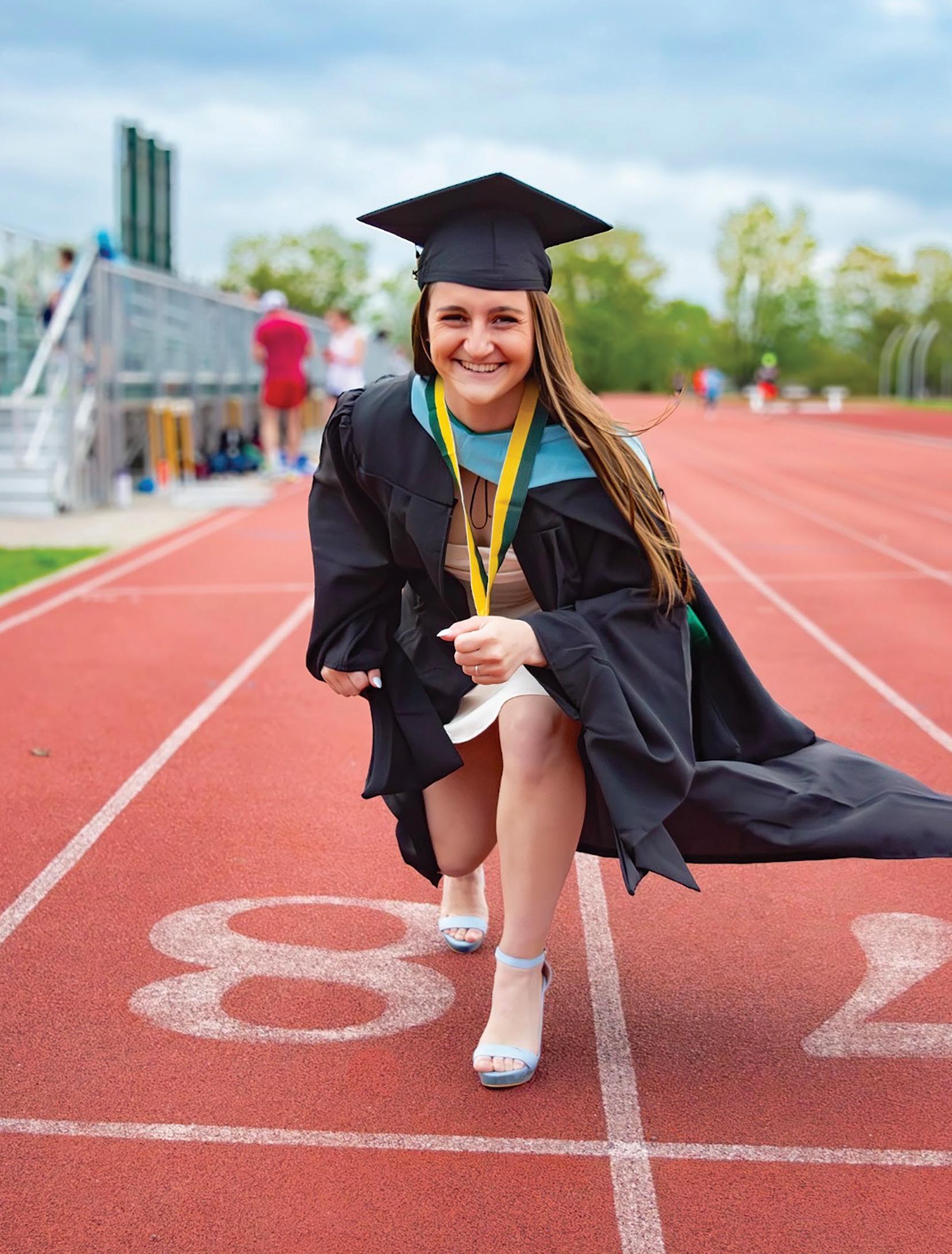
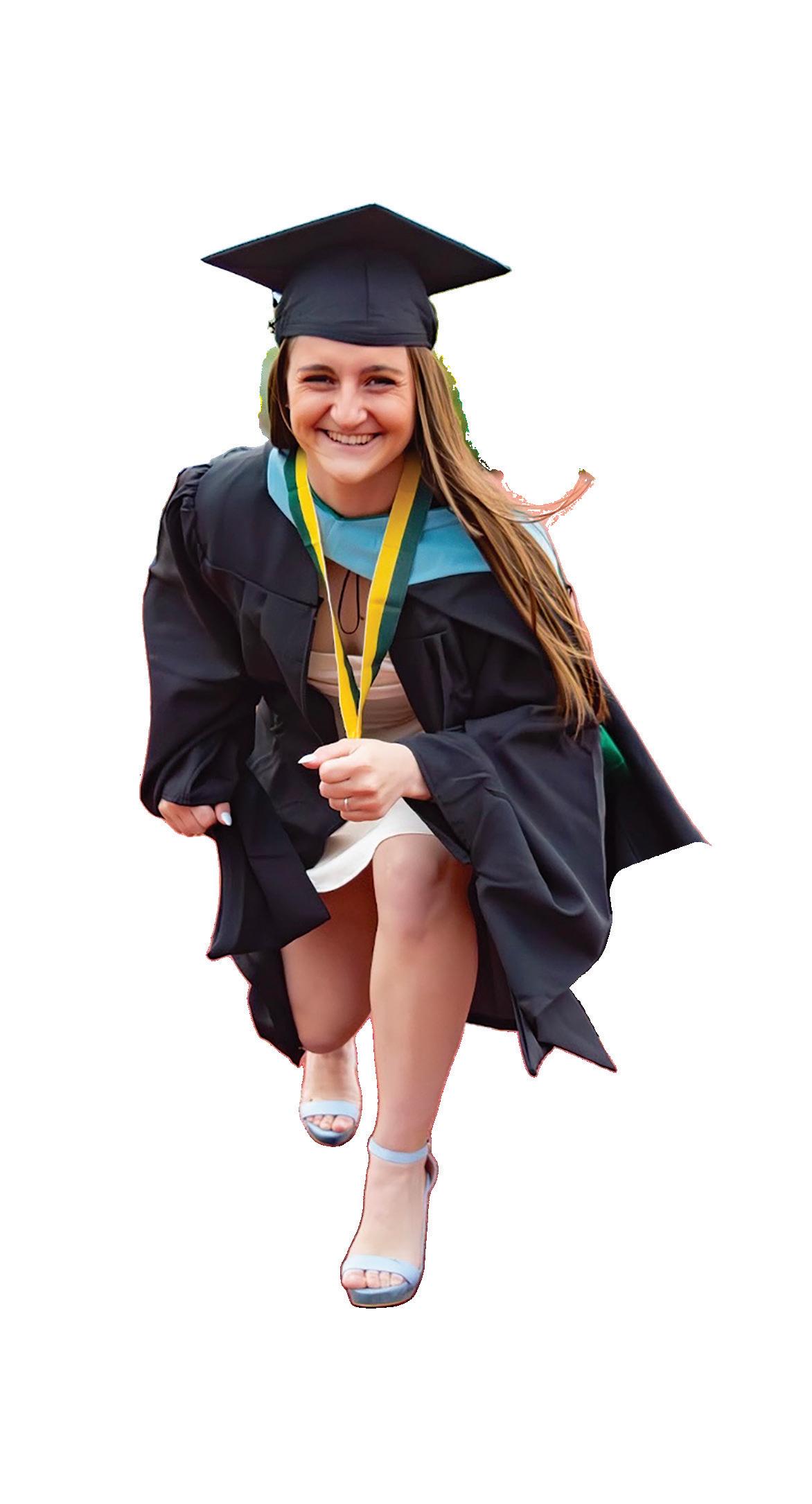
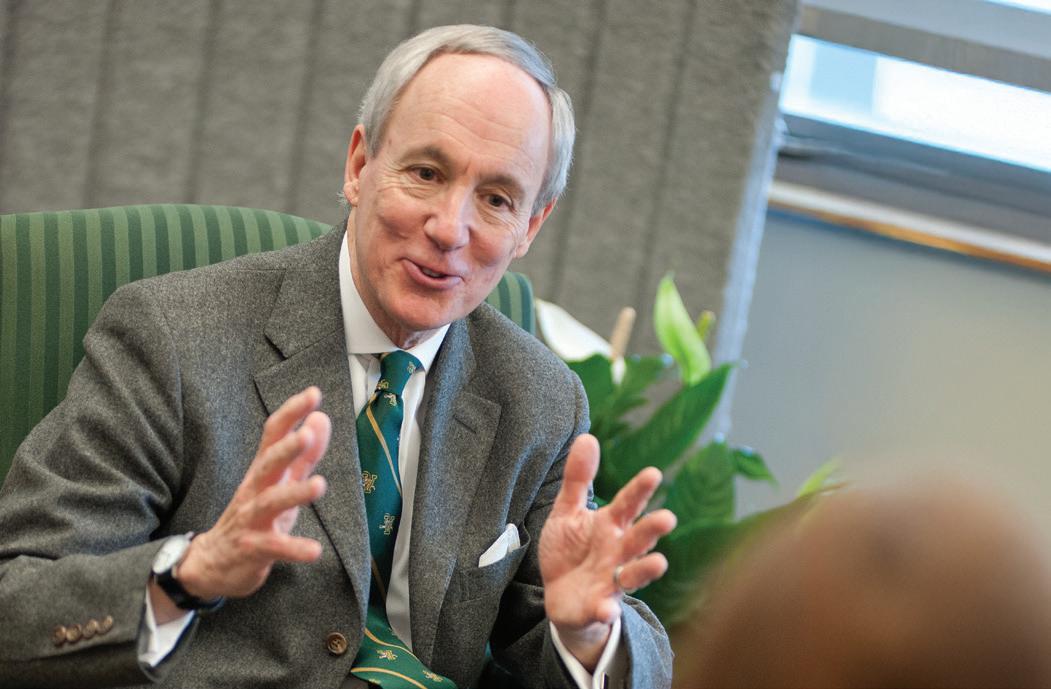
The U.S. Presidency: Power, Responsibility, and Accountability
Cambridge University Press, 2025
By Thomas Sullivan and Richard W. Painter go.uvm.edu/book-presidency

Americans once took up arms and fought a revolution to resist tyrannical rule. But has the United States been able to maintain the intentions of its Founders over the last two-and-a-half centuries when it comes to presidential power? Thomas Sullivan, UVM president emeritus and professor of law and political science, and co-author Richard W. Painter of the University of Minnesota Law School, tackle that question and others related to it in their new book. Lisa C. Bailey from the College of Arts and Sciences discussed these issues with Sullivan.
WHY IS THE SUBJECT OF PRESIDENTIAL POWER SO IMPORTANT RIGHT NOW? WHY WRITE A BOOK ABOUT IT?
Our country is losing accountability in Washington, D.C. Ultimately, it’s about power, responsibility, and accountability of the presidency and the Congress. So, we set out to ask: What are their powers? What are their absolute legal responsibilities? And have we lost that democratic accountability that was the underpinning of all the Constitutional discussions?
IN THE INTRODUCTION, YOU NOTE THAT, “ULTIMATELY THE LAW TODAY FAVORS THE VIEW OF A VERY POWERFUL, AND NEARLY UNITARY, EXECUTIVE.” HOW FAR IS THIS FROM WHAT THE FOUNDERS WANTED IN A PRESIDENT?
It is as far as you can imagine from what the Founders wanted. They were fearful from the first day of the
Constitutional Convention in 1787 of having a dictator or a tyrannical leader because they were in the midst of fighting a war to repel and distance themselves from King George III in England—a living example of what they did not want. They debated it vigorously, and they were very clear that they wanted, in the words of Alexander Hamilton, “a strong, energetic leader as president.” Hamilton carried the day with his “strong, energetic presidency.” But he and all the other principal Founders agreed that the Congress, under Article One, would predominate over the presidency, there would be clear accountability for decisions made, and there would be lots of checks and balances between the president and the Congress.
ARE WE CURRENTLY SEEING A STRAIN PLACED ON THOSE CHECKS AND BALANCES, OR EVEN A FAILURE TO MAINTAIN THEM, PLAY OUT IN REAL TIME?
There’s a case to be made that we have very few effective checks and balances now. And this has happened largely because of the polarization and the politicalization that has occurred in our country and certainly in Washington, D.C. I think the rhetorical commentary from both sides has been much enhanced and now we have, in some cases, a Supreme Court that has significantly changed its direction and significantly lessened the effectiveness of what the Founders deeply believed in and thought they were writing into the Constitution. And we see that in real time every day.
HOW HAS THE ADVENT OF SOCIAL MEDIA AFFECTED THE RATE OF CHANGE AND FLUCTUATION IN PRESIDENTIAL POWER, AND HOW HAS THIS AFFECTED THE GENERAL PUBLIC?
I think we’re in a whole new era with instantaneous commentary rather than our more traditional State of the Union or presidential addresses from the Oval Office or other communications from a president. We have 24/7 news cycles, and in those news cycles you get lots of repetition and drama. And that has added to the attention, the focus, and, quite frankly, the power of a president to project policies and opinions about matters.
WAS THERE ANYTHING THAT SURPRISED YOU IN YOUR RESEARCH?
I think people will be surprised after reading the history, with the Founders’ conversations and their vigorous debate, to see how far we’ve come from what they articulated. After all, the reason we had a revolutionary war was to ensure that we never again have a tyrannical, dictatorial, all-powerful leader. When you look at that arc of history and all its details and travails, it is remarkable and shocking how far away we’ve gotten from the Founders’ intent. We brought history out into the open in this book. Do we have sufficient accountability, checks and balances, as a nation? We leave that to the readers to determine for themselves.

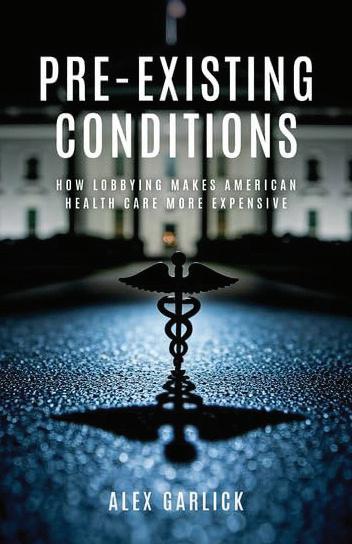
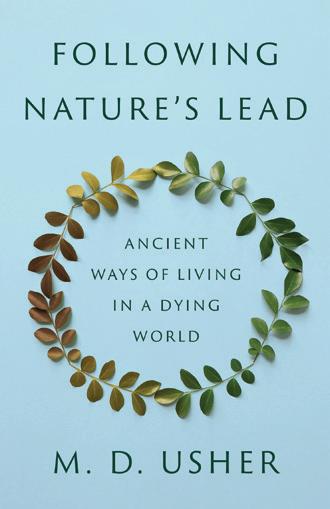
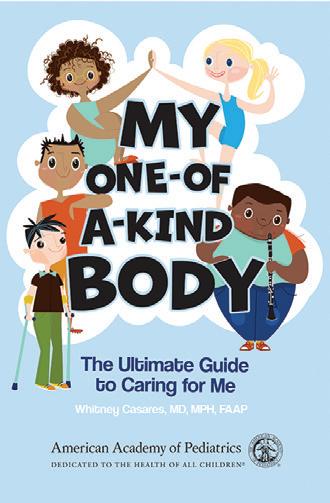
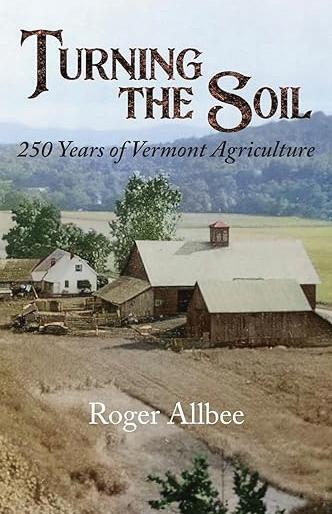
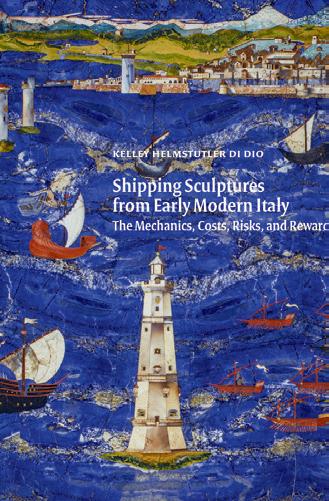
Worth a Thousand Words: Cultural, Literary, and Political Proverb Studies
University Press of Mississippi, 2025
By Wolfgang Mieder go.uvm.edu/book-thousandwords
Wolfgang Mieder’s 2014 Behold the Proverbs of a People showed how proverbs serve as global wisdom. His latest work updates that legacy, exploring proverbs in four modern contexts— American life, politics, literature, and culture—revealing their continued relevance and insight.
Pre-Existing Conditions: How Lobbying Makes American Health Care More Expensive
Oxford University Press, 2025
By Alex Garlick
go.uvm.edu/book-preexisting With healthcare costs rising and insurance access shrinking,
Americans are asking tough questions. UVM political science professor Alex Garlick, Ph.D., offers answers in his new book, revealing how lobbying shapes healthcare policy—and drives inflation in one of today’s most urgent issues.
Following Nature’s Lead: Ancient Ways of Living in a Dying World
Princeton University Press, 2025
By Mark Usher
go.uvm.edu/book-followingnature
Mark Usher is both a UVM professor of classical languages and literature and a Vermont farmer. This combination of callings led to his new book which, his publisher states, “brings together ancient, indigenous, and modern ideas about how to live in this world and describes how we might begin to reconnect with Nature and heal our damaged planet and lives.”
My One-of-a-Kind Body: The Ultimate Guide to Caring for Me
American Academy of Pediatrics, 2025
By Whitney Casares, M.D.’08
go.uvm.edu/book-oneofakind
This book by 2008 Larner College of Medicine graduate Whitney Casares, M.D., aims to help kids aged 7-12 embrace their own bodies, appreciate others’ differences, and learn to take care of their bodies. Casares shares evidence-based guidance on physical and mental health, healthy habits, and body positivity.
Turning the Soil: 250 Years of Vermont Agriculture
White River Press, 2025
By Roger Allbee ‘67 go.uvm.edu/book-turningthesoil
Roger Allbee grew up on a hilltop farm and comes from a family that has farmed in Vermont since 1794.
His latest book explores major turning points in agricultural history and recounts stories of farmers and their families, agricultural leaders, and other figures who shaped and reshaped Vermont’s farming culture.
Shipping Sculptures from Early Modern Italy: The Mechanics, Costs, Risks, and Rewards
Brepols Publishers, 2025
By Kelley Helmstutler Di Dio
go.uvm.edu/book-shippingsculptures
From 1500 to the mid-18th-century, huge amounts of sculptures were moved from Italy to Spain. Kelley Helmstutler Di Dio, professor of art history, executive director of the School of the Arts, and associate dean of the College of Arts and Sciences, examines the practical, technological, and social issues related to these challenging efforts.

This fall sees the premiere of Humble Schist, a new documentary by a team including former UVM Staff Photographer Bailey Beltramo that showcases the work of the Climbing Resource Access Group of Vermont (CRAG-VT), a nonprofit dedicated to preserving and protecting Vermont rock climbing. The film has strong UVM connections, with CRAG-VT community members like Andrea Charest ’04, the owner of Petra Cliffs climbing gym in Burlington’s South End.
Use a mobile camera to scan the QR, or visit humbleschist.com to view a trailer and find out about screening opportunities.
Transforming Oncology Care
A Generous Gift Establishes the Susan Lewis Levy Whole Health Cancer Program at the UVM Cancer Center.

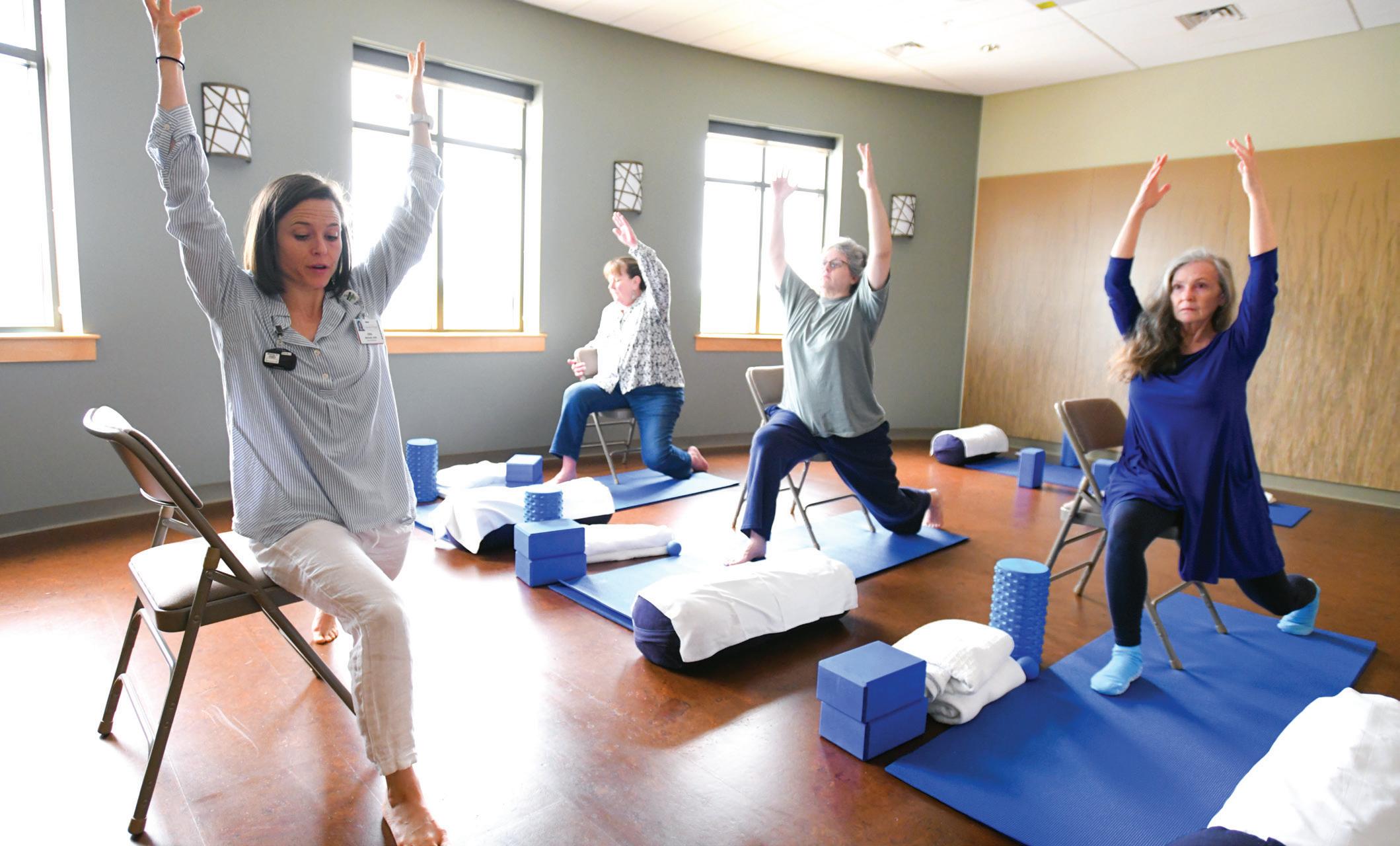
The Levy Whole Health Cancer Program will build on the work of such efforts as UVM’s Comprehensive Pain Program (CPP). Above, Erin Bingham, N.P., guides CPP participants in yoga, meditation, and acupressure to relieve pain and improve function.
HEALTH | Richard (Dick) Levy has made a transformative gift to write a new chapter in cancer care at the University of Vermont, honoring the life and legacy of his late wife, Susan. Levy’s gift will establish the Susan Lewis Levy Whole Health Cancer Program, a pioneering new program rooted in compassion, healing, and hope, designed to transform the patient and caregiver experience at the UVM Cancer Center.
The Levy Program builds on the strengths of two nationally recognized programs at UVM — the Osher Center for Integrative Health and the UVM Cancer Center — to deliver a new model of care for cancer survivors and their loved ones. By prioritizing quality of life, long-term wellness, and caregiver support, the program advances a vision of care that extends beyond the treatment of disease to embrace the full physical, emotional, and psychological needs of individuals and families affected by cancer.
“Inspired by a deep commitment to improving the lives of cancer patients, caregivers, and healthcare professionals, the Levy Program represents a significant leap forward in wholeperson, integrative oncology care,” said interim UVM Foundation President and CEO Kathleen Kelleher. “Thanks to Dick Levy’s extraordinary
generosity and vision, UVM will be positioned at the forefront of a national movement toward whole-person survivorship care.”
ADDRESSING A CRITICAL NEED
“Thanks to advances in screening and treatment, more people are surviving cancer than ever before,” said Randall Holcombe, director of the UVM Cancer Center. “But survivorship brings its own challenges—lingering fatigue, cognitive impairment, emotional strain, and difficulties reintegrating into family and work life. Caregivers, too, often face burnout and isolation, while clinicians and staff must meet increasing demands in emotionally complex settings.”
The Susan Levy Program will fill a critical gap in the cancer care continuum by creating a comprehensive eight- to twelve-week survivorship program for patients who have completed chemotherapy or radiation treatment within the past year. Through an integrative approach that combines clinical, psychological, and lifestyle interventions, the program is designed to optimize health outcomes and empower survivors and their caregivers with the tools and support they need to thrive.
A NEW STANDARD OF WHOLE HEALTH CARE
Integrative oncology is a growing field that blends conventional medical treatment with practices like mindfulness, restorative yoga, acupuncture, massage therapy, and culinary medicine to support patients’ whole health. The Levy Program will offer survivors access to a wide range of these services — many of which are not typically covered by traditional insurance — within a coordinated, trauma-informed framework.
“The Susan Levy Program is a tribute not only to one woman’s legacy but also to the enduring belief that compassionate, evidence-based care can change lives,” said Cara Feldman-Hunt, director of the Osher Center. “Through this program, Vermont’s cancer survivors — and their caregivers — will receive the tools and support they need to reclaim their wellbeing, rebuild their lives, and flourish in the aftermath of cancer.”
A LEGACY OF HEALING AND HOPE
Through this program, Vermont’s cancer survivors — and their caregivers — will receive the tools and support they need to reclaim their wellbeing, rebuild their lives, and flourish in the aftermath of cancer.
A native of Cincinnati, Ohio, Dick Levy graduated from Dartmouth College and earned his Ph.D. in nuclear chemistry from the University of California at Berkeley. He and Susan were married in 1964, and Dick began his career with the Varian companies in 1968. He served as CEO of Varian Medical Systems, a leading producer of radiation oncology equipment and software, from 1999 to 2006, and as chairman of the company’s board of directors from 2002 to 2014.
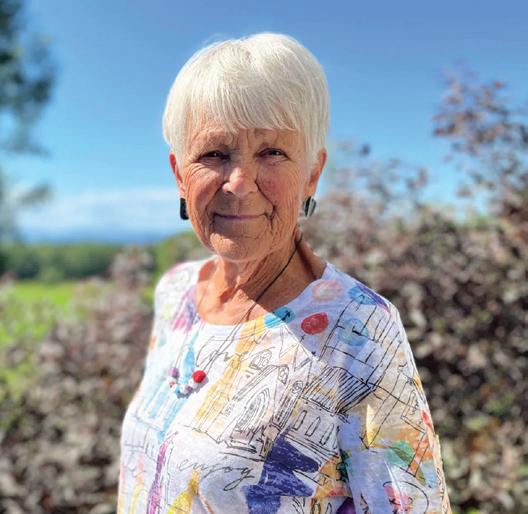
When Lung Screening Saves Lives: One Patient’s
Story
Each participant will receive an individualized care plan guided by a dedicated case manager and a collaborative clinical team. Group medical visits and mental health support are core components of the experience, helping survivors build community and resilience as they navigate life after treatment.
Cancer affects more than just the individual patient — it impacts families, loved ones, and healthcare teams. Recognizing this, the Levy Program will also include caregiver support, offering group sessions, personalized support, and access to community resources; an alumni program with ongoing support groups for past participants and caregivers; and a provider and staff wellness program designed to foster collaboration, reduce burnout, and strengthen a culture of holistic, compassionate care at the Cancer Center. These elements ensure that the support system surrounding each survivor is also nurtured, educated, and empowered.
Susan Lewis Levy, a native Vermonter born in Rutland, began her educational journey at the University of Vermont in the fall of 1959 as a student in the College of Arts and Sciences. Growing up in Vermont, Susan and her family shared a deep connection with the state and its communities, fostering a lifelong bond with UVM. In 1961, Susan transferred to join Dick at UC Berkeley, where she earned her bachelor’s degree. Despite leaving Vermont, Susan carried her love for her home state and UVM throughout her life. Her energy, passion, and unwavering commitment to family and community defined her character. Whether it was in the classroom as an educator or volunteering with countless organizations, the joy Susan received from helping others was always a motivation for her.
“It is in that spirit that I established this program, to honor Susan’s enduring legacy at UVM and within Vermont,” said Dick Levy. “It celebrates her compassion, care for others, and dedication to community — a reflection of the vibrant and meaningful life she led. Through this tribute, Susan’s spirit will continue to influence better quality of life and outcomes for cancer patients, their families, and the critical caregiver network that supports them.”
Laundry day is Gretchen Bailey’s favorite day on the farm in Panton, Vt. When the sun’s out and a breeze is kicking, she’ll wash a load of sheets and get them on the line, where they dry in an hour. Bailey is not one to waste time. Back when their dairy farm was active, she helped her husband with the cows while also working as a bookkeeper at Hannaford Career Center in Middlebury. “I don’t have a passion for anything in particular, but I have to do something—I don’t care what it is,” she says.
That do-something instinct kicked in when Gretchen’s pulmonologist at the UVM Medical Center, Assistant Professor of Medicine Elena Kozakewich, M.D., told her she was an ideal candidate for a lung cancer screening. One screening and two biopsies later, Bailey found out that she had Stage 1 lung cancer. When caught early, lung cancer is highly treatable. Six weeks later, she was back to doing chores (like laundry) and socializing. She can understand why people who are candidates for a screening might put it off. “I think the scary part is not the screening itself, but finding out what the results are,” she says. But not knowing was a risk she refused to take. “If I hadn’t had that screening, I could have died of lung cancer.”
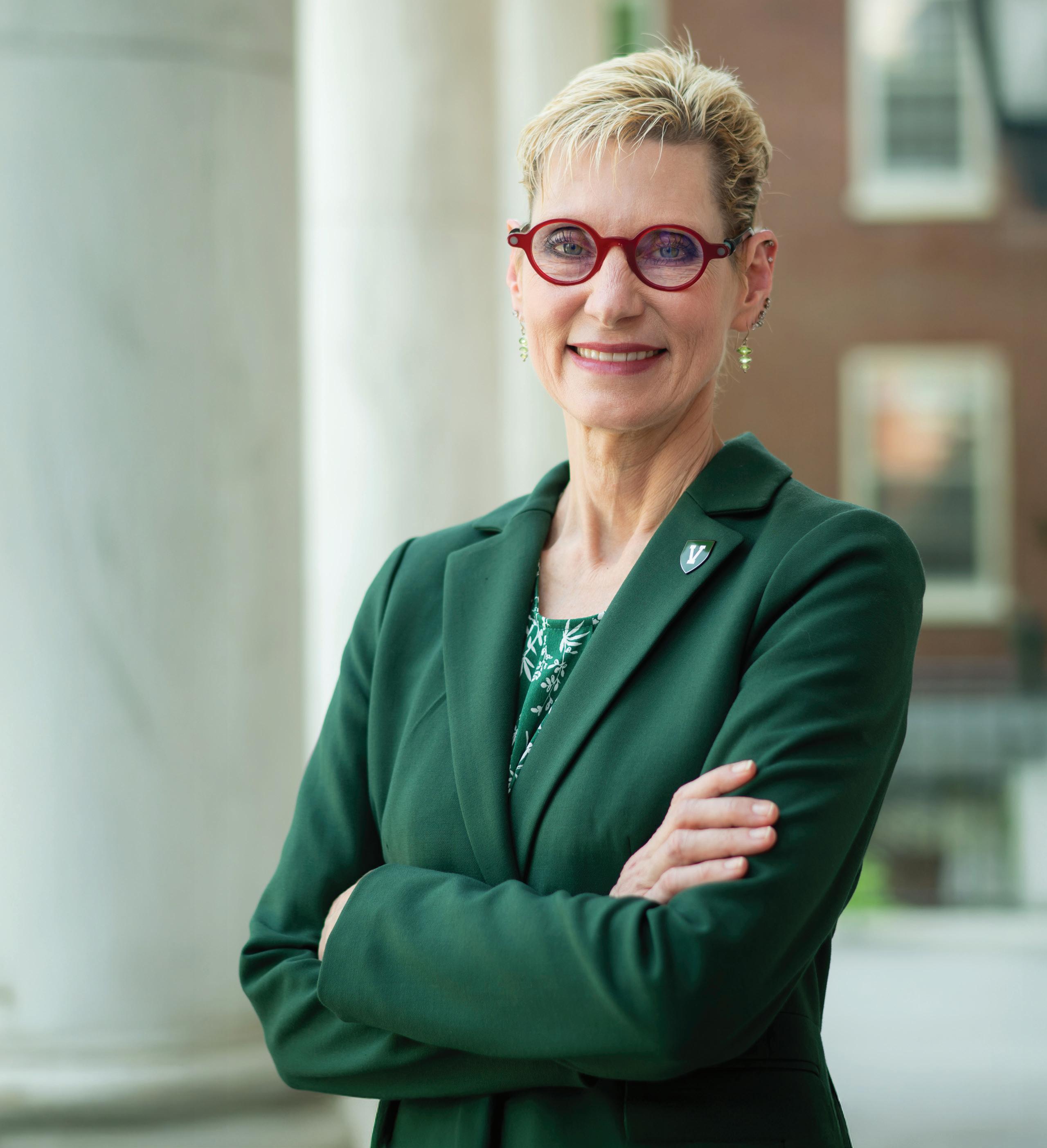
The Brightest Promise
UVM’s 28th president knows firsthand the transformative power of education.
As she begins her tenure as the leader of the University of Vermont, Marlene Tromp has big goals for UVM, an institution she feels “has the power to truly lead the nation and even the world on several fronts.” But to get a deeper feeling for where that expansive vision comes from, it helps to look at the small place under a big sky–the town of Green River, Wyo.–where UVM’s 28th president was formed.
Set about a third of the way along the banks of its namesake waterway, the chief tributary of the mighty Colorado, Green River began in the 1860s as a division point and watering station for the steam locomotives of the nascent Transcontinental Railroad, and the rails have continued to define the town. Exit Interstate 80 today in your car and drive into Green River from the east side, and you’ll first pass over the expansive Union Pacific yards, a webbing of dozens of sidings. From that bridge over the railyards, the Green River basin stretches out, bounded by eroded limestone hills dotted with sagebrush and presided over by the towering Castle Rock, a classic western layer-cake butte.
Born in Ohio, Tromp moved to Green River as a young child. Her parents, Hans and Eileen, were drawn to the area, as were thousands of others, by a mining boom. Deep under those ancient hills around town was coal, and even deeper was something more precious: one of the world’s largest deposits of trona, the source mineral for sodium carbonate, an important component in the making of all modern glass.
In the course of the decade from 1970 to 1980, the town tripled to a population of 12,000.
Hans Tromp worked for years as a mechanic in the coal and trona mines of the region.
Marlene Tromp recalls the beauty of her little western hometown, but also its remoteness.
“Nowadays, you can look at and order things online, but before the internet, if we wanted school clothes for the new school year, then we’d get in the car and drive three hours to Salt Lake City. Because the store we had in town was a mercantile–if you wanted a hammer, you had a place to get it, but not school clothes. Life was a little bit like Little House on the Prairie.”
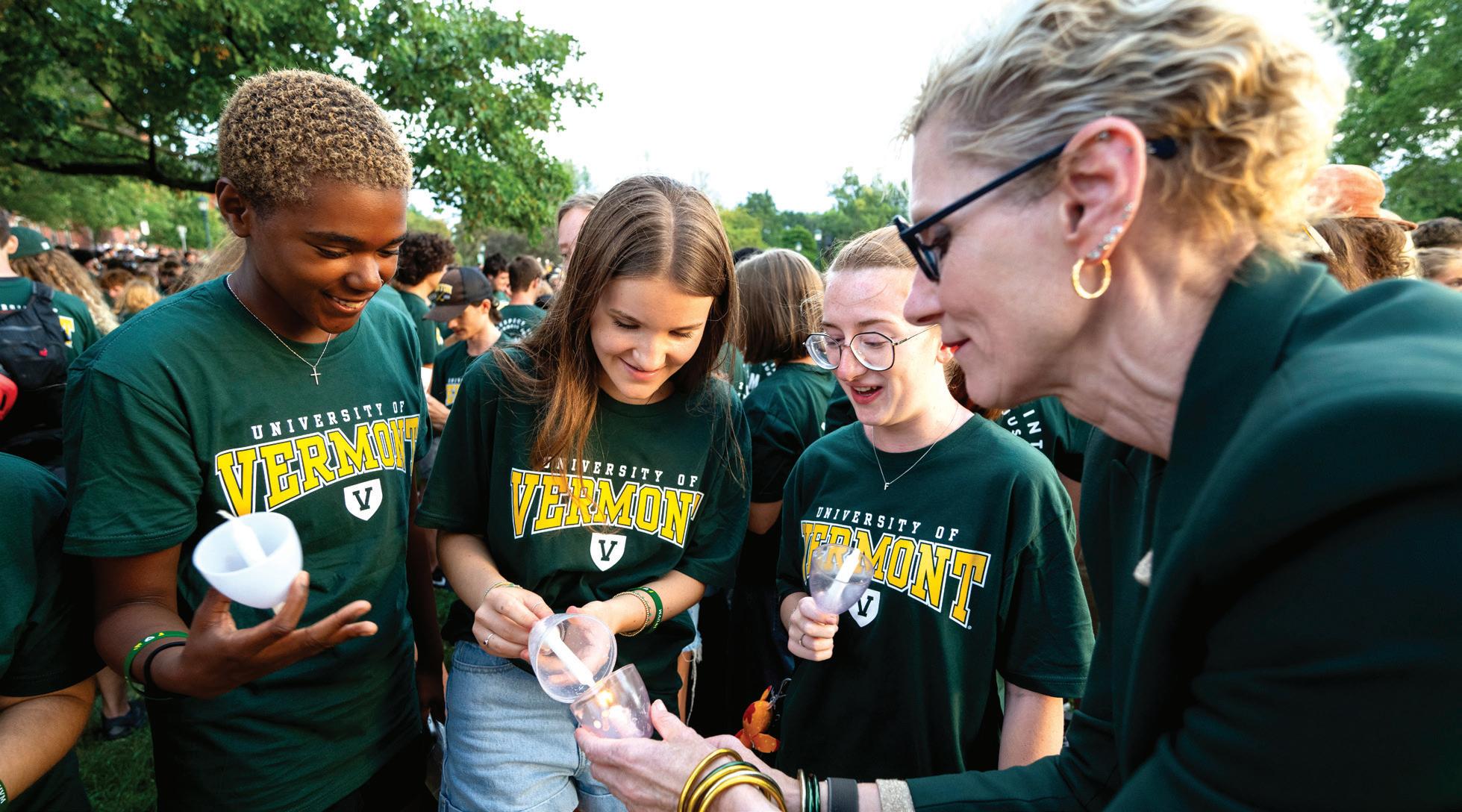
School clothes were hard to come by in Green River, but good schooling was a different story. “I had awesome teachers,” Tromp says. “Sweetwater County was mineral rich, so it paid well to be a teacher there. I had some teachers who were Ph.D.s. The school district was superb, and I had a lot of really smart peers. But most people didn’t go to college.”
Tromp’s own path to college and advanced degrees was nearly diverted on more than one occasion, a common theme for first-generation students. “I know my dad always wished he’d had the chance to get a degree, and he definitely wanted that for my sister and I,” she says. “My mom had a little sewing room that began to fill with college catalogs that came after I’d done well on all the standardized tests. I had good grades, I ran track competitively, and I was president of many clubs—a really active student. But we just didn’t know what to do with all these catalogs and applications. Many of them had application fees of $80 or more. That was a lot of money for my family. My mom actually wept when she showed me this room. And I sat down in the middle of it and looked at all these beautiful catalogs with their gorgeous fullcolor pictures, and it was completely overwhelming.”
Luckily, a high school guidance counselor had taken notice of both young Marlene’s promise and her confusion. Near the beginning of her second semester of senior year, he called her in. “Marlene, I have great news for you,” he said. “I applied to seven schools for you. You got into all of them.” The counselor had paid the application fees himself.
“He pulled out this one particular letter, from a private liberal arts college, and he handed it to me. That school offered me a 100 percent free ride–tuition, housing, books, everything.”
That night, she excitedly showed her father the letter.
“Our family rule was that we didn’t speak to my dad about anything important until after dinner,” Tromp says. “I even remember what we were having that night: elk steak, which my dad himself had hunted.”
After dinner, she handed her father the letter. He read it and looked up. “No,” he said.
“He just could not believe it was real,” Tromp remembers. “And he said: ‘Honey, what happens if you get all the way across the country and this turns out not to be real, that it’s some scam to get some rural kid from way out in Wyoming all the way back there on the East Coast? And then you don’t have any of this and we’ll either have to get you home, or come up with the money to pay for this.’ He wouldn’t let me accept the scholarship. And I knew it was real, but I didn’t want to shame my dad. So I just didn’t apply to anyplace else.”
She made plans instead to go to Western Wyoming Community College, about 20 miles from home, for an associate degree. “One early summer day, our neighbor across the street, who had twins in my class, came marching over,” Tromp says. “She was a guidance counselor in the middle school. She pounded on the front door. I opened it, and she said, ‘I heard you’re going to Western Wyoming. You belong at a university.’ I said, ‘My dad won’t let me take the scholarship–it’s too far away.’ So she took out a Rand McNally atlas and a compass, and she put the pin in Green River, and drew a circle of the distance you could drive to-and-back in one day.”
And on the outer edge of that circle, in Omaha, was Creighton University.
August 24, 2025:
UVM President
Marlene Tromp meets members of the new Class of 2029 at the Twilight Induction on the University Green.
Creighton accepted her, even though its formal application deadline had long since passed. “They actually had to call me on the phone to give me my acceptance–it was too late for me to get to orientation if they sent me a letter.”
Tromp’s father trusted Jesuit-affiliated Creighton to live up to its scholarship offer, and the school lay just within that crucial day’s-drive boundary. Marlene was on her way, following her plans to become as physician. That meant years of carrying a backpack filled with thick biology and chemistry textbooks across campus. But she also fed her humanistic side with courses in English literature. She was poised to submit her medical school applications when she took a literature course that exposed her to the poems of Robert Browning, particularly one of his dramatic monologues titled “Porphyria’s Lover,” a tale of obsessive, destructive love. The power of that poem haunted her. “It was like a psychological study–I was a psych minor–and I found it so interesting that literature could do such things,” she says.
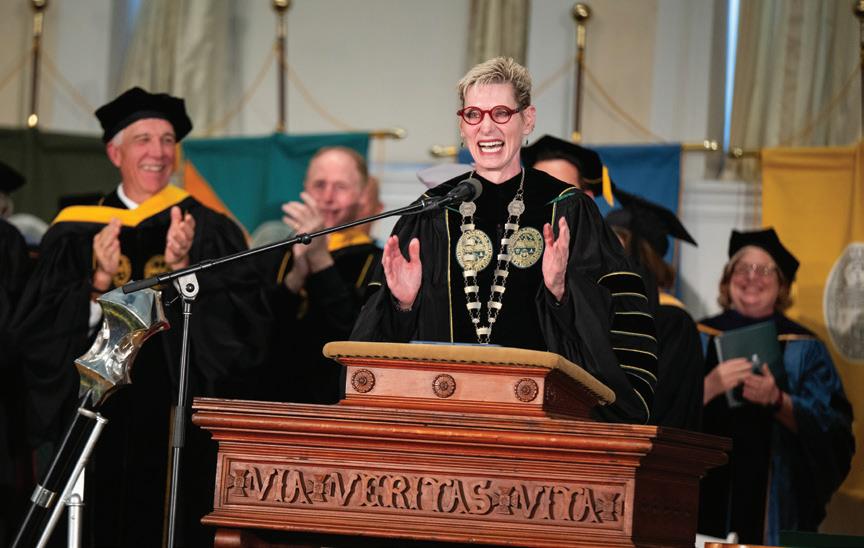
“In
Gracious and Bountiful Hands”–UVM’s 28th Presidential Installation
With a colorful procession of over 100 university leaders, scholars, and dignitaries from around the nation—all in full academic regalia—and a packed ceremony in Ira Allen Chapel, the University of Vermont formally installed its 28th president, Marlene Tromp, on the afternoon of Tuesday, September 30.
I love being in Vermont...that independent spirit, the humility, the hard work, the earnestness, the valuesdriven way of thinking about the world around you. I feel truly lucky to be here.
Around the same time, she was tutoring a fellow student in calculus. “And he said to me, ‘Marlene, what do you want to do when you graduate? You’re so good at this, what do you think you want to do?’ And I said, ‘I don’t know. I just want to stay in college forever.’” It became clear that her heart lay in teaching and learning. She would stay in college, as a teacher and researcher.
The decision to switch from pre-med to English was not without its challenges. Chief among them: Hans Tromp’s reaction. “My dad said: ‘No, way! If you do that, I won’t give you another penny for college,’” she recalls. “And I know what he was trying to do. He was trying to save me from making what he thought was a terrible mistake–ruining my career, ruining my future.”
But it was clear to Tromp that she had to follow her passion. She persevered, and worked three jobs in addition to her studies to pay for her senior year at Creighton. From there it was on to the University of Wyoming for a master’s degree, followed by five years in a doctoral program at the University of Florida.
The audience heard from Vermont Governor Phil Scott, a member of the UVM Class of 1980, and the Installation Address was given by Bettina Aptheker, distinguished professor emerita at the University of California, Santa Cruz. Aptheker described her longtime friendship with Tromp, and Tromp’s commitment to increasing the accessibility of a public university.
“Compassion. Care. Generosity. Attention to detail and nuance. These are the qualities that shine through in her writings, and in her work,” Aptheker said. “Vermont with its forests, mountains, and farms, and maple syrup, to sweeten our lives, is a gift. And to this university, Dr. Tromp will give her all. You are in gracious and bountiful hands.”
Want to Dive Deeper?
Learn more about this historic event at the following links:
READ THE INSTALLTION STORY go.uvm.edu/installation-story
WATCH THE INSTALLATION VIDEO go.uvm.edu/installation-vid
LEARN MORE ABOUT MARLENE TROMP go.uvm.edu/marlenetromp
Her doctoral thesis, “The Private Rod: Marital Violence, Sensation, and the Law in Victorian England,” would later be expanded into the first of her several books.
“I became really fascinated with this period of literature, that was about so much change,” she says. “It was about industrial change, changes in gender codes, massive cultural change, and how people were dealing with that change–partly by making stories.”
In the end, she became a different sort of doctor from the one her father had envisioned. “But I think my dad wound up being pretty proud of me,” she says.
Tromp spent 14 years at Dennison University in Ohio, where she rose to become chair and director of women’s studies and chair of the faculty. Teaching turned out to be as rewarding as she’d expected. “It was an opportunity for me to help other people experience the excitement and love of learning that I’d had,” she says. “I think what I always wanted was to be challenged intellectually and keep growing, and to help other people grow. And I pushed my students hard. I used to often have students say, ‘I know this class is going to ruin my GPA, but I know I’m still going to love it.’ I expected a lot from my students. I expected them to perform well, but I would stand alongside them to help them get there. And I kept pushing myself to figure out better ways to help them think and grow and learn.”
The chance to take on administrative duties left her questioning. “I really struggled, because I love my scholarship, and I love teaching,” she says. She talked to a close colleague and administrator. “I asked, is it worth it? Do you feel so far away from the students? And she said, ‘Well, you can either help hundreds of students, or tens of thousands–which would you rather do?’ That’s when I decided to become a full-time administrator.”
She moved to Arizona State University in 2011, where she was first director of the School of Humanities, Arts, and Cultural Studies, then vice provost of ASU’s West Campus, and finally dean of the New College of Interdisciplinary Arts and Sciences. “ASU, under its president, Michael Crow, is known as a hotbed of innovation,” she says. “I learned not be held back by what other people have done before, or even what your own institution has done before, but to be open to the possibility of imagining new ways to do things better for your students, for your research, for your faculty, for your staff.”
That’s a lesson Michael Crow feels Tromp has absorbed in her bones. “The University of Vermont is gaining one of the most skilled individuals in helping to make an academic enterprise successful for the community, successful for the students, the staff, and the faculty
committed to the core values of what academia is all about, yet at the same time working to innovate and move in new directions,” he says of Tromp.
Tromp has been a leader in higher education nationally, serving on the Association of Public and Land-Grant Universities board and the boards of the American Council on Education and National Collegiate Athletic Organization, as well as on the U.S. Council on Competitiveness.
Within her scholarly field, she’s held leadership positions at the Nineteenth-Century Studies Association and the North American Victorian Studies Association, serving as president of the latter from 2014 to 2017.
The work we are doing now will require enormous sisu, but it matters perhaps now more than ever.
“I still understand myself as a faculty member,” Tromp says. “My leadership in these professional organizations really allowed me to help us think in bigger and more broad ways, to ensure that we were operating as an inclusive organization, to ensure that we were thinking big about what we could do for our faculty membership all over the country, all over the world in many cases.
NAVSA is the largest Victorian studies organization in the world. We did some bold things in that time in terms of thinking about how we reached our membership, how we invited our membership into dialogue, how we structured the organization so we could serve the faculty across the country, and serve independent scholars better.”
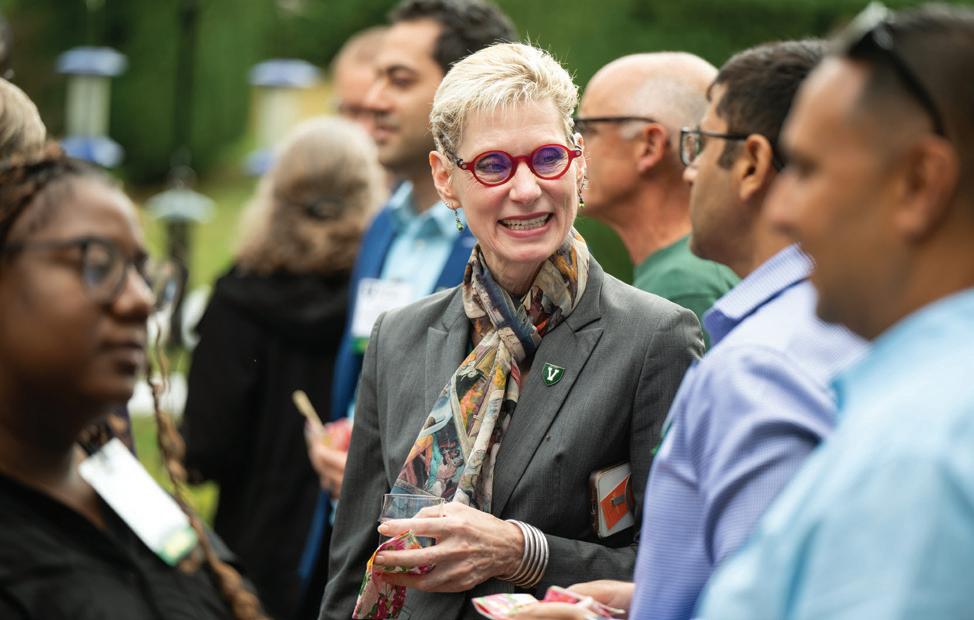
Marlene Tromp’s first few months have been a whirlwind of meetings, including greeting new faculty during their orientation.
Tromp moved to the University of California, Santa Cruz in 2017, as campus provost and executive vice chancellor. Lorena Peñaloza, who was chief campus counsel of UCSC during Tromp’s tenure there, was “immediately struck by her energy, her sheer joy for life, and her blazing passion for students. Her commitment to students was evident from the start. Marlene was focused on meeting students exactly where they were, whether they were happy or unhappy with the administration.”
Two years later she was tapped by the search committee of Boise State University to be the seventh president of that institution, the largest four-year university in Idaho. BSU’s experience in the last few years was a sort of precursor to the current climate and challenges facing higher education institutions across the country. Tromp had to work with a state legislature that was often hostile to the notions of an inclusive academic community. She faced these headwinds straight on and pursued her commitment to supporting students and faculty, and broadening the university’s impact on the wider rural Idaho landscape, spearheading the Community Impact Program, bringing educational opportunities directly to rural students, and the Hometown Challenge, which connects graduates to career opportunities within their communities.
One such graduate is Chey Sheen, a 2023 BSU graduate who spoke at UVM during Tromp’s September 30 installation events. Sheen spoke about the difficulties of coming from a small Idaho city and finding her place in the university, especially during the rough waters of the pandemic and the politically fraught atmosphere in the state, and the value of having an institutional president who was there for the community. “She’s approachable, she’s warm, she’s so real. And that’s how she felt to us students,” Sheen said. Sheen even knew two students who got tattoos of Tromp’s distinctive eyeglasses “to show her ‘this is how much we love you.’”
Sheen at one point withdrew from BSU, but after talking to Tromp (who Zoom-called her with advice in the middle of the night when Sheen was travelling seven time zones away) she eventually returned to the school, and later became its student body president and a Truman Scholar. “The same care and attention Dr. Tromp gives to one person, she pours into an entire community,” Sheen said.
Tromp’s first few months on the UVM campus, as she and her son, Jacob, and other family members settled into life at Englesby House, have been a whirlwind of meetings—by design. “The very first thing I wanted to do was meet with the faculty senate and our staff council, our student government leadership, and our representative bodies,” she says. “And I’m very eager to meet with people who’ve partnered with the university to help us achieve excellence–our industry and nonprofit partners. I met with the mayor of Burlington, and I’ve met
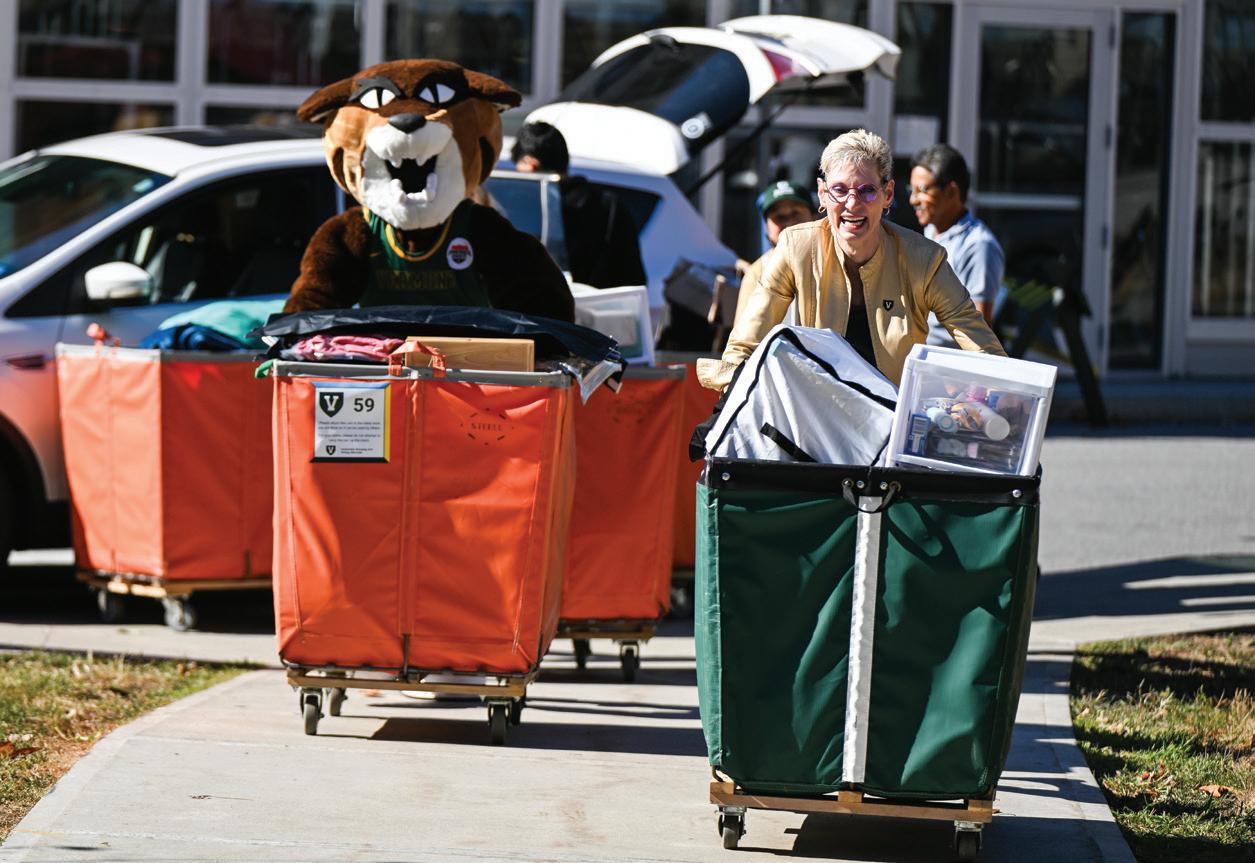
with donors who’ve given generously to the university to help it thrive.” In early October, she took part in her first White Coat Ceremony at the Larner College of Medicine, where this once-future-physician got to help the Larner Class of 2029 take their first symbolic step toward a medical career. “And I’d love to visit every student club eventually,” she says. “I want them to know I care about what they’re doing, and I care about their success.”
Most important, Tromp quickly initiated the collaborative process that will guide the university in its development of a new strategic plan–a process that has been fasttracked to deliver by early in the spring semester of 2026. That effort and the hard work that will come after to realize the plan will need to be guided, Tromp says, by the spirit instilled in her by her Finnish American mother, Eileen, since Marlene was a little girl: the Finnish concept of sisu–defined by Tromp as “unflappable tenacity in the face of insurmountable odds.”
“The work we are doing now will require enormous sisu, but it matters perhaps now more than ever,” Tromp says.
“It’s exciting to me to again be at a land-grant institution,” she says. “And particularly significant to be here in Vermont, the home of Justin Morrill, the father of the land-grant movement–whose Senate desk is right in my office. This brilliant innovation of giving all people access to education and granting them the opportunity to bring their talents to the world transformed this country. It continues to hold out the brightest promise today, particularly when higher education and our nation are facing such real and profound challenges.”
“I love being in Vermont, and it resonates so powerfully for me, having grown up in Wyoming–that independent spirit, the humility, the hard work, the earnestness, the values-driven way of thinking about the world around you. I feel truly lucky to be here.”
Move-in 2025 was a clockwork operation, and Marlene Tromp, Rally, and dozens of basket trucks were there to help.
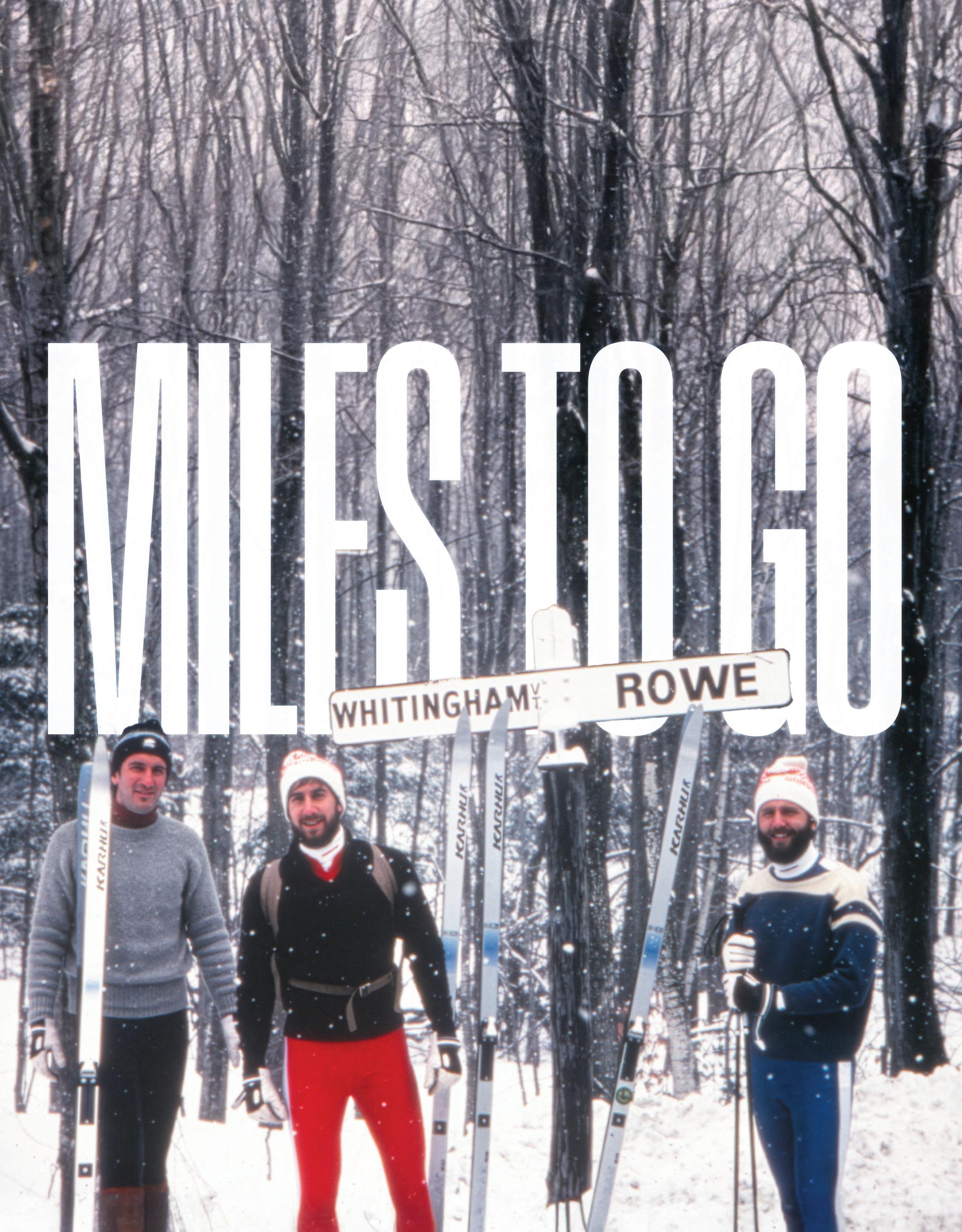
IN 1984, THREE FRIENDS WITH DEEP UVM CONNECTIONS PIONEERED A WINTER WONDER: THE CATAMOUNT TRAIL, A 320-MILE UNBROKEN SKI ROUTE ACROSS VERMONT FROM THE MASSACHUSETTS BORDER TO QUEBEC. FOUR DECADES
LATER IT’S GOING STRONG — IF THE SNOW HOLDS OUT.
MARCH 9, 2025
After 41 years, Paul Jarris has reached the border again. “I’m just going to touch this marker,” Jarris says, and slides one ski slowly over the snow toward a stone block that marks the line between the United States and Canada.
“I’ll be good. But I’ve got my passport just in case,” he says, a hint of a smile showing under his mostly gray mustache. His ski buddy, Ben Rose, steps back, laughing. Jarris’s red boot stops at the northernmost edge of Vermont—the final inches of 320 miles of backcountry skiing. Did the tip of his long ski lift into airspace claimed by Quebec? Even the camouflaged security camera, just feet behind him, probably couldn’t tell. Its lidless lenses all point south.
On March 1st of 1984, Jarris, Rose, and their pal, Steve Bushey, stood on another border and all pointed north. They had gotten it into their heads to see if they could ski from Massachusetts to Canada, winding their way up the spine of Vermont’s Green Mountains. Pushing off, south of Harriman Reservoir, clad in one-piece, red-white-and-blue Gordini ski-suits (ah, the 80s) these twentysomething dreamers began a successful, self-directed, three-week ski adventure that led them from inn to inn, through forests and farm fields, along logging roads and snowmobile routes, until they passed Jay, Vt., and tried to explain themselves to a befuddled border agent in the middle of an ice storm.
Along the way, they also launched the 320-mile Catamount Trail, North America’s longest backcountry skiing trail.
Jarris had graduated from UVM in1980 and was then a medical student at Penn. His UVM adventure-buddy, Steve Bushey, had graduated with a degree in geography the next year. And Bushey’s friend from their days at Champlain Valley Union High School, Ben Rose, had graduated from Yale in 1982. (He completed a master’s degree at UVM in 1990). As undergraduates, they’d skied with sleds into Maine’s remote Baxter State Park and summited Mount Katahdin in the dead of winter. Bushey and Rose had ridden their bikes together across the United States in 1981. Out of money, Bushey took a job as a chimney sweep back in Vermont.
BY JOSHUA BROWN
“In October, I was working at a house in Charlotte, and you could see from Camel’s Hump down through the Monroe Skyline, and it was all covered in beautiful snow. And I thought, ‘gosh, I’m broke, but here’s a trip staring me in the face. I can ski from Canada to Massachusetts. I just have to figure it out.’” He spent two years scouring maps, scouting sections, and completing a master’s thesis at Carleton University in Ottawa that laid out a route and rationale for the trail. They gathered
The beginning. From left, Steve Bushey, Ben Rose, and Paul Jarris on the border between Whitingham, Vt., and Rowe, Mass.
Photo Courtesy of Catamount Trail Association
THE CATAMOUNT TRAIL ASSOCIATION
The Catamount Trail Association expands access to Vermont’s backcountry, believing mountain adventures with friends should be open to all. As advocates, volunteers, and trailblazers, they steward the Catamount Trail, manage ski terrain, protect mountain lands, and promote equitable access to skiing. By building trails, community, and opportunity, they connect people to Vermont’s mountain landscape.
Scan the QR code or use the contact information below to learn more:
Catamount Trail Association 1 Mill Street, Burlington, VT 05401 catamounttrail.org
equipment, lined up local businesses as sponsors, called newspaper editors, and made the case for free room and board to innkeepers (in the way that only penniless college grads with a good idea can). And then the three friends started skiing north. “A lot of it was pure orienteering,” Jarris recalls. “Sometimes we had no idea where to go.”
Four decades later, under the umbrella of the Catamount Trail Association that they founded (Rose was its first director, at $75 per week), hundreds of landowners, innkeepers, state officials, local “trail chiefs,” cross-country-skiarea staff, and volunteers have built a winding, snowy wonder, a winter-only backcountry passage, divided into 31 sections, stretching the full length of Vermont. It roughly follows the route of its more-famous older cousin, the Long Trail. Sometimes they crisscross, as the hiking trail runs along the top of ridges and over mountaintops, while the ski trail winds through sheltered, skiable mid-elevation terrain—allowing some 12,000 people each year to get out for an hour or a weekend of skiing, traveling under their own power, in quiet woods, lovely, dark and deep.
A few set out to repeat the founders’ journey and ski the whole trail. I aspire to be one of them, but on this gray March afternoon I have a broken ski pole, a broken thumb, and
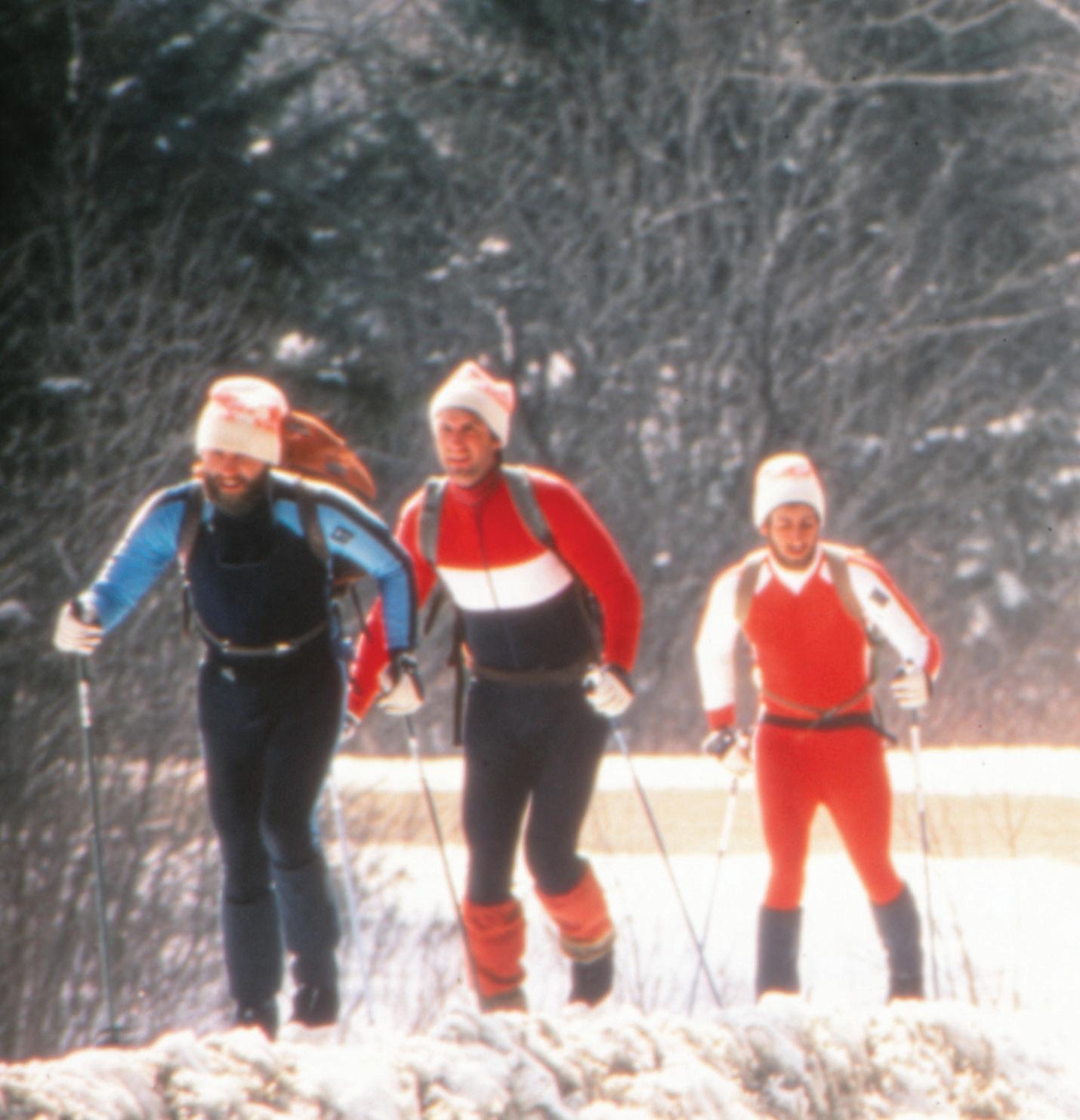
have only covered 93 miles of the trail over 11 scattered day-trips—while Jarris and Rose have just finished their second complete end-to-end run. They began in 2024 and skied for 24 days, about two-thirds of the trail, until the spring snow ran out when they neared Bolton, Vt. So, their 40th anniversary tour, the Ruby Run, as they styled it, become the Ruby Run Redux in 2025—a 100-mile, nine-day trip from Trapp Family Lodge to the border. (Sadly, Steve Bushey hurt his knee on the first day and will have to wait to complete his second tour another year.)
Organized by the Catamount Trail Association, they invited anyone to come along for a few miles or the whole adventure, so I’ve joined them for a couple of days, including this joyous, final 13-mile ski, along the flank of Jay Peak, that ends with a champagne toast in Dixie cups.
Earlier in the day, we slabbed up from Jay Pass in falling snow and through soaring birch glades with a pack of 13 other Ruby Run participants and friends. Two wore pink and purple tutus, the rest more sober Gore-Tex. A few inches of new powder swirled over a firm base, with blown-off portions and hidden drifts. It made for beautiful skiing through the widespread trees. “Every time I see one of the blue Catamount Trail signs, it’s a drip of happiness,” Rose said. One rolling steep glade called out for some telemark turns, so I left the trail and caromed off a rise, my own drip of happiness, gracefully airborne in the falling flakes. A few people on the trail did, unfortunately, see the landing: ski tips disappeared into a drift, then I followed, headfirst, like a Navy diver, falling on my pole and snapping it. Spluttering to the surface, my glasses, ears, and camera were full of snow. I already had a broken thumb. (The week before, skiing with the Ruby Run gang on Elmore Mountain, I had, again, gone off-trail and smacked a branch—it didn’t hurt much. “A tiny fracture,” the urgent-care doctor reported the next day.) This time, the only bruise was on my ego, which recovered with help from proffered chocolate and a spare pole that two members of the tour, Catamount Trail veterans Michelle and Bob Brandt, carry for such an occasion.
At six miles, we stopped for lunch at the Jay Country Store. Some of the skiers went in, venturing past two carved bears, for coffee and burgers. I bought a roll of Gorilla tape to fix my pole. It worked about as well as a banana, my “repair” getting softer with each passing mile of the scrappy, bumpy, sprucy, semi-boggy woods that lead through North Troy, Vt., to the
The three founders of the Catamount Trail heading north in 1984.
border. The pace rapidly accelerated by midafternoon. At one tea break, Ben Rose was gone before the cookies. “He can smell the border,” said Paul Jarris. And I can believe it. These guys first completed this trip as youngsters, driven by a multi-year dream of getting here. An older and wiser version of the dream drove them to try it again, but Ben’s now a retired grandad to three toddlers and, after he’s done with this day, must go help with dinner and diapers.
“THERE WILL STILL BE A THING CALLED SKIING. WE’VE ALREADY LEARNED HOW TO MAKE SNOW. I DON’T KNOW IF WE’LL SEE ANY MORE WINTERS LIKE THIS.
FEBRUARY 15, 2025
It’s 13 degrees Fahrenheit, and the sun is entirely obscured behind steely clouds on this fourth day of my exploration of the Catamount Trail. It’s writer Bill McKibben’s 78th day of skiing this year. He completed an end-to-end ski 37 years ago with his friend, the late renowned Vermont cartoonist Ed Koren, and has agreed to show me a favorite nine-mile section of the trail near his home in Ripton, Vt. Having previously seen him in comfy vests and collared shirts, I’m surprised when he strides from his house—built on land once owned by Robert Frost—decked out in racer’s Lycra and clicks his boots into a pair of super-skinny, waxed Nordic skis. I quickly ditch my heavy backcountry boots and steel-edged skis for light kick-and-glide gear and take off after him. Despite slippery, hard-pack conditions, we’re climbing and diving along a frozen track at a delightfully fast clip. Soon a view of the main line of the Green Mountains opens through the trees. It’s nothing but forest and snow. “That’s Breadloaf straight ahead of us,” he says. “I was through here in a snowstorm last week and you couldn’t see a thing.”
We come to the end of a windy and narrow section of trail and turn onto a wider track, a corridor shared by snowmobilers and skiers.

Paul
Up over Lincoln Gap today. A steady but very manageable climb. At the top we entered the woods and skied up and down through beautiful forest. The snow was deep, warm, and forgiving. There was a hairy stretch down a stream with frequent crossings. The ice broke as I crossed it but I didn’t fall in.
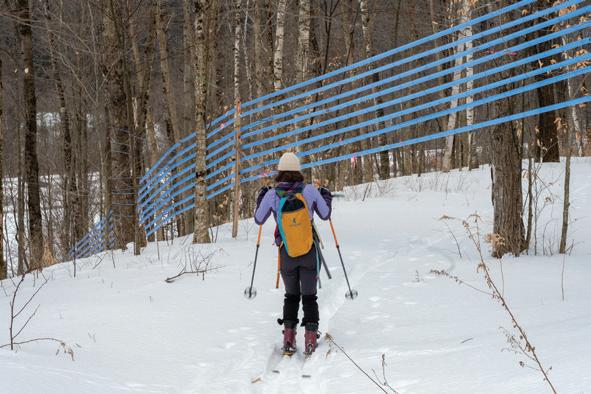
“This is Fire Road 59, it’s a VAST trail,” McKibben says. “The Catamount goes with it for about half a mile that direction and then off into the woods.” While he stops to rub some more kick wax onto his skis, he points down the other way, in the direction we’ll be heading. In the 1930s, he explains, the federal government wanted to develop a tourist highway, just like Virginia’s Skyline Drive, along the spine of the Green Mountains. “This, right here, would have been a four-lane highway, with hotels and gas stations,” he says, gesturing with his ski. The state legislature had approved the project and was ready to start digging, but the citizens of Vermont put it to a vote on Town Meeting Day in March 1936—and rejected the job-creating Green Mountain Parkway, despite being in the depths of the Great Depression. “I think the Catamount Trail is one of Vermont’s real wonders,” McKibben says. “Unlike the Long Trail, which is mostly on government land, most of this trail is about people cooperating.”
Soon we’re double-poling at high speed, halfracing like two high school kids, down the snowmobile-packed road and then back into the forest. We stop on the brow of a hill near Middlebury College’s Rikert Outdoor Center, where, today, 400 college athletes are actually racing. It’s one of eight Nordic ski centers along the Catamount Trail where travelers can ski on
Passing under a sap pipeline, a skier on the Catamount Trail benefits from Vermont’s working forest, making tracks and maple syrup at the same time.
Jarris’s Strava entry for this ski on February 26, 2024:
THE CATAMOUNT TRAIL
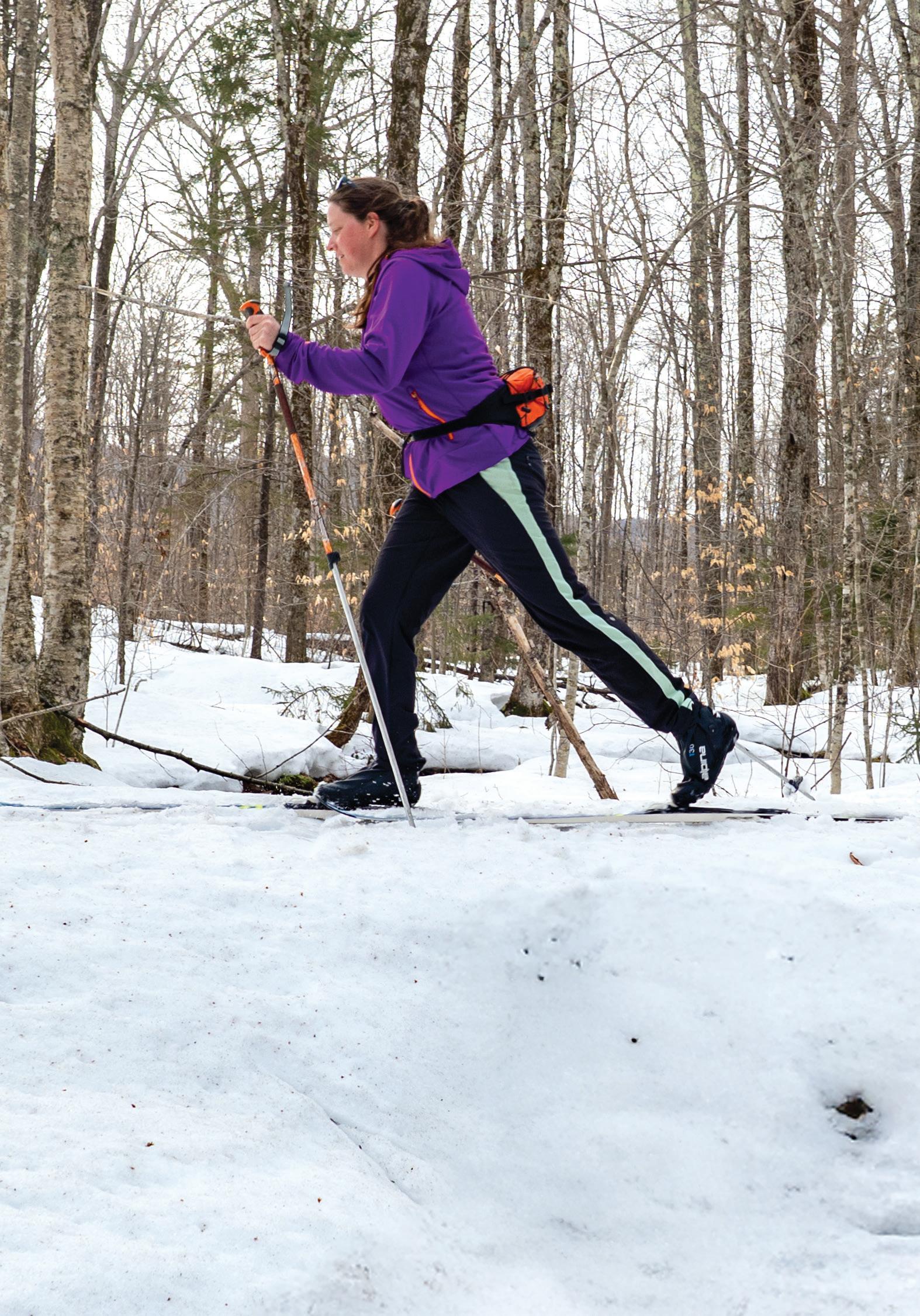
Backcountry telemark skier Ben Wang G’99 drops down a dip in deep snow on the
Phys Ed. teacher
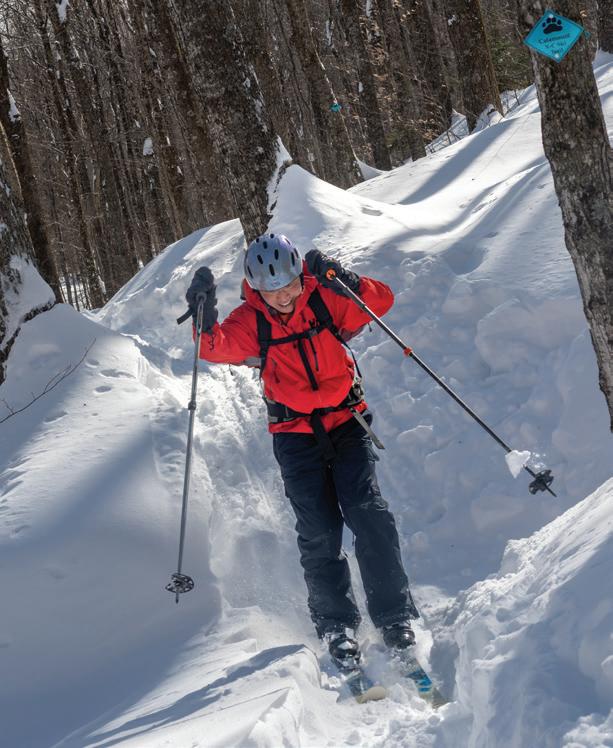
machine-groomed tracks. I listen for roars and cheers, but all we can hear is the wind and some woodpeckers. “Normally this is a real beautiful sweep downhill, but today it’s icy and technical,” McKibben says. “If you get out of the track, it’s just going to be crash and burn.” I stay in the track and on top of my skis.
But I am thinking about burning. Earlier in our ski, McKibben—the author of, in 1989, The End of Nature, the first popular book on climate change—had reveled in this winter’s deep snows. “It’s incredible,” he said, reminiscing about being young in the Adirondacks, “when it was 20 below at night for two weeks, and we could hear the sap cracking in the trees.” This has been a cold winter in Vermont, “but it’s hot in the rest of the world,” he said.
“Do you feel like you’re at the end of something?” I asked him.
“Yeah,” he said, after a silence.
“There will still be a thing called skiing. We’ve already learned how to make snow. I don’t know if we’ll see any more winters like this,” he said, scanning his 64-year-old, kind-and-penetrating eyes across the quiet woods, lovely, dark with hemlock, and still-deep snow. “I have a tenmonth-old grandson that we’ve been pulling in the pulk sled all winter, and it makes me sad to think about what’s coming for him,” McKibben said. Which helps explain why he wrote his newest book, his 21st, Here Comes the Sun: A Last Chance for the Climate and a Fresh Chance for Civilization. McKibben is not even remotely a Pollyanna about what may be in store, not just for Vermont winters, but for all of humanity under runaway, fossil-fuel-stoked climate change. And yet, he says, “solar and wind are now the cheapest power on the planet. They’re growing faster than any energy source in history. If we pick up the pace, we have a chance.”
We skitter and snowplow down a last terrifying hill and turn sharply to pass the site of what was, apparently, an old building. “In the 30s, there was a bar there, a roadhouse called the Wagon Wheel,” McKibben says. “Dancing and, mostly, fighting went on there.” Now all that’s left of the structure and human strife is an opening in the forest, closing, as Robert Frost wrote, “like a dent in dough.”
MARCH
13, 2025
One thing Kae Zaino—UVM Class of 2009—likes about winter camping is that she can bring cookies into her tent. “Because the bears are hibernating,” she explains, as we ski south on the Catamount Trail, through National Forest land, toward Blueberry Hill Inn and Outdoor Center in Goshen, Vt. Today she’s only got a small fanny pack, a rain jacket, and some wind pants she dug out of the “avalanche that is my car,” she says. She’s not wearing a hat or mittens either—it’s 40 degrees and we’re only going four miles on the last ribbons of snow that remain in the woods. But in February—on winter vacation from her job as a physical education teacher at Waitsfield Elementary School—she traveled
south side of Huntington Gap.
Waitsfield
Kae Zaino’09 cruises a latewinter flat patch near Blueberry Hill Inn.
north on the trail, for nine straight days, often in sub-zero windchill, sometimes carrying a pack, sometimes pulling a homemade sled. “You burn a lot of calories staying warm, so you often wake up hungry,” she says. Which is why, one night, sleeping alone in her tent near Zac Woods Pond, west of North Wolcott, Vt., she ate “about a third” of a boxful of cookies. And, because she is a Girl Scout troop leader, the cookies were Thin Mints.
I saw some frosty-looking photos of Zaino’s adventure on her blog, “Camping, Climbing, Chaos”—a wide-ranging site including “an honest narrative on navigating life after recurrent pregnancy loss.” One photo showed her skiing alone, encrusted in ice, on the Boltonto-Trapp’s tour, a remote and rugged trail from Bolton Mountain to Trapp Family Lodge. So I messaged her to see if she’d tell me more. Where had her urge to sleep in the snow come from? As we thread down a gentle hill toward Widow’s Meadow, along a line of snow no wider than a toboggan, she provides an answer: the UVM Outing Club. “I never would’ve winter camped if I hadn’t done Outing Club trips when I was a student,” she says. “They made me think, ‘oh, this is a reasonable thing to do,’” she says, pausing. “I’m not sure it is,” she says, now laughing, but, in either case, soon she’d become a self-described “Catamount Trail groupie.”
In February she aimed to get to Canada, camping, and pulling her sled. Instead, she ended up sleeping on a lot of friends’ couches, hitchhiking into town, ditching her sled, ending at Jay Peak, and having other “encounters with reality,” she says. “It was all great. Some of it was Type II fun, some of it was just fun.” Turning off the Catamount Trail, at Widow’s Meadow parking lot, we haven’t reached Blueberry Hill Inn. I know they have amazing chocolate chip cookies there, having eaten one earlier this year. Sometime, I’d like to stay in one of their famously hospitable rooms after a day of skiing, but I’ll have to save that trip for another year. Two days after the Ruby Run ski to the U.S./Canada border, I saw a hand specialist. My “tiny fracture” turned out to be a ruptured ligament. I’ll need thumb surgery and a Kevlar patch next week. At first, I was disappointed that I wouldn’t be able to even try to finish the trail in 2025—but Zaino has reminded me that navigating, not arriving, is the best cookie.
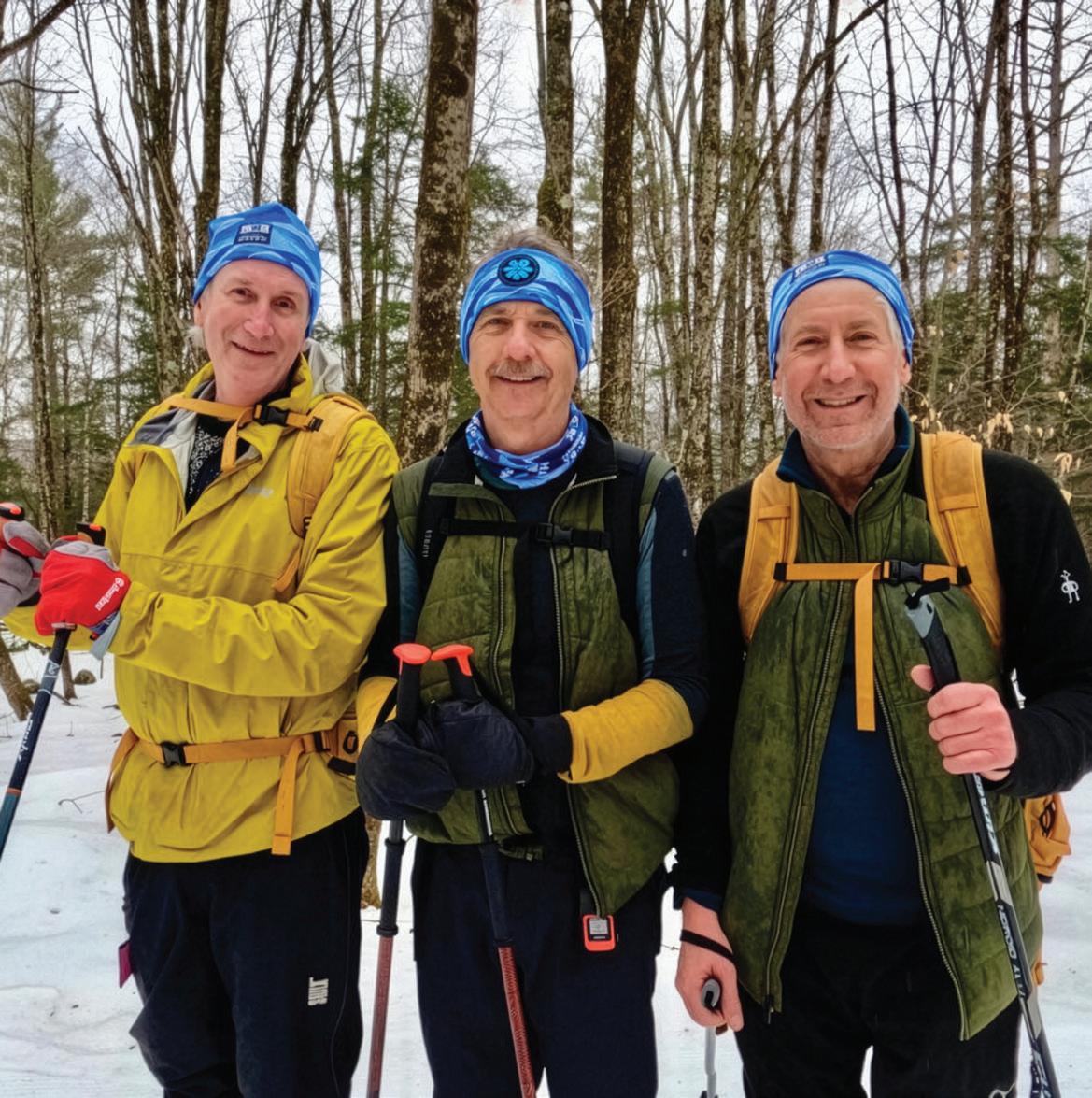
The evening is arriving as we toss our boots, poles, and sweaty jackets in the back of Zaino’s station wagon. I’m thinking about another day trip: A few weeks ago, Ben Rose and I were skiing slowly over a glittering meadow in impossible sunshine, discussing old-man baseball and the prospects of his squad, the Williston Armadillos. “I’m about the 13th best Armadillo,” he estimated. Our ski tracks were white lines on a white sheet, disappearing in both directions, thin reminders that our trip, and the whole Catamount Trail, is a delicate thread held together by generous landowners and cold air. “Last year, this Ruby Run trip seemed important, a conversation starter about climate change, and saving winter, and the importance of wild landscapes,” Rose said, after a career engaged with conservation and outdoor recreation, including a decade as the director of the Green Mountain Club. “This year, it seems indulgent in light of the global political dumpster fire. Maybe I should be out protesting, instead of skiing.” He’s wrong, of course. Going out into the still-frozen woods, gliding over snow, huffing up hills, bombing down chutes, pausing to hear the easy winds and downy flakes, watching where bobcat prints cross your path, looking down into a snug valley filled with homes and hopes is not indulgent. It’s an encounter with reality.
On the Ruby Run reunion tour, Rose kept track of his falls each day, in two categories.“Today was 5 soft and 2 hard,”he wrote in the team’s blog on February 11, 2024. “The second hard one drew First Blood fortunately no serious damage because I was able to break momentum with my face. All happy now.”
The founders of the Catamount Trail, from left, Steve Bushey ’81, Paul Jarris’80, and Ben Rose G’90 still smiling, cruising glades, and falling down in snow, 41 years after their first length-of-Vermont ski.
THE TREND IS CLEAR: FOR THE LAST
50 YEARS, THE NUMBER OF MALE
STUDENTS ON COLLEGE CAMPUSES HAS SLOWLY BUT SURELY DWINDLED. UVM
IS ONE OF THE INSTITUTIONS ACTIVELY
WORKING TO REVERSE THE GENDER GAP.
BY KRISTEN MUNSON
Nearly every week a new opinion piece muses about the problems affecting young men, often followed by another questioning if concerns are overblown. It can be a thorny subject to broach. Advocating for men can feel suspect when women’s reproductive rights are no longer federally protected, they have never been in the majority in Congress or on the Supreme Court, and the pay gap persists. But evidence is mounting that some young men, particularly those from rural, poor, and minority backgrounds, are being left behind—and ignoring a problem just allows it to fester.
“It is an axiom of political and cultural life that if problems go ignored, they turn into grievances that can be exploited,” said Richard Reeves, a senior fellow of the Brookings Institution, during a keynote about the widening gender gap in education held at UVM last April.
Reeves, author of Of Boys and Men: Why the Modern Male is Struggling, Why It Matters, and What to Do about It, argues that investing in boys shouldn’t come at the expense of girls—that both need to be able to recast their lives outside traditional gender roles.
“There are huge issues that we still have to face and continue to work on to get more women into STEM, more women in politics, more representation, safer public spaces,” Reeves said. “And there are a growing number of issues where we have to pay more attention now to boys and men, including in education, many areas of mental health, in terms of their abilities to be fathers in a radically transformed world. And we have to do both those things at once.”
DISAPPEARING MEN
Over the past five decades, men have slowly faded from many college campuses, including the University of Vermont. By the fall of 2023, the population of male-identifying students at UVM dropped to its lowest point since World War II. The Covid19 pandemic exacerbated this downward trend. While enrollment nationwide fell during Covid, male enrollment hit a new low. The first-year class at UVM in the fall of 2021 was 31 percent male.
The decline didn’t happen overnight.
Changes in federal policy during the Civil Rights Era reduced financial barriers for low-income students through scholarships and loans. The passage of Title IX in 1972 specifically prevented sex discrimination in educational settings. At the time, women received less than 44 percent of undergraduate degrees in the United States and comprised just 3 percent of lawyers in the country. These federal supports, alongside cultural shifts, enabled women to both envision and pursue new pathways for financial independence. They started outpacing men in the college population by the early ’80s. Now, the undergraduate gender gap has flipped—and widened.
The decline didn’t go unnoticed. In 1999, the feminist writer Susan Faludi published Stiffed: The Betrayal of the American Man, in which she argues that the “ornamental masculinity” promoted after World War II reduced men’s value as financial providers in a consumeristic culture. As globalization and mechanization upended the U.S economy—manufacturing jobs peaked in 1979—some men were left without a sense of purpose. Because the world changed, but ideas of masculinity didn’t.
NCAA athletics. It also goes beyond that. If we get too out of balance with our gender ratio, then we are at risk of being not compliant with Title IX.”
There is also a tipping point that admissions offices fear will hurt the ability to recruit all students. The same idea occurs when professions become too gendered—it can become difficult for others to break through.
“It will hurt us on both sides of the gender spectrum,” Jacobs explains. “Men don’t want to go to an all-women’s school, and we know that a significant proportion of women don’t want to either. We’re not there. I don’t think we will get there. I think we’re moving in the right direction.”
While some universities invested more in sports to attract male students, or developed specialized marketing campaigns, UVM focused on programming. The enrollment management team routinely surveys UVM students and admitted students and holds focus groups to understand trends. They found that women are more attracted to social justice and environmentalism while school spiritedness, entrepreneurship, and global engagement appeal more to men. The team markets UVM’s existing strengths in these areas and supported the launch of new initiatives such as the Vermont Pitch Challenge for high school students. The winner of the business competition receives a full tuition scholarship to UVM. It appears to be working—57 percent of Pitch submissions are from men.
This fall, UVM’s gender balance returned to pre-Covid levels, with males comprising 40 percent of the student body. The university also joined the Higher Education Male Achievement Collaborative, an effort to reduce the gender gap in college and increase graduation rates for male students who drop out at higher rates.
“What we’re doing is moving the needle,” Jacobs says.
“MOVING IN THE RIGHT DIRECTION”
Jay Jacobs, UVM’s Vice President for Enrollment Management, is a numbers guy. His job every year is to recruit a strong pool of students to UVM who can thrive in college. When Jacobs came to UVM in 2021 the gender disparity on campus was already on the radar.
“I vividly remember my very first meeting with our athletic director talking about the gender split,” he recalls. “There are operational things that rely on a more balanced gender ratio, and all of that is due to Title IX. … With Title IX you often think about slots on teams, opportunities to play in
AN ISSUE OF COST AND CONFIDENCE
Importantly, women aren’t pushing men out of college—men are choosing not to come. While some men don’t need a college degree for the job they want, the achievement gap between boys and girls, particularly in literacy, happens early on in education and may erode their opportunity to attend college in the future.
“The pipeline problem goes way before a student raises their hand to say they are interested in UVM,” Jacobs
says. “… As the land-grant public flagship institution in the state, I think we have a mission-critical aspect of making this place accessible to all Vermonters. We, along with the other public institutions of higher education in the state, have some obligation and some power to move the college-going rate needle.”
According to Jacobs, there are two main reasons Vermonters, primarily men, aren’t coming to college. The first is cost—either the perceived cost of college or the opportunity cost of foregoing making money in a job directly out of high school.
“The other is the confidence levels,” Jacobs says. “And I think that is exacerbated in our state being a rural state and [the perception of] UVM as this ivory tower on the hill and ‘I don’t belong there.’”
In recent years, UVM introduced the UVM Promise, a program that allows eligible Vermonters to attend tuition-free, to boost the college-going rate. The confidence piece is potentially trickier to overcome. And it exists at a precipitous time. Fewer men in their working prime are participating in the labor force than in decades prior. A 2025 report from the U.S. Bureau of Labor projects half of the 20 professions predicted to grow fastest over the next decade are in healthcare, a sector where social skills are critical, and in which women already dominate. The other top growth areas include green energy, accounting, and computer and data sciences, which mostly require some advanced degree or certification.
But one statistic in particular gnaws at Jacobs: the suicide rate of men ages 15 to 24. That figure has accelerated and is now four times that of women.
“It’s the same number as the number of women we lose to breast cancer every year,” he says. “But we don’t have the same kind of visibility or conversation about the male suicide problem.”
There are a few different “whys” that the drop in male college-going rate matters—the “operational why” and the “philosophical why,” Jacobs says.
“We need diverse perspectives on our campus,” he explains. “We know that there are significant civic implications of not educating men. We know that there are significant political implications, meaning being an engaged democratic citizen. We know that there are safety issues—higher suicide rates among uneducated men over collegeeducated men. … We need to be welcoming to all.”
STANDING OUT
Holden Larsen ’24 always knew he would go to college. He grew up in Kirby, Vt., in a family where higher education was valued. Larsen enrolled at UVM because he wanted to stay in Vermont, and because his brother went there.
“I knew the community and I knew that I had community,” he says.
Larsen majored in psychology and thrived in college. He studied abroad in Japan for a year and gained fluency in the language. Larsen recently reconnected with middle school friends, one who told him about forgoing college after high school to work for his father’s cabinetmaking company.
IT WILL HURT US ON BOTH SIDES OF THE GENDER
SPECTRUM...MEN DON’T WANT TO GO TO AN ALL-WOMEN’S SCHOOL, AND WE KNOW THAT A SIGNIFICANT PROPORTION OF WOMEN DON’T WANT TO EITHER. WE’RE NOT THERE...I THINK WE’RE MOVING IN THE RIGHT DIRECTION.
“He is making good money. He is buying a house. So, I was like, you are winning!,” Larsen says with a laugh. His friend wasn’t so sure. He described turning 18, feeling afraid, and taking the easy way out.
“I get that,” Larsen says. “He was really scared to make that transition. For me, there was no other path.”
These days Larsen is earning his yoga teacher certification, hoping to blend his psychology background with the health and fitness side of yoga, and feels he took the right path for himself. “I have grown, and I have learned a
WE,
lot more about myself. And that development is 100 percent why people should go to college.”
But his experience was eye-opening in other ways, too. For instance, Larsen worked as a resident advisor his sophomore year and noted the severe gender ratio imbalance on his floor. In some classes, he was one of only a few male students. Sometimes it made him nervous to speak, especially if his experiences didn’t match what most of his classmates already thought.
“There is a lot of pressure,” Larsen says. “It was hard. … As a man it’s kind of like you’re bigger, you stand out, so you feel like obviously I am the strongest person here, but dude, we are so sensitive to emotional stuff.”
Growing up, Larsen often hung out more with female friends, so it wasn’t an altogether unfamiliar dynamic, but sometimes, he says, “I kind of wish I had more just easy male connections around me.”
ALONG WITH THE OTHER PUBLIC INSTITUTIONS OF HIGHER EDUCATION IN THE STATE, HAVE
SOME OBLIGATION AND SOME POWER TO MOVE THE COLLEGE-GOING RATE NEEDLE.
In his senior year, Larsen discovered a program designed to foster this type of community: My Meaning of Masculinity (M3). The program developed out of a working group spearheaded by UVM’s Women and Gender Equity Center, aiming to engage masculine-identifying students. It started as targeted trainings for Greek life or athletes about healthy relationship skills, explains Evan Cuttitta ’16, UVM’s Men & Masculinities Program director.
Cuttitta was hired in 2022 to coordinate a men and masculinities program. The foundation of M3 is based on intergroup dialogue where participants are expected to recognize areas where they agree and disagree or simply listen to each other without judgment. Larsen loved attending the sessions.
“I would consider myself on the more masculine side of things in terms of the way I was raised and the way that I think,” he says. “But then you have also people
THE GENDER DIVIDE
These statistics, highlighted in the documentary “Gone Guys,” reveal striking gaps in education, work, and health between men and women today.
DEGREE REVERSAL
In 1970, men earned 13% more bachelor’s degrees than women. Today, women earn 16% more than men.
* National Center for Education Statistics
HIGH SCHOOL GPA
Only about one-third of the highest GPAs are earned by male students, while nearly two-thirds of the lowest high school GPAs belong to males.
* High School Longitudinal Study of 2009, National Center for Education Statistics
WORKFORCE DECLINE
In 1960, 97% of prime-age men were in the workforce. Today, it’s 88%.
* U.S. Bureau of Labor Statistics, 2025
MEN & OPIOIDS
Nearly three out of four opioid deaths are male.
* National Center for Injury Prevention and Control, CDC
GONE GUYS
A few years ago, a long-time Vermont high school teacher told Myles Jewell ’05, that he was concerned about young men. He noticed a pattern in his classrooms—and it wasn’t good. This was before Josh Hawley published Manhood: The Masculine Virtues America Needs, before Richard Reeves wrote Of Boys and Men: Why the Modern Male Is Struggling, Why It Matters, and What to Do About It.
“He was feeling like they weren’t finding a place,” says Jewell, a filmmaker and lecturer in UVM’s Department of Community Development and Applied Economics. “So, I started paying attention. … I grew up one of four boys, played lacrosse [at UVM], was a student-athlete. I never really fit inside that dynamic, but I lived alongside of it.”
So, when Chad Ervin, a former editor on PBS’ Frontline, reached out to Jewell about filming “Gone Guys,” a documentary blending data about the declining health and education outcomes of men with the experiences of young people, he was already familiar with the topic. Still, it wasn’t an easy sell.
“I wanted to know how it was going to be approached,” Jewell explains. “What is the angle? I was not super interested in flying in, flying out. … With any project there’s always some type of moral compass involved.”
As an ethnographer, he thinks a lot about the ethics of representation and the responsibility of a storyteller to avoid inflicting harm on the participants. Jewell has worked for a decade in Vermont education circles and as a mentor for immigrant students. He didn’t want to look at boys through a stereotypical lens and talked with Ervin to understand the trustbuilding that would be used to produce “Gone Guys”—because people are complicated. They often don’t fit inside the tidy boxes society constructs.
For Jewell, serving as co-director of photography on “Gone Guys” was an opportunity to expand the depictions of manhood to include traits of tenderness, humor, and vulnerability. The film features various local support groups for male-identifying students, such healthy masculinity classes in Vermont schools and UVM’s My Meaning of Masculinity program.
“Lord knows, if our lived experience is being shaped by what we watch and what we see, think about what mainstream media or what social media is putting out,” he says. “It is not giving us a very nuanced or very contradictory view of how we should be.”
The film was funded by the Vermont Community Foundation and the Tarrant Foundation and designed to be watched in small settings to encourage conversation—it was never intended to be the final word.
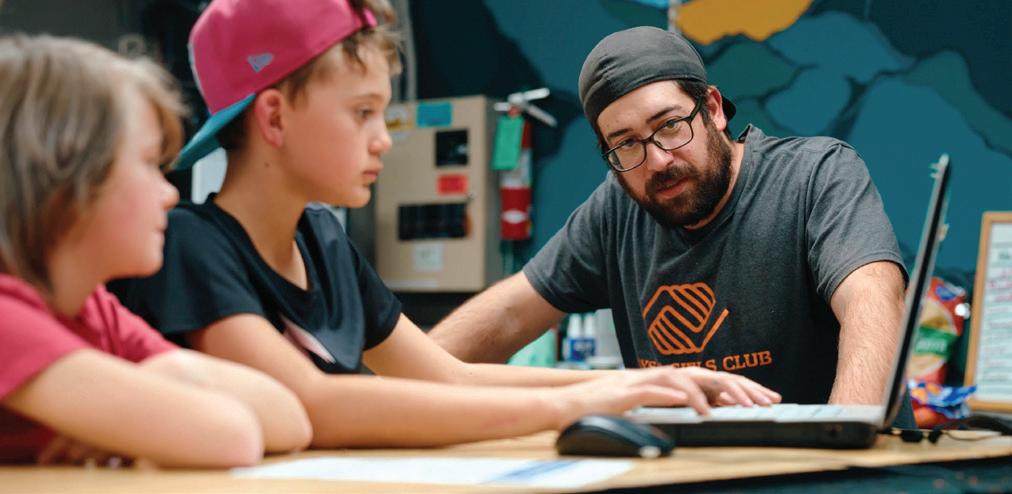
“We’ve been wanting to do projects that are not about likes or views but about the community building thing that can happen,” Jewell explains. “This film was not supposed to provide an answer, but it was supposed to spark discussion.”
But it can be a difficult discussion nonetheless, particularly amid concern of a backlash against women.
“It’s very hard to find the correct language that’s not going to become ‘either/or’ very quickly,” Jewell says. “We have to keep reminding ourselves in this discussion that it’s not that we put too much resources into [women] … It’s that some people are getting missed and we need to find new ways to reengage. And part of that reengagement is by having discussions and finding the language.”
The discussions also need to involve diverse voices. The screening Jewell attended was concerning—he and Ervin were the only men in the room, he says. “It was all women and moms.”
This echoes the mentoring gap experienced by boys at Burlington’s King Street Center that is highlighted in the film. Jewell hopes viewing “Gone Guys” makes people show up for adolescent boys in their communities and recognize that work remains to be done for women and girls.
Let’s not forget that,” Jewell says. “ … Let’s roll up our [expletive] sleeves.”
WATCHATRAILER
Learn more and watch a trailer for “Gone Guys” by scanning this QR or visiting goneguysfilm.com
INTERESTEDINHOSTING AVIEWINGONCAMPUS?
Contact Evan Cuttitta at evan.cuttita@uvm. edu to host a viewing of “Gone Guys” on campus.
who are on different spectrums of masculinity, different ways of seeing it … It was not a dialogue about this is what [masculinity] is and this is what it should be, it was much more like how do we accept ourselves … and how does the idea of masculinity even affect our life? It was really cool.”
Months after graduating Larsen is still reflecting on the program. For instance, being able to talk about his time in Japan, where gender roles are rather strict and his outgoing personality was not always appreciated.
“Getting to speak about that, and have stake, and be vulnerable in that way, you can read about it, you can write about it, but like saying it in front of people sticks with you,” Larsen says.
MAKING CONNECTIONS
In 2023, then Surgeon General Dr. Vivek Murthy released Our Epidemic of Loneliness and Isolation, a report outlining a problem plaguing both the old and the young across the country. Ironically, loneliness and isolation are not individual problems. They erode the fabric of our society.
“Instead of coming together to take on the great challenges before us, we will further retreat to our corners—angry, sick, and alone,” the report warns.
Belonging is more than a fuzzy feeling. A sense of belonging is an intrinsic human need. Socially connected people have more people to lean on and more relationships that promote positive behavior. Yet, Americans’ social networks are shrinking, and young adults spend less time socializing with friends than ever. This can have deadly consequences—social connection is a critical factor for reducing suicide, particularly for men
The Surgeon General’s report calls for action across institutions, including for dialogue in schools to foster deeper social connections. That is precisely what UVM’s M3 program aims to do and something Evan Cuttitta knows something about. In 2011, he enrolled at UVM to major in environmental science. A high performer in high school, Cuttitta’s grades were shaky at UVM, and he says he felt like an imposter in the program. This collided with a desire to prove his independence, so Cuttitta struggled in silence.
“I intentionally avoided asking for help when I was struggling academically,” he admits. “I didn’t know how to be vulnerable as a
way to form some deep relationships.”
With his grades tanking, Cuttitta took a semester off to re-evaluate. Back home, he took community college classes and volunteered on a farm and for a food rescue nonprofit.
“I realized I have this really deep, strong value for service,” he says.
That understanding shaped his trajectory back at UVM. Cuttitta joined clubs, volunteered every semester, and became a peer mentor—experiences that deepened his connections in the community and gave him a greater sense of purpose.
Prosocial behaviors are essential for any student to succeed in society and have a fulfilling life, Cuttitta explains. “The thought behind M3 was to focus on behaviors that support persistence in college. … A big thing that we stress is help seeking behaviors and the different ways that looks.” This help could come in the form of a tutor or a mentor—and it doesn’t always have to come from another man, Cuttitta explains.
I HAVE GROWN, AND I HAVE LEARNED A LOT MORE ABOUT MYSELF. AND THAT
DEVELOPMENT IS 100 PERCENT WHY PEOPLE SHOULD GO TO COLLEGE.
Most of the M3 programming is open to people of all gender identities. In fact, transgender men are the second most common gender identity attending M3 events. This year, the M3 program is building a peer-mentorship program. The goal is to provide another door to connect people, especially Generation Z men, Cuttitta says. “Seventy-seven percent of Gen Z men say they say can depend on three people or fewer outside of the family. … Having people you can depend on is a huge part of persisting in college.”
It’s also a huge part of persisting in life.
Unfortunately, the messaging Gen Z men receive is increasingly strict. In June, Equimundo: Center for Masculinities and Social Justice released its latest report, State of American Men, and surfaced alarming trends:
Most men and women say the key trait of manhood is being a financial provider, and the percentage of men who agree with masculine norms that prioritize emotional stoicism, physical dominance, and self-reliance is growing. Moreover, men facing financial instability were 16 times more likely to report suicidal ideation. The results mirror a 2023 meta-analysis that found male norms of emotional suppression and failing to meet standards of male success were associated with suicide risk.
“We need a less rigid way for men to exist,” Cuttitta says. “The expectation for all men to be the breadwinners is harmful to men and women, and simply unrealistic. Men are human beings with emotions, talents, and dignity. So why don’t we imagine multiple ways of being a ‘provider’ through service, caretaking, [or] teaching?”
REFRAMING MASCULINITY
Before coming to UVM, Sean Pouncey had never heard of a masculine space, unless it was inside a locker room. He grew up in Montgomery, Ala., the child of separated parents who didn’t have a healthy relationship. Pouncey often felt angry and depressed and didn’t know how or who to talk about it.
“It felt humiliating sometimes to be like ‘hey, can I talk to you? This is really bothering me,’” Pouncey says. “... You don’t see your friends asking for help, and then you do it and then it makes, just subconsciously, it makes you feel like, am I doing something wrong?”
Pouncey, a sociology major, chose to attend UVM to experience an unfamiliar place and step outside his comfort zone. That process has involved following his advisor’s nudges to join both UVM’s Young Men of Talent and M3 program.
“It made me realize that a lot of the things that we talked about in M3, I think about a lot,” Pouncey says. “And it made me realize that maybe some of my experiences are actually worth listening to.”
Now he finds himself trying to engage other male individuals on campus to join M3.
“I needed it more than I thought I did,” he says. “Since going to the M3 program, and being at UVM in general, I feel like I’m starting to transform into the person that I really want to be. There are certain things I don’t want to be associated with myself, and there are things I am working on.”
For Pouncey, that means modeling the behavior he wants
to see. Growing up, he repeatedly saw that the people hurt most from sexual and domestic violence in his circles were women and children. Pouncey wants to break that cycle.
“There is no sugarcoating it, this is a problem with masculinity,” he says. “Men are doing this to their own children, their wives.”
Pouncey sees the M3 program as both a healing space and a place to encourage needed dialogue for men on campus. He puts this belief into practice by taking on advocacy roles on campus.
WATCH: THE MISSING MEN ON CAMPUS
Visit go.uvm.edu/cbs-men or scan the QR code to watch a CBS Sunday Morning segment featuring UVM’s Jay Jacobs and students about how gender disparities are shaping college life and supports.
“I try to show less of what it means to be a man and more what it means to be a human. … Characteristics of compassion, empathy, kindness, caring— none of these things are inherently bad. They shouldn’t be genderized,” he says. “Masculinity doesn’t have to be so rooted in manly things.”
Pouncey also volunteers with Discover UVM—the same program that introduced him to UVM—and served as a panelist and orientation leader this fall. Afterwards, a first-year student approached him about joining M3.
“That is probably the proudest moment on campus that I’ve had so far,” he says with a smile.
Pouncey’s left arm is decorated with tattoos, including a character from a favorite video game, half of two hearts that mirrors one of his sister’s, and a semicolon.
“Do you know what the semicolon represents?” Pouncey asks. “In English, the semicolon is to indicate that the writer will continue, versus a period.… It’s a [suicide awareness] movement: stay another day.”
For him, the tattoo is a daily reminder to live out his values. He believes if it wasn’t for the insistence of his advisor to join UVM’s Young Men of Talent and M3 programs that fewer doors would be open to him, including the opportunity to be featured in the new documentary about male disengagement, “Gone Guys” (see sidebar on previous page).
“It just goes to show that sometimes one person can open up a whole new world,” he says.
46
We heard from Peggy Logan just after she had celebrated her 100th birthday. She lives in the passive solar home she built in the 1980s. At the time of writing, she had been hoping to have a summer visit to Burlington. ( See Peggy’s picture with online notes.)
47
51
Send your news to –Mrs. Louise Jordan Harper louisejordanharper@gmail.com
Susanne Loizeaux Gibson passed away in March 2025. A College of Arts and Sciences alumna, she had remained active as a volunteer and a reunion participant. John (Jack) Holly is 95 and living in his house in Schenectady, N.Y., with help from his son and daughter-in-law. He taught art for 44 years and often went to the theater in New York City. He holds many wonderful memories of UVM and life since.
54
Marilyn Noyes Carmen passed away in June 2025. Holly Tapley Maroney ’87 let us know that her mother, Nancy Burden Tapley, passed away in August 2025. Nancy is survived by her husband of 65 years, David Tapley, daughters Holly and Leigh Tapley Williamson ’84, and six grandchildren: Chris Williamson ’24, Jill Williamson ’21, Becca, Ben, Cassie, and Greg.
55
Class Secretary Jane Morrison Battles writes, “Hi ’55ers, all. I have seen several younger UVMers proudly sporting sweatshirts, vacationing hereabouts in the Florida Keys...all of which tell me how ‘wicked’ cold it was there back in Vermont! How well I remember that, in dashing to-and-fro to classes… Here I go gang, 70 years later as your Class Secretary! Fellow Tri-Delt Liz Melloon Tobi writes from Buffalo, Wyo., that she is leading a peaceful life there, enjoying beautiful views and spending much time tending her gardens.. a lovely message indeed… I send you all warm greetings and do hope to receive a bit of news from you soon.” Fran Kidder Stiles and her sister Libby Kidder Michael ‘58 enjoyed a July reunion with cousin Don Kidder ‘57 and three generations of the family (including grandson Jay Yarlott ’28) in celebration of Don’s 90th birthday. Fran notes that,both as a student and an alumnus, Don was and is devoted to UVM.
Send your news to –
Ms. Jane Morrison Battles janebattles@yahoo.com or Mr. Hal Lee Greenfader halisco7@gmail.com
LIFE BEYOND GRADUATION
56
James “Jim” Poole passed away peacefully at his home in Newcastle, Maine, in February 2025, at the age of 92. Daughter Ann Poole Mann shared: “Born on July 6, 1932— what would become the lowest day of the Great Depression’s stock market—Jim often quipped that things could only go up from there!” His college years with his Sigma Alpha Epsilon fraternity brothers remained a source of pride.
Send your news to –Ms. Jane K. Stickney stickneyjane@gmail.com
57
Doug Burke writes, “Janice (Fayen) and I are both celebrating 90th birthdays this year. We are in relatively good health, and enjoying our 11th year at Cypress of Hilton Head, S.C., a 100-acre Continuing Care Retirement Community. We enjoy dinner in the dining room nearly every night. We were able to join our children and grandchildren at Birch Island, on Little Sebago Lake for two weeks in July. We have enjoyed Birch Island for 35 years, including several years of ‘Grammy’s tennis camp for five grandchildren without parents.’ Four of five grands and our first great-grand, Callan, were with us for July 4. All three sons are retired, including Stuart ’85 and his wife Kelly (Knox) ’85, who moved to Warren, Vt., last fall. Stu is a ski instructor at Sugarbush. Jon ’80 and Colleen moved from Park City, Utah to Reading, Mass., two years ago to provide daily care for Callan while his parents worked. Meanwhile, Heather Russell Burke ’88 and Greg live in St. Augustine, Fla. All three sons are avid skiers!” Margaret Daronco wrote just as she had celebrated her 90th birthday in style in Surgio’s restaurant in Pelham, N.Y., with three daughters, seven grandchildren, seven great-grandchildren, former students, and friends. She keeps active by playing bridge, reading with two book clubs, knitting for women and children in a group home, and spending time with family and friends. Marlene Patrick Thibault celebrated her “90th birthday in June by meeting Al Roker at the NBC Today show.” She adds, “I enjoy my weekly hospital volunteer work as a greeter and my participation in an eclectic book club. I’m grateful that I can connect each week with colleagues by Zoom and exercise three days a week with retired teachers, also UVM graduates.” ( See a photo of the duo with online Notes.)
58
Judith Rosenblum Cohen wrote in memory and appreciation of Terry Siegel, who passed away in January 2025. Terry was a sister of Alpha Epsilon Phi, and stayed
close with her sorority sisters until her very last day. Her loved ones remember her as having a “firm way of doing things, but it was invariably the right, moral way.” ( See a picture of the friends with online Notes.) Ronald E. Downer has been reviewing his past musical career, having recently stopped playing the trumpet after many years. He fondly remembers playing with fellow UVM musicians, Earl McDonald ’59 (trombone), Gary Richardson ’57 (banjo and vocal), Mike Zacchilli (piano), and Tom Barns (drums). Fun UVM memories, along with hours in the chemistry and biology labs! “Thanks, UVM professors and administrators!”
59
Five years later, Martha Page Beach continues to recover from a stroke. Her family visits regularly and often, and she still follows news of Vermont and UVM. Benson A. Snaider shared the sad news that Lawrence “Duke” Markell passed away peacefully in his sleep in March 2025. Duke is remembered as a wonderful buddy, roommate, lawyer, father, and grandfather — a mensch in all respects. Nancy Fitzpatrick ’78 shared news of Maurice E. Castagner ’s passing in January 2025, remembering that Mo came to UVM after serving in the Air Force and brought a love of baseball with him. While at UVM, he played varsity baseball under Hall of Fame Coach Ralph LaPointe ’58
60
Philip E. Beaulieu ’s wife Carolyn shared the sad news that he passed away in March 2025. She recalled that he loved UVM, and was also a proud Burlington High School graduate. A private pilot, he loved flying and spent a lot of time sailing “like a fish.” When we spoke, Carolyn was looking forward to attending Burlington High School’s upcoming class reunion in Philip’s honor. Joan Fallon let us know that her husband Richard L. Yett , known to loved ones as Buddy, passed away in April 2025. Judith Gerber Hammond sent greetings to Bob Wiener with a note saying she is “living in Columbia, S.C.” and is “still alive and functioning.” Lorraine C. Manley ’68 shared the sad news that James L. Manley passed away in January 2025. ( See James’ picture with online Notes.) Geoffrey Moss wrote while preparing for a solo exhibition of paintings and drawings at Childs + Clark Gallery (Great Barrington, Mass.) in July and August. He says that Professor Colburn and UVM are “always in the work.”
61
Class Secretary Steve Berry shares news from the class of ’61: Joe Buley reports: “Geri and I have joined that rari-
MAIL YOUR CLASS NOTES: UVM Alumni Association 61 Summit Street, Burlington, VT 05401
SUBMIT YOUR CLASS NOTES: alumni.uvm.edu/notes or class.notes@uvm.edu
fied 1 percent of the population over 85; so we can’t complain. The grandchildren keep us young, and we report the birth of our first great-granddaughter, Cecilia, to Lucas and Olivia Buley Lundell, in February. A new candidate for the Class of 2046.” The last issue of UVM Magazine contained news that Roger Zimmerman and Bob Murphy were both in Des Moines, Iowa, to compete in the 2025 Senior Games, from which Bob emailed: “I can report to you that as part of the Vermont contingent here at the National Senior Games in Des Moines, I was pleased to be able to finish first in both the 5k and 10k road races. The field of participants in my age group (Mens’ 85-89) was pretty slim (only four of us in the 5k, three in the 10k), so bragging rights are questionable. Nevertheless, I had a pleasant time, and I’m happy I came.” He adds that, “Anyone who can compete in the 85-89 age running group has bragging rights!” Bob also regularly meets with his Wells River High School 1957 classmates. His class had nine graduates, six of whom attended UVM. Five of those graduated together in ’61, including Walt Bone, Amalia Homeister Fisher, and Ted Clark who left UVM after his freshman year. Harriet Pudvah Sherman does not live near enough to attend, and Carolyn Ann Sherwin Thompson died last fall in Florida.“ As for his own news, Class Secretary Steve writes, “Louise and I spent two weeks in Stowe in July. I climbed one peak (The Pinnacle, which I try to do once a year) and we enjoyed the bike trail from the Burlington waterfront to the bike ferry on the causeway to South Hero. Our next trip will be a repeat to Southern Utah, Zion, and the south rim of the Grand Canyon in September.” Nancy Miller Kimball emailed news of an April birding trip in Arizona’s Chiricahua Mountains, where she saw many species of migratory birds but, alas, not the elegant trogon. She has spent the last 24 years as a wildlife rehabilitator, caring for a variety of mammals and birds, and has just published her second book, Adventures Inside, Outside and Beyond the Cuckoo’s Nest, a memoir of her U.S. travels from 1977 to 2001. Jamie and Jean (Pillsbury ‘62) Jacobs continue their travels and reported: “During the spring we visited our younger grandson at his new digs in the Florida panhandle. In June, we returned from redoing our honeymoon of 60 years ago and now are about to leave for Montana for our annual fly fishing week with good friends. Then it will be off on a two-week safari in Zimbabwe during early August. We feel truly blessed and wish the same fortunes for our classmates.” Sally Temple Cavanaugh and Alpha Chi Omega sorority sister Pam Havens Amidon have become residents at New Horizons at Choate in Woburn, Mass. Pam says they were delighted by the surprise of finding themselves there, 63 years after meeting at
UVM. Stephen William Gersten ’65 let us know that Jerry Gersten passed away in January 2025. Connie Anderson Rogers ’63 wrote to share the sad news of the death of her husband Jim Rogers in June 2025. The two had a wonderful life together for nearly 62 years; she shared that he had been much respected in their community, had devoted 40 years of his life to Gilroy Unified School District, and been an avid golfer for 78 years.
62Stephen Burzon writes, “After nine magnificent years living in St. Maarten in the Dutch Caribbean, Nancy and I decided to return to Vermont to be with our expanding family, more than we could living abroad. New great-grandchildren, weddings, and engagements, and a chance to be with old friends more brought us home to Manchester, Vt. We recently renovated a home here and, with the remodel mostly done, we are very happy and comfortable. We will be in Vermont until January when business interests of mine will take us back to St. Maarten until mid-February. Then, we will fly from SXM to France for a threemonth visit. We will be based in Bandol in the south. Then, in May, back to Vermont and warm weather in the Green Mountains. Hello to all. Give us a shout when you are nearby.” ( See the cover of his book, “Cruising World,” with online Notes.) Elaine Heller Goldstein writes that she is still living a fun, full, and active life in Denver, where her husband Joel went to medical school. She spends time working as a travel agent, and traveling to and from Boston, where three children and spouses and eight grandchildren reside. She says that so far, all but one in their family have graduated from Williams College, but is hoping soon for a UVMer. She sends hopes that fellow classmates are enjoying these days, and are finding time for laughter and joy. Forrest Woody Manning retired in June after working in some capacity with the Middlebury, Vt. school district since 1963. He says he has been ill with heart issues since his 86th birthday in March. Jules Older sends Tena koe no Aotearoa (Greetings from New Zealand). He and Effin Older are about to run a short version of the writing course that Jules initiated at UVM, “Writing For Real.” This one is for U3A (University of the Third Age). Since the course will run in Auckland, New Zealand, he jokes that it may be a wee bit challenging for most alums to attend.
Send your news to –Mrs. Patricia Hoskiewicz Allen traileka@aol.com
Class Secretary Toni Mullins writes, “Greetings Class of ‘63. Wishing you all well, healthy and happily enjoying life in our 80s! I continue to enjoy an active life, teaching Pilates at my private studio and Life Time Fitness, and dancing Pro/Am International Latin Ballroom. My family also actively pursues their interests. Daughter Kelly, her husband Chris, and their pups enjoy all that Colorado gives. Daughter Karen and her pup Ruby enjoy all that life on our Jersey coast offers. In addition, she’s an exceptional writer of poetry, a talent she inherited from her dad Robert E. Walsh ’63. Twin grandsons Evan and Drew also
pursue their interests: Evan is in the Air Force, air traffic control, based in Turkey; Drew, girlfriend Carly, and their pup Penny are in the business world here in New Jersey. That’s it for now. Keep moving! Movement heals and motion is lotion for our joints!” ( See Toni’s photos with our online Notes.)
Send your news to –
Dr. Toni Citarella Mullins tonicmullins@verizon.net
64
Susan Griesenbeck Barber sends greetings from Addison, Vt., but notes that by the time this is in print they will be back home in Harvard, Mass ., after another super summer on Lake Champlain. She’s in regular contact with Susan Weatherby Engbrecht, using WhatsApp, and reports that Susan is living the good life near Aviano Air Base in Italy, and visits the U.S. each year, though they didn’t get to see each other at the lake camp in 2025. She also reports that Linda Sparks is living in South Burlington and the two talk on the phone and try to get together at least once per summer. Linda spoke of two wonderful trips–one to Egypt, and a cruise from Budapest to Amsterdam on the Danube River. Susan closes with wishes for all to “until the next time, stay healthy and be safe.” Alan L. Brown writes, “Not much new here except happy to still be kicking at age 83. I recently was honored by being awarded my 25-year certificate by the Society of Former Agents of the FBI for being a member since retiring in 1998. My guest at the award ceremony was Mr. Frank Abagnale and his wife, who traveled to Atlanta from Charleston, S.C., to honor me as his guest. For info: Frank was the subject of the movie and book Catch Me If You Can, and I was one of three agents to arrest Frank at Smyrna, Ga. in 1972 after his escape in New York at JFK Airport upon returning in custody on a plane from Europe. Frank did his time, has been teaching new agents pro bono at the FBI Academy for many years, and is a successful world-known cybersecurity expert and consultant in the art of the con, fraud, embezzlement, and many other security matters. I am still residing in Peachtree City, Ga., and, I think, finally and fully retired!” Edmund M. Healy is still spending summers in Lake George, N.Y., and winter in Largo, Fla. He sends warm regards to all former residents of 56 Summit Street (Sigma Alpha Epsilon). Marilyn Keith Rivero writes, “This past year has been good to me in health and happiness. I am very proud of my granddaughters and other family members who are attaining further education. One has just completed her doctorate in biochemistry engineering from Tufts. Another is entering the master’s program in health management in Colorado. Another is pursuing a master’s in world communications at George Mason University, in addition to her career in the Air Force. And yet another is attaining a bachelor’s in nursing.” Additionally, Marilyn’s first daughter is finishing a doctorate in management at Creighton University. Other family members have pursued culinary diplomas and become chefs in addition to their present careers. Another is studying library science. Her granddaughter, who works at Disney World, is finishing her B.A. and studying pre-law, and her sister is
| CLASS NOTES
with Disney in Florida also. She notes that the rest of her family are very successful in their careers, too. On top of that, the family has had lots of travel this year, including trips to Asia, Europe, Brazil, and cruises to Greenland, the Mediterranean, and the Caribbean. She says she has a lot to be thankful for, and hopes all are similarly healthy and enjoying life. Send your news to –Mrs. Susan Griesenbeck Barber suebarbersue@gmail.com
Kathleen A. Bennett shared the sad news that Edward L. Bennett died in in Branford, Conn., in January 2025. Rose Levy Beranbaum writes that in June 2025 she was honored as a recipient of the James Beard Cookbook Hall of Fame (“the Oscars of cookbook awards!”). She is also working on a memoir, “Ma Vie en Rose.” Sadly, Meredith Rogers Kaplan shared that her husband Jack Kaplan passed February 2024. The two met at the UVM bookstore, then in the Waterman building, had three dates, got engaged, and then married and spent their lives together until his passing. Tony Marro and Jackie Cleary Marro ‘66 live in the restored historic Putnam Hotel in Bennington “just 60 and 59 years after graduating,” where they are involved with the local museum, library, hospital, and theaters. Major investors in the restoration of the historic core of the village, they headed the creation of the six-acre George Aiken Wildflower Trail on the museum grounds. As a reporter and editor, and the recipient of an honorary degree from UVM, Tony worked for the Rutland Herald, Newsday, Newsweek, and the New York Times, and was a member of teams that won two Pulitzer prizes. Jackie was a fashion designer who later taught at the University
of Maryland and earned a master’s degree in education from NYU and an MBA from Maryland before running a retail business for 20 years. She now is the owner and curator of the Vermont Dollhouse & Toy Museum in Bennington. Their daughter, Alexandria, graduated from Brown and is a major figure in the arts community in Providence, R.I. ( See a photo of Tony and Jackie with online Notes.) Jim Pawlowski is a NASA retiree and was inducted into the Texas Senior Softball Hall of Fame. He lives in Houston.
66
Stephen Alan Degray went on to finish medical school after service in the U.S. Army in 1975. He writes that he’s from the great city of Ripton, and privileged to have been born in Vermont, where he’s spent almost half of his life. He recently saw mention of Vermont as a #1 place to live in this country, and agrees in most respects. Myron J. Fox sent in a note from a reunion with Art Fromer and Hayes and Bonnie Sogoloff. ( See a picture of the quartet enjoying an afternoon on Lake Champlain with online Notes.)
Send your news to –Mrs. Kathleen Nunan McGuckin kathynmcguckin@gmail.com
67
Class Secretary Jane Carroll shared the sad news of the passage of Laura Frank , member of Alpha Epsilon Phi sorority, who went on to worked as project manager at Synapse, Inc., a division of Time, Inc. She was long involved with the Society for Humanistic Judaism and the Jewish Community Center of Stamford, Conn., among many worthy causes that benefited from her warmth and caring. Roger Neal Allbee also sent in a note celebrating Laura’s life, and also to say that
The Power of Staying Connected
“It feels like coming home.”
For Cathy Irish Tremblay ’85, volunteering isn’t about titles - it’s about people. From her early days cheering on the Catamounts to her recent tenure as President of the Alumni Association Board of Directors, Cathy shares how giving back has brought unexpected friendships, lifelong connections, and a deeper sense of pride in UVM. Discover her journey, her advice for new grads, and why she says volunteering makes her feel like she’s coming home.
he is pleased that the Center for Research on Vermont at UVM, along with White River Press, recently published his book, Turning the Soil: 250 Years of Vermont Agriculture, which chronicles changes in agriculture, why they occurred, and how farmers adapted to these changes to survive today. We were saddened to also learn that Timothy Hayes passed away in August 2025. Diane Mayland sent in a summer picture with Claire Buckley, Ann Grosz , Dorcas Hanna, Jayne Martinsen, Ruth Matthews, Betsy Neumeister, and Nancy Portnow The Pi Beta Phi alumnae gather in Vermont every summer and have been for over 50 years. ( See their picture with online Notes.)
Send your news to –Ms. Jane Kleinberg Carroll jane.carroll@cox.net
68
Class Secretary Diane Duley Glew shares: “A Jack Rosenberg photograph was one of the pieces selected for the Maryland Federation of Art (MFA)’s first “In the City’ exhibition by juror Christina Gomez of the School of the Art Institute of Chicago. Jack was also selected to participate in MFA’s “Reflecting 2025 Exhibition.” She says, “Congratulations, Jack!” Sigma Phi Epsilon brothers Bruce Latelle and Malcolm (Mogie) Lee get together weekly for a round of golf. Mogie spends winters in Lampasas, Texas and summers in North Hero, Vt. Bruce spends winters in Winter Park, Colo., and summers in Shelburne, Vt., and Kennebunkport, Maine. The two have been friends since grade school and grew up on the same street in Springfield, Vt.
Send your news to –
Ms. Diane Duley Glew ddglew@gmail.com

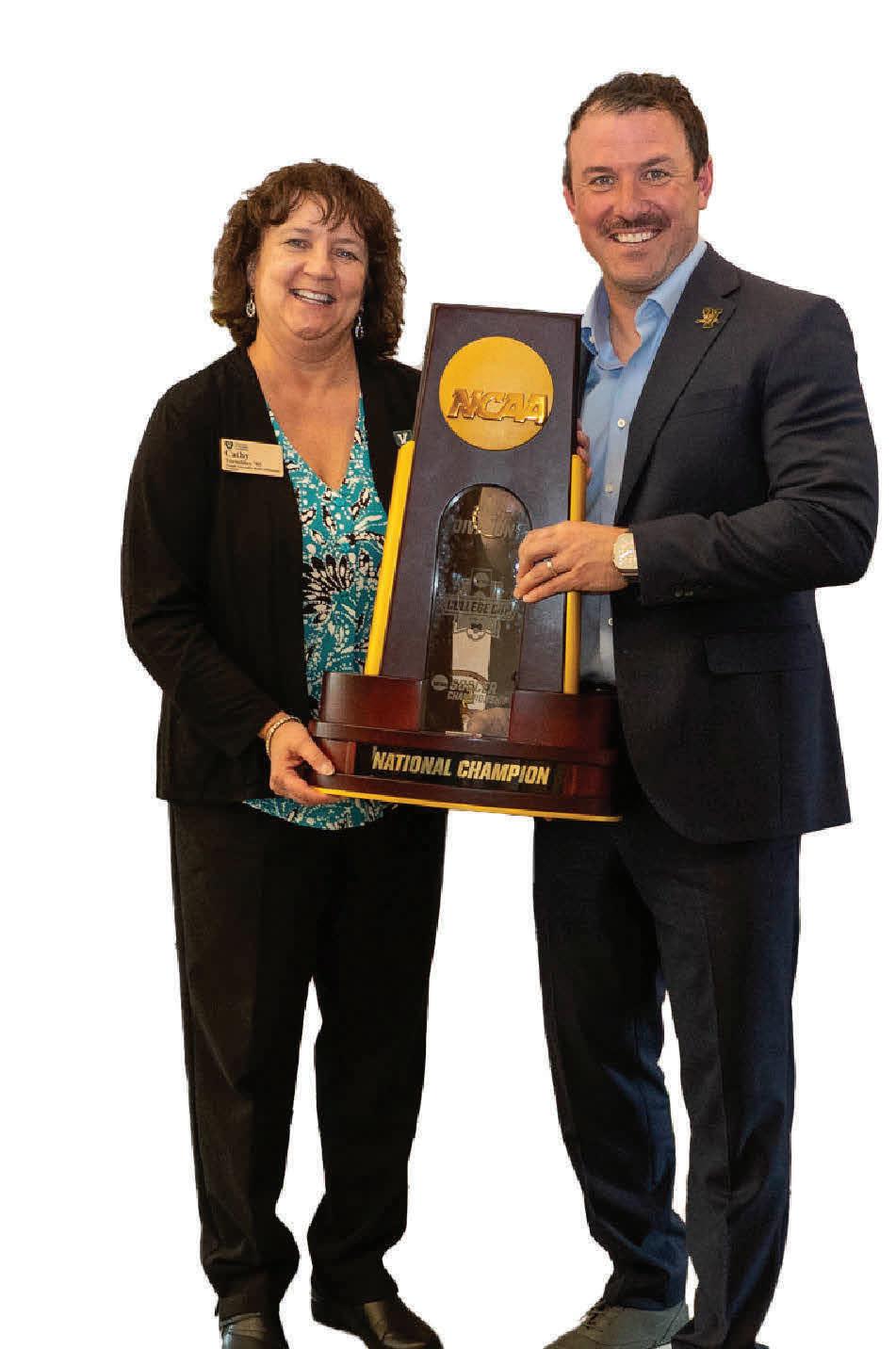
69
Nancy Peacos MacKay shared the sad news that Nancy Babcock passed away at her home in Windsor, S.C. in July 2025. Dr. Ed Barnard and his wife, Elna Rawson ‘71 trekked from Florida to Vermont in July, spending time with family and friends. While in Vermont, Ed preached a sermon at the Community Church of Huntington and spoke to the Shoreham Historical Society on the old Addison Branch (1871-1953) of the Rutland railroad. Ed had previously worked with the Vermont Division for Historic Preservation to acquire a state roadside historic site marker to commemorate his beloved high school in Shoreham (chartered in 1811 as Newton Academy). On July 19th, Ed conducted a public unveiling ceremony for the marker near the old institution’s location on Shoreham’s town common. Attending members of Shoreham High School’s 1963-64 basketball Raiders were recognized for their climb to the Vermont Class ‘S’ championship game played at UVM’s Roy L. Patrick Gymnasium. After the ceremony, Ed and Elna joined some 100+ alumni and friends for a gala Shoreham High School reunion. He wishes his surviving 1969 UVM classmates many good memories and many good days. Jim Betts M.D.’73 writes, “It was an honor and privilege to be the commencement speaker on May 18th at the University’s celebration
VIEW CLASS NOTES PHOTOS ONLINE AT go.uvm.edu/cnphotos
OR SUBMIT YOUR OWN AT go.uvm.edu/submitnote
of the graduating Class of 2025. My charge was to encourage the graduates to consider a commitment of service and mission to others above self. In this world of conflict and uncertainty, there are so many opportunities for them to embrace. The weather was Vermont spring. Warm with the prospect of summer, or as it was; rain, wind, and just enough of a dry pause to have the ceremony on the green enjoyed by all. As have all institutions of higher education, cuts in our university’s budget have significantly impacted programs, research, and staff. There are many opportunities for us to contribute much needed funding. Consider giving back to the institution which provided us all with a foundation for our careers. For those who have not returned to campus in a while, you will be amazed with the program development, new buildings, and integration of the colleges, students, faculty, and the community. UVM continues to be recognized as an outstanding academic center of learning and research. Return home often.” ( See a picture of Dr. Betts at Commencement with online Notes.) Robert David Gordon M.D. ’73 is returning to Burlington in fall 2025 to be in private practice in dermatology. Paul M. Woodard returned to Vermont this July to share updates and memories with old classmates at his 60th Bennington high school reunion. He says he deemed this his Farewell Tour and goes on, “On my way south from Montreal, my wife and I travelled Route 100 for most of the journey. The trip made this Green Mountain Boy happy and sad. But my biggest delight was a stop we made outside of Killington. There, we stopped to say ‘Hi’ and swap stories with a man who graduated with me from the first forestry graduating class of 1969. I bet my wife and I spent over two hours with Ray Colton, a fellow UVM forestry classmate. Ray sells firewood and has been doing it a long time. He shared news of other local classmates. It was a great ‘catch up.’ So if you were a graduate in the 1969 UVM Forestry class, know, we likely remembered you. Your name was spoken and Ray and I had a great time. You are still in our thoughts and prayers. Come home safe.”
Send your news to –Ms. Mary Joan Moninger-Elia maryeliawh@gmail.com
70
James Wavell Aiken has moved close to family in California’s Marin County and is walking and painting for fun and activity. James F. Howard was inducted into the Order of the Golden Fleece, the University of North Carolina’s oldest and most prestigious honor society, founded in 1904. George M. Hubbard says all is well is Savannah, Ga., and hopes that UVM’s men’s soccer team will do a repeat this year!
Send your news to –
Mr. Douglas McDonald Arnold darnold@arnold-co.com
71Class Secretary Sarah Sprayregen writes, “ Ted Cohen ’73 wrote about his fraternity brother and dear friend, Mike Rosenberg, who died in February 2025 doing what he loved — covering a basketball game for the local paper. Mike was raised in Rutland, Vt., and settled in Bedford, where he raised a family with his wife, Dawn, and where they became community staples. At UVM, Mike was a member of Alpha Epsilon Pi, where he kept the brothers in stitches with his dry sense of humor. It should be noted that Steve Levenson ’73 also called with news of Mike’s untimely passing. I always enjoyed my conversations with Mike about life in general and baseball! He’ll be sorely missed.” Rebecca Newell also wrote to share her recollections as Mike Rosenberg ’s daughter, remembering that he “had the fondest memories of UVM and donated for years in addition to informally recruiting prospective students from Massachusetts.” Sarah also ran into Judy Manchester who had transferred to finish her degree, but is a friend to many local classmates. She recently remarried (to Jan Rozendaal G’93 which was a happy surprise! They are living near UVM.). Joanne Czachor Magliozzi was also in touch simply to reflect how wonderful it was to be matched as first-year dormmates with Liz Mead Foster. She adds, “It’s been heartening that after 58 years (!) we still stay in touch.” Annie Viets hiked the western Lycian Way in the mountains along the southern Mediterranean coast of Turkey last fall and said, “It was one of the absolute best through-hikes ever — up there on the charts with Kilimanjaro, the Himalayas, and the High Caucuses.” Afterwards, she island-hopped among the lesser known Dodecanese Greek Islands — also “awesome,” she reported, adding, “I’m usually a solo traveler, but love company. Hiking alums, please be in touch!” Nancy Blasberg had a lovely week on Butler Island in Lake Champlain with family, including son Matt, from Costa Rica, and daughter Elizabeth M.D .’14, from Albuquerque. And it was great spending time with Gretchen Whitney, who was in the Burlington area this summer. Suzanne A. Fageol is still teaching professionals about trauma and is enjoying gardening and swimming in the Pacific Northwest on Whidbey Island. She just celebrated her 50th anniversary as an Episcopal priest. Gretchen Collins Whitney offered a synopsis of that summer stay in Vermont, “embracing the North Hero community and the art of ‘improvisational hospitality’ at classmate Walt Blasberg ’s Dodds Brick House B&B!” Walt formerly owned and ran the beloved North Hero House and, in his latest venture, Gretchen helped welcome guests with coffee refills, napkin origami, and the occasional weather report. Between lakeside walks, antique-hunting adventures, and spontaneous knitting circles, she spent summer perfecting her hostessing skills before heading back to D.C.
Send your news to –Ms. Sarah Wilbur Sprayregen sarahsprayvt@gmail.com
72Class Secretary Debra Koslow Stern shared news of an Alpha Epsilon Phi reunion, in hopes it will, “inspire other fraternity and sorority members to have their own reunions and then send in some news to UVM!” She writes, “After more than a year of planning, 11 AEPhi sisters got together in NYC for a most wonderful and memorable reunion. The attendees were: Joan Seitel Ackerstein ’70, Ann Siegel Friedman ’70, Mona Stein Klaber ’71, Debbie Lewin Kull, Wendy Holzman Nuba ’71, Sheri Kaplan Papish ’70, Elizabeth Rogers ’69, Debbie Koslow Stern, Sandy Grossman Umansky ’69, Karen Jessop Winer ’69, and Susan Adler Weingarten ‘71. Although some of the sisters hadn’t seen each other in 50+ years, everyone greeted each other with so much love that it was impossible to fathom that half a century had gone by. The conversations flowed as if we were still sitting together in each other’s rooms at the old AEPhi house at 158 South Willard St. Mona graciously hosted the reunion in her beautiful home. As we entered, we were immediately greeted with photos from so long ago, poignant reminders of the teenagers we were when we first became AEPhi sisters. We took time to toast this singular moment in time, and also to remember sisters who have sadly passed away. Following a scrumptious lunch, reunion chair Joan kicked off a discussion about why we each chose UVM for college and, reflecting back now, how do we feel about the experience?” All 11 sisters spoke openly and from the heart. The five-hour reunion ended all too soon; as we left with ‘bio-books’ and tearful hugs, we vowed not to wait another 50 years before getting together again!” ( See the group’s picture with online Notes.) Jonathan Jay Ach retired from AT&T as a splicer in 2019. He’s living in Nevada, has one daughter and three grandchildren, has been married 40 years, and says ‘Go Cats!’ Robert Kenneth Anderson finally got married! He and his spouse split their time between Vero Beach, Fla., and the Jackson Hole, Wyo., (Teton Valley) area. He says he’s a retired psychologist and mountain climber who is still skiing but a bit slower. Peter Boesel wrote to share the sad news of the passing of Charles Herman Heimsath. Jeffrey Scott Lewis just relocated from Nantucket, Mass., to Old Lyme, Conn., which he says is a bit of a shock after 34 years on the island. He and his wife now live near her elderly parents. He practices the biodynamic approach to craniosacral therapy. Ellen Bleecker Liversidge has recently moved back to the northeast after many years spent mainly in Ocean Beach, Calif., near San Diego. She says, “The past year in Ocala, Fla., had some fine moments; however, better healthcare plus having family nearby won out. I’ve landed on the New Jersey side of the Philadelphia metro area and it’s working out. Hello to my classmates, especially fellow master’s degree students in speech pathology and audiology.” ( See her photo with online Notes.) Richard Nelson wrote in to share a photo from a gala evening celebrating receipt of an international award for best government software ( See the photo with online Notes.)
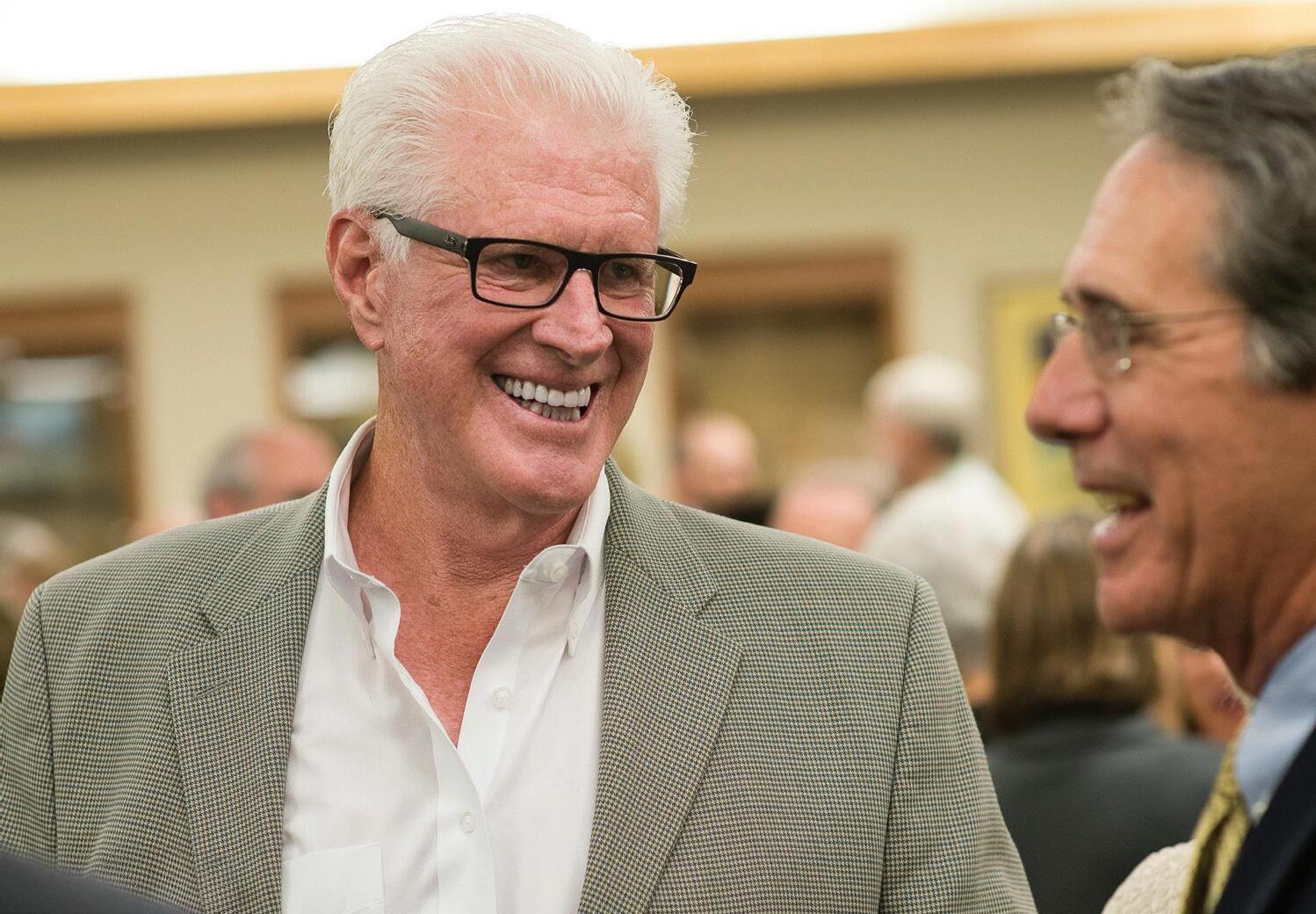
Remembering Richard E. Tarrant Sr.: A Legacy of Vision, Generosity, and Impact at UVM
By Kevin Morgenstein Fuerst
Richard E. “Rich” Tarrant Sr., one of the most influential supporters in the University of Vermont’s history, passed away on August 12, 2025. His legacy at UVM is not defined by a single gift or initiative, but by his belief in people and his deep commitment to helping others succeed.
While his philanthropy touched many corners of Vermont, his relationship with UVM was uniquely multifaceted and sure to be enduring. He was a parent, a trustee, a builder, and a partner. And above all, he was a person who believed that education is one of the most powerful tools we have to change lives.
A TRUSTEE, ADVOCATE, AND QUIET LEADER
Rich’s service on the UVM Board of Trustees reflected his broader commitment to the University’s success. He brought a business leader’s perspective and
a Vermonter’s values to the table, helping to guide the institution during important chapters of its growth.
At the same time, he rarely sought credit. In fact, Rich often redirected recognition to others. He helped fund the Richard and Mary Anne Gucciardi Fitness Center, named after longtime supporters who were cornerstones of the UVM Athletics community for decades. He also gave to the UVM Medical Center in honor of hospital volunteers Allen and Bonnie Martin, rather than placing his own name on the gift.
This quiet, intentional approach to philanthropy shaped everything he did. It wasn’t about buildings or headlines. It was about people.
CREATING SPACE FOR STUDENTS TO THRIVE
In 2009, Rich and his wife, Deborah, began
a partnership with UVM that would go on to benefit thousands of students and educators. They had become deeply concerned about the growing number of young people who were becoming disengaged from their education during their middle school years. This concern sparked the creation of the Tarrant Institute for Innovative Education, housed in UVM’s College of Education and Social Services.
The Institute, officially launched in 2010, was designed to support educators in making classrooms more engaging, relevant, and effective for today’s learners. Led by Dr. Penny Bishop, a UVM professor and expert in adolescent education, the Tarrant Institute focused on helping schools personalize learning and use technology in meaningful ways.
Over the next 15 years, the Tarrant Foundation invested nearly $12 million in the Institute and related programming, helping expand its reach to roughly 60 middle schools across Vermont. The Institute offered long-term, hands-on support to teachers, helping them rethink how students experience school. The results were clear. Students were more motivated. Teachers were more confident. Classrooms were more active and inclusive.
A 2015 article published by the UVM Foundation described the impact in simple terms. Classrooms had become “alive, vibrant, and meaningful to students.” That was exactly what Rich hoped for when the work began.
The Tarrant Institute’s work wound down in the early 2020s, but its 15-year legacy is still felt throughout schools in Vermont.
As Lauren Curry, executive director of the Tarrant Foundation, later shared, Rich was never interested in symbolic gestures. He wanted to see real outcomes in the lives of real people. The Tarrant Institute was one of the most visible examples of that philosophy in action.
COMMITMENT TO ATHLETICS, HEALTH, AND CAMPUS LIFE
Rich Tarrant’s support for UVM went far beyond the classroom. Three of his children
were student athletes. Rich Jr. and Brian both played basketball, and Jerry played ice hockey. During their time and long after they all graduated, Rich supported UVM Athletics. His support for the Men’s Ice Hockey and Men’s Basketball programs – giving generously over many decades – strengthened the teams and the student-athlete experience.
His belief in the power of athletics to build character, leadership, and pride was deeply felt across the campus community.
In 2018, Rich made a landmark $15 million commitment to help fund the Tarrant Center, the signature element of UVM’s planned multipurpose athletics facility. The Tarrant Center will be the new home for UVM’s basketball programs. While the pandemic and rising costs have delayed construction, the gift remains a powerful expression of faith in the University’s future and a lasting testament to his commitment to excellence in athletics.
Rich also contributed to the development of the Dudley H. Davis Center in the late 2000s. The Davis Center was envisioned as a studentcentered hub of campus life, and his support helped bring that vision to life in meaningful ways. Today, it remains one of the most visited and vibrant spaces on campus.
His generosity also extended to UVM’s medical and research efforts. Rich was a regular donor to the UVM Cancer Center, supporting the work of Dr. David Krag in advancing cancer treatment through groundbreaking research. He also contributed to the Robert W. Hamill, M.D. Green and Gold Professorship, an endowed faculty position that recognizes excellence in clinical care and academic leadership.
Each of these gifts reflected Rich’s broader values. He believed in supporting people who dedicate themselves to solving difficult problems. He believed in investing in the future. And he believed in helping
institutions like UVM continue to grow in purpose and impact.
A FAMILY EFFORT
The work of the Tarrant Foundation was a shared effort between Rich and Deborah, guided by their belief that every person deserves the chance to reach their full potential. The Foundation has supported a wide range of initiatives across the state, including education, health care, and youth development.
Rich was also a proud UVM parent. In addition to Rich Jr., Jerry, and Brian, Rich’s granddaughter is currently a student at the Larner College of Medicine – carrying on a proud tradition for the Tarrant family.
That personal connection to the University added another layer to his giving. He understood UVM not just as an institution, but as a place where students grow, where ideas take root, and where futures begin.
WITH DEEPEST GRATITUDE
It is difficult to fully capture the scope of Richard Tarrant’s impact on the University of Vermont. His investments in education have changed how teaching happens in Vermont’s middle schools. His support for athletics has opened doors for student-athletes. His service on the board helped shape the direction of the University. His gifts to research, medicine, and student life have improved the campus for all.
The UVM community is profoundly grateful to Rich and the entire Tarrant family. Their partnership has helped make UVM stronger, more responsive, and more hopeful.
Richard Tarrant believed in this institution, and he believed in what was possible when people are given the tools to succeed. That belief will continue to guide UVM for years to come.
Thank you, Rich.
Send your news to –Mrs. Debra Koslow Stern debbie2907@gmail.com
73
Wayne Davis and Becky Pardee Davis ‘75, along with their three children and spouses and eight grandkids, celebrated their 50th anniversary at the Basin Harbor Resort in July. They say that wonderful and lasting memories were made! ( See their photo with online Notes.) Tricia Fletcher writes, “After teaching 40+ years in elementary schools in Burlington, Vt., and the MSAD 75 district in Topsham and Bowdoinham, Maine, I am loving retirement on the beautiful island of Oahu in the wonderful state of Hawai’i.” Mark Francis Lefebvre wrote over the spring when he was, “so proud to announce that (his) twins Aiden and Avery graduate from medical school this spring. Aiden from VCU and Avery, continuing the UVM tradition, will graduate from Vermont.” Albert Gardner Thayer wrote with news that he had published a book, titled Christmas for a Fish Out of Water, dedicated to overseas servicemen, and explaining different Christmas customs,from black-eyed peas to Silent Night.
Send your news to –Ms. Deborah Layne Mesce dmesce@icloud.com
74
Class Secretary Emily Manders shares a note from John van Hoesen, who–after decades in newspapers and public broadcasting–has published a new biography of Craig Rodwell, founder of the Oscar Wilde Memorial Bookshop in New York and the prime mover of the first Pride march in 1970. He lives in New Haven, Vt. Christopher Aldrich Brown writes, “John Kiely shared our freshman soccer team picture with me and we compared memories from the games with Norwich University. I shared it with Roger Lowe, who still lives just down Route 100 from me in Waterbury, about where we both were when we played on our high school team. I’m still professing at Worcester Polytechnic Institute, where I teach a course on Technology of Alpine Skiing, building on what I learned from Mickey Cochran. We are developing a shoe sole that should help reduce ACL injuries in field and court sports, building on what I learned at UVM about ski bindings from Carl Ettlinger ’65, G’70 and others, during my doctoral studies in engineering. UVM should become the global center for winter sports studies! Joe Lamb ‘78, who I caught up with last summer in Lake Placid thinks so, too.” Rick Champney writes that he “retired and moved to northern Arizona three years ago.” He writes, “Living in a small town near Sedona called Cottonwood. Volunteer as a part-time ranger for the National Park Service and work with amazing people. My wife Pierrette and I are still discovering beautiful places near our home. But with friends and family in Canada and the USA, road trips provide the opportunity to discover more wonderful places throughout North America. Didn’t expect retirement to be so busy!” Cathleen Olivia Doane-Wilson has “finally officially retired and moved to San Antonio, Texas.” While she finds it a great community, she is missing

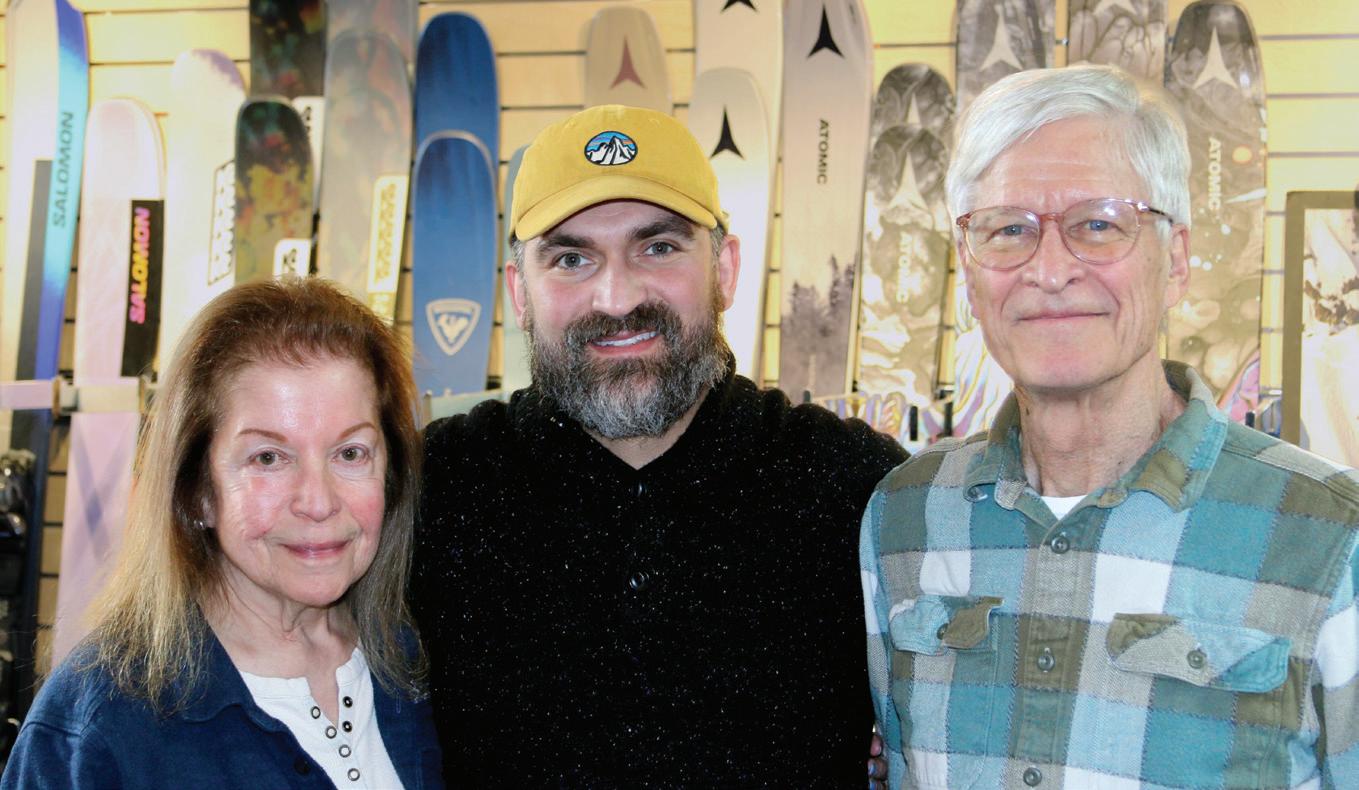
A
Tradition of Trust: Zandy Wheeler ’70 G’72 and the Skirack Legacy
What began as a student start-up in 1969 has grown into a Burlington landmark–thanks to a commitment to community and the outdoors.
When James Alexander (Zandy) Wheeler ’70 G’72 came to UVM in the late 1960s, he was drawn by the mountains, the outdoors, and the possibility of new beginnings. Originally on a pre-med track, he shifted to education after realizing the classroom, not the lab, was where he wanted to be. But it was during those years that he began building something outside the classroom that would leave an even bigger mark.
Having studied global affairs and sustainability before returning to Burlington, John helped launch Patagonia Burlington in 2011 and now carries the Skirack legacy into a new era.
“There’s nothing straightforward about the last decade,” John reflects. “Between the pandemic, economic shifts, and the loss of key figures, it’s been a lesson in adaptability and focus.”
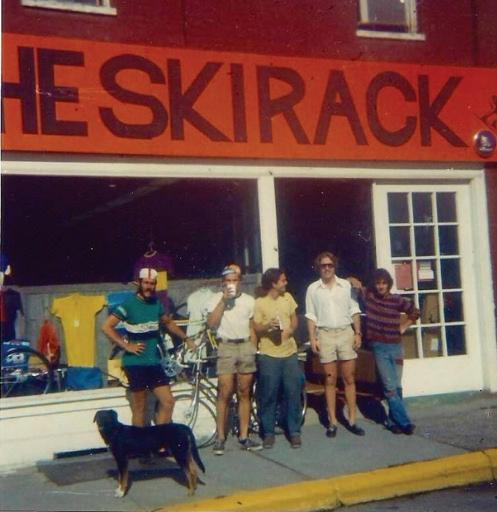
Under his leadership, Skirack has modernized while holding true to its roots. A revamped online presence sits alongside the in-store expertise that remains its hallmark. “We’re not trying to serve the masses,” John says. “We’re here for people who care about quality and who want to talk to someone who really knows their stuff. You can’t Amazon Prime a bike fitting.”
In 1969, Zandy and a group of fellow UVM students launched Skirack, a small outdoor retail shop in Burlington. They had no business background, but they had energy and a passion for the outdoors. “We had enthusiasm and zero knowledge,” Zandy recalls. “But we loved the outdoors, and we cared about doing things right.”
From the start, Skirack set itself apart with its focus on expertise, fit, and listening to customers. Zandy and his twin brother, John, built a culture of trust that turned the store into a hub for Burlington’s outdoor community. John’s legendary habit of greeting customers by name became part of the store’s DNA.
More than 50 years later, Skirack is still familyrun. Zandy and his wife, Karen George, have helped guide its growth, and their son, John George-Wheeler, now plays a leading role.
For decades, the store has also been a training ground for UVM students and alumni, offering not just jobs but a place to learn and grow. Skirack has supported UVM clubs, teams, and events–from the Ski & Snowboard Club to Banff Film Festival screenings at Ira Allen Chapel–sustaining connections that run deeper than sponsorships. “There’s something in the DNA of this place,” Karen says. “It’s very Vermont. And very UVM.”
For Zandy, pride comes from knowing Skirack has endured by staying true to its values. “We only want to be here if we can do it right,” he says. “That means helping people, listening to them, choosing staff who want to share what they know.”
The business that began with a few students and a dream now stands as a living legacy of entrepreneurship, resilience, and community–proof of what can happen when passion and purpose take root in Burlington.
VIEW CLASS NOTES
PHOTOS ONLINE AT go.uvm.edu/cnphotos
OR SUBMIT YOUR OWN AT go.uvm.edu/submitnote
the cooler Vermont summer nights. Pamela Reynolds Halbur ’76 shared the sad news that her husband Harvey Halbur passed away in February 2024 after a long illness. Paul F. Kenny is looking forward to another great ski season on Baldy in Sun Valley, Idaho, where he “skied 100 days last winter.” He adds, “The mountain crew is opening a bunch of additional glade skiing right now, and next year they are adding a new high-speed quad and a six-person lift. Absolutely skier’s heaven! And I’ve been here 51 years now.” Adrienne Leinwand Maslin has published the first book of the “She’s Roxanne!” series of graphic novels, focusing on life skills and social issues for 8-12 year olds. Book 1, “New Dog in School,” deals with anxiety and hazing as her protagonist, Roxanne, an anxiety-prone dog, faces her first day of school. “It’s been an adventure to write and finally get this published,” says Adrienne. “During my 45 years in higher education administration I’ve seen many students come to college without the life skills or social/emotional learning I thought they should have. It’s my hope that these books, directed to a younger population, will help students acquire the skills they need to be successful in college and as adults.” ( See a picture of the book’s cover with online Notes.) Scott Stanwyck writes that, after retiring from orthopedic surgery practice 13 years ago, he pursued commercial flying for a brief period. He then “became interested in regenerative medicine, specifically stem cell therapy, and has been involved with that for the last eight years. He finds this work promising as treatment for orthopedic maladies and potential alternative to joint replacement. Send your news to –Mrs. Emily Schnaper Manders esmanders@gmail.com
75Class Secretary Dina Child heard from Kurt Sherman, who wrote that after “a fleeting 48 years,” he was preparing to retire from teaching math and science at Vermont’s Westford School. He was named an Outstanding Vermont Teacher by UVM in 1982. Additionally, in 2018, he was chosen as Vermont Elementary Science Teacher of the Year by The Vermont Association of Science and Engineering. He plans to continue his scientific interest with field study of benthic macroinvertebrates of streams in York and Cumberland Counties, Maine. Kenneth Currier, Kathleen (McCarthy) Healey, Judith Martin, Sarah McCarty, Diana Richardson, and Cynthia (Pulling) Roberts, returned to UVM to celebrate 50 years since graduation. ( See a photo of the group with online Notes.) Becky Pardee Davis writes, “For over 40 years, a group of ’75 Pi Beta Phis have gathered to celebrate our UVM friendship. This year,
we gathered in Kennebunkport, Maine.” ( See a photo of the group with online Notes.) She also wrote just as she and Wayne ’73 were looking forward to celebrating their 50th wedding anniversary in August. They had recently hosted their three children from London, Phoenix, and Denver, with their spouses and their eight grandchildren at Basin Harbor Resort for five days. She says, “It was a wonderful family reunion and a special Vermont vacation memory for all.” Leslie Morrison Morey ’76 shared the sad news that her husband Jim Morey, an alumnus of the wildlife biology program, passed away in August 2024. Graduate alumna Bonnie Seay celebrated her 80th birthday last October with her daughters . She has stopped teaching foreign languages, and is now providing Spanish interpretations for therapists, aiding families that have children with developmental delays. She says, “Life is still good!” ( See the photo of Bonnie with daughters Hannah Schuster Waltermann and Gretchen Schuster Lord with online Notes.) Marie Geiger Sullivan sent in her first class note to say that she has lived in northern Virginia for 30 years, as her husband’s Navy job led there. They have been married for over 50 years, and says she hasn’t done anything spectacular, “just lived a very nice life as a military spouse and raising three great children, and spending time with my two granddaughters.” She adds, “I worked in the nursing field for some years, but spent most of my working years in elementary education. I loved my years at UVM.”
Send your news to –Mrs. Christine Dwyer Child dinachild@aol.com
Class Secretary Peter Beekman wrote in as he and a whole committee of 1976 graduates were looking forward to their 50th reunion. They are extremely excited to help welcome the classes of 1975 and 1976 back to Burlington. Richard Clark shared the sad news of the January 2025 passing of William McDonald. The two were UVM roommates for three years. Averill Hamilton Cook says, “Hi all who know me. Still here in Williamstown, Mass., where I started, and love to see one and all. Still farming and cutting wood. Count my lucky stars every day.” Michael David Diederich writes that he is expanding his employment law and civil rights law practice throughout New York State, fighting for democracy, and still skiing the Mad River Glen. ( See his photo with online Notes.) Julie M. Halpern writes, “When I moved to Burlington from Putney Vt., I ended up sharing an apartment in Winooski. My roommate was friends with UVM photography professor Dan Higgins. He became a good friend as my boyfriend at the time lived in his loft over the drugstore in Winooski. I spent a lot of time walking up and down the hill, back and forth to school. I worked in the library, took part-time classes, and eventually matriculated under threat from my parents. My decision to finally graduate was my best decision ever. NYC was next, and soon after Hawai’i. Without my UVM degree, I could never have gone on to get my master’s degree, which led me into a wonderful 24 years as a school
CLASS NOTES |
counselor in Honolulu. Oh, yes, now I’m retired, as are most of you reading this. Enjoy your life and your blessings. And cherish your UVM days always.” ( See Julie’s picture with online notes.) Jackie Levine wrote while, “looking forward to our 50th reunion next June and hoping it can include an EP (Environmenal Program) get-together.” She adds, “In the meantime, I’ve kept up with out-of-towners from near and far over the last few months. Moira (Keon) Greene crossed the pond from Ireland and met with Steve Fitzgerald in Massachusetts. There was a trip to NYC for a visit with Ed Hochman ’74 and Bob Sokol ’74. Lots of fun with Allyne (Prupis) and Bob Zorn and Pat Kennelly in Sarasota and in the Berks. Sally Mattson ’77 and I took our annual ‘girls’ get-away’ and Alice Sargent ’75 and I got to ski together at Pico this winter. Very sad reunion this summer for a memorial service for Richard (Dick) Cassidy ’75 with Fred Ginsberg ’74, Suzanne Stimik ’73 and Alice. And we ran into Jim Moran at the church. Other than that life in Burlington is great for Barry (not a UVM grad!) and me including a bike trip in June to Italy. Ciao for now.”
Send your news to –
Mr. Peter Andrew Beekman pbeekman19@gmail.com
77
As co-director of the Champlain College Career Collaborative, Pat Boera looks forward to welcoming the Class of 2029 to Burlington. When not connecting students with internships and jobs, Pat enjoys volunteering with Lyric Theatre Company (Fall ‘25: “A Chorus Line”; Spring ‘26: Disney’s “Frozen: The Broadway Musical”) and the Middlebury Summer Festival on-the-Green. Andrea Howard Bonnar sent in a photo ( See with online Notes) and the news that she and husband Peter Bonnar ’76, completed a cruise on the Great Lakes this summer; they are looking forward to a Mississippi River cruise in 2026. Clifford Stephen Duke retired in May 2025 and expressed his gratitude to the UVM Environmental Studies Program for helping him get started in a great 40-year career. John Deane Freeman wrote that on July 12th, Fred Fournier, Tom Frey M.D. ’81, and David Southworth ’97, and helped him celebrate his 70th birthday at his house on Lake Fairlee. “A tremendous time was had by all!” David Gates writes, “After a 47-year career in financial services, I finally retired on June 30. The first 12 were spent on Wall Street in institutional bond sales and the rest in Manchester, Vt., as a financial advisor at GateHouse, founded with a partner in the 1990s. My wife, Stacy, and I recently bought a house in Jupiter, Fla., and will spend part of the winter there. Since I am still doing a lot of skiing, Stacy will be there more than me! The golf bug bit me pretty seriously 30 years ago, and we both play regularly, but I still enjoy hunting, fishing, and anything else outdoors. It has been fun staying in touch with classmates, especially my fellow brothers of Delta Psi.” Ronald Charles Nye writes that he “finally made the trip in mid-July to visit classmate David Markey in Bend, Ore. A great time visiting the local breweries and seeing many of the scenic
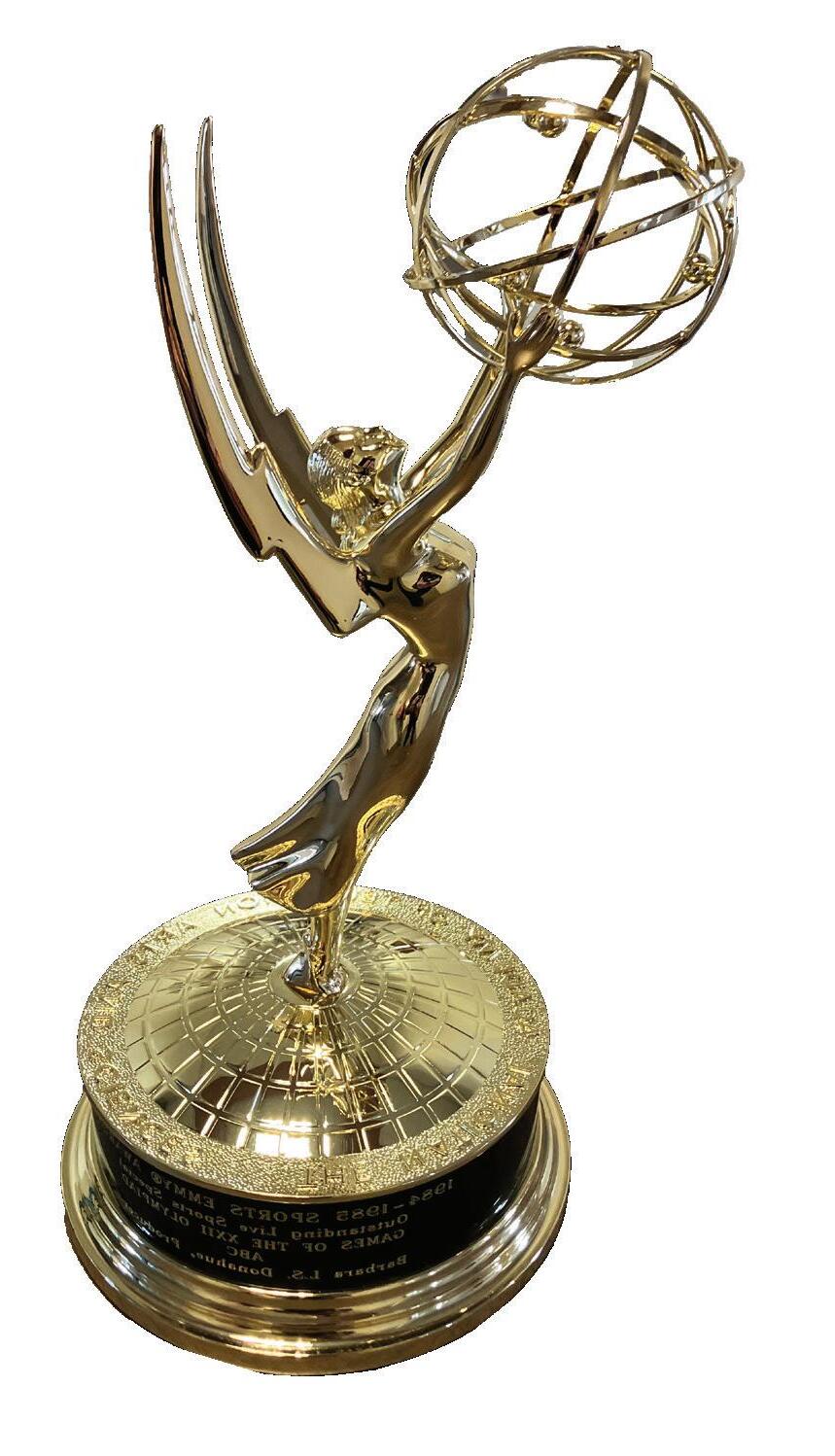
AND THE WINNER IS…
During her career in broadcasting and video production, Barbara L.S. Donahue ’78 has garnered a truly impressive 13 EMMY® awards from the Academy of Television Arts and Sciences. Earlier this year, she generously donated one of those statuettes to the UVM Film and Television Studies Program. “This means a little more gold is being added to UVM’s Green and Gold,” said Program Director and Professor of English Todd McGowan, “as the award will be proudly displayed on the fourth floor of Old Mill as a testament to her incredible career.”
wonders, including Crater Lake National Park and the nearby lava fields. My fiancée and I celebrated our changing of the decades with a trip to Las Vegas in April. The highlight of the trip was seeing Dead & Co. at the Sphere. Incredible venue! It’s true that deadheads never die, as we saw some attendees in wheelchairs and walkers. Was surprised with all the young people that were in attendance, too. Looking forward to our upcoming 50th reunion.” Daniel W. Ryan is still doing well four years after a liver transplant at MGH Boston, though his Parkinson’s is becoming more challenging to manage. He says, “God blessed me with a first grandson last year! I have a radio show two days a week here in Burlington. Fan of UVM sports teams. Go Cats Go!” ( See a picture of Dan in a DJ booth with online Notes.) Kathy San Martino ’84 shares the sad news that Nicholas J. San Martino, Jr. passed away peacefully in April 2025. He was a physical therapist who enjoyed running and had completed 26 consecutive Boston Marathons. He leaves behind a large and loving family who will dearly miss Tom Wheeler and Kathy (Kate) Kesseler are enjoying their retirement years with frequent visits to the Burlington area from western Mass., visiting friends, family, and re-exploring the Champlain Valley. As they approach their 50th (yikes!) reunion, they have remained engaged with UVM through various alumni events, biannual Sigma Nu brothers’ gatherings in Burlington with the classes of ‘76-’78, the Sigma Nu Hockey Fund, and numerous Family Business Initiatives at the Grossman School of Business (GSB). Recently Tom launched a new Entrepreneurship Fund (e-Fund) to recognize the leadership team at GSB for their engagement with family business enterprises and to support the next generation of aspiring GSB entrepreneurs with outside-the-classroom experiential learning and the exciting entrepreneurship initiatives that exist at UVM. It is Tom’s hope that other alumni and the Vermont community will also support this new learning opportunity for GSB students. Joan Ellen Lawrence-Studebaker “was fortunate as a student to design a major which helped those struggling with life’s challenges. Grieving losses, learning to cope with and defeat poverty and harmful biases designed to diminish folks, especially women and children.” She adds, “My internships as a chaplain and a research assistant in the Cancer Center allowed me to combine the physicality and spirituality of suffering in the disease process. I continue to learn more about theology and human growth, psychologically, as my chaplaincy grows through my place in the Order of St.Helena, and primarily my relationship with St. Paul’s Episcopal Church in White River Junction. I live as a solitary monastic and am licensed as a eucharistic minister, lay preacher/ leader, and pastoral care provider. I stilll believe in our country and am happy to stand up for marginalized persons even if it requires that I make good trouble to do so. At 78, I am living my best life and enjoying my family. In a few months I will be a new Nana and grandma. I am grateful beyond measure.” ( See Joan’s photo with online Notes.)
78
Bill Benton and Kristin Benton ’82 hosted a Coolidge Hall Reunion for residents of 1974-1975 at their summer residence on Fort Cassin, Lake Champlain. “We have met periodically since 1976 and this is our 50th year reunion.” Alumni attendees included Jill Abrams, Bill and Kristin Benton ’82 , Nancy Caldwell, Holly Coulter ’79, Phil Dunn, Richard Eberhard, Mary Koch, Larry and Toni Landry, David Larson, Geoff Liggett, Peter Macone, Jay and Martha Madden, Bob McGee, Dennis Murphy ’79, Joe Nelson ’79, Scott Orselet , Seth ’81 and Marth ’80 Richardson, Christy Ford Shlafly, Rob Smith, , Meg Seigle Moran ’79, Deband Brian Roderer ’77, Lars Platt, Mark Severance ’77, and David Perkins (by proxy). Perfect weekend weather supported the mandatory Masters Croquet Tournament under the lights, which was won by Kristin!”. Congratulations to Richard Couture and Margarete Reilly Couture, who met at UVM , married at the Newman Center and, this summer, celebrated 45 years of marriage as retirees in North Myrtle Beach, S.C. Robert Edward Bessette retired after nearly 46 years in the laboratory at Northwestern Medical Center in St. Albans, Vt., and Kathy Bacon Bessette ’79 retired after thirty-five years with Vermont’s Agency of Human Services.They now enjoy providing care for their four grandchildren and savoring leisure activities. 79
James Chapman sends, “Hello from Gilsum, N.H. I cannot believe we arrived on campus as freshmen 50 years ago! Other than a brief five-year turn as an elementary school teacher, I stayed in forestry and logging after graduation. I truly belong in the woods. After working all over New England, especially New York, and even a brief stint in West Virginia, I am still amazed every day by these Appalachian forests. My wife, Sang Curtis, and I own and manage 140 acres in southwestern N.H., where we live. We’ve collected enough equipment, machines, and tools to build two houses and numerous outbuildings using lumber from our own trees. I keep trying to entice my daughter to leave Baltimore and move closer, no luck so far. I skied this past winter with Sigma Phi Fraternity brothers, Dave Cassin ’78 and Duane Larsen ’78. Am also in regular contact with fellow foresters, Mark Herbert and Mike Watts. Al Steinman stepped down as Director of Grand Valley State University’s Robert B. Annis Water Resources Institute after 22 years. He is now the Allen and Helen Research Professor at that Institute, and received the Award of Excellence from the Society for Freshwater Science at its annual meeting in San Juan, P.R., in May of 2025. ( See a photo of Al at the podium with online Notes.) Peter M. Stevens writes that Mark “Butch” Antell, Bob and Sandy Reese, along with John and Mary Galle ’78, helped Elise Stevens ’12 celebrate her marriage to Trevor Wolf in Buffalo, N.Y. on the Edward M. Cotter (said to be the world’s oldest working fireboat!).
Send your news to –Mrs. Beth Nutter Gamache bethgamache@burlingtontelecom.net
COURTESY CAMARA STOKES HUDSON
80
Kristin Nelson Foster sent a picture from May 2023, with “youngest daughter, Holly ’23, who graduated from UVM like her dad, John ‘79 and her mom. Sister Anna and brother Will came to cheer her on!” ( See the group’s picture with online Notes) Send your news to –Mrs. Kristen Yonker Hazen hazenkristin@gmail.com
81
Tim F. Anderson shares he has retired from professional life and is enjoying more time with wife Nickie on Lake Norman, just north of Charlotte, N.C., where they have lived since their move from California. He writes: “Lake Norman is home to Normie — second only to Champ, as far as infamous legendary lake monsters go! Excited to visit our family and two grandchildren in Denver, Colo., and Los Angeles when we can. Also enjoying extensive travel together, a recent highlight being an expedition cruise to Antarctica. Enjoyed a recent trip to Burlington for a Sigma Phi event–glad to see the house is still going strong while, sadly, half the fraternities are no longer there since my time. Another 2024 highlight was attending the UVM Men’s Soccer Championship Game in Cary, N.C. Exhilarating to witness in person! Always enjoy keeping up with classmates Pete Castrichini and Chris Williamson, while recently reconnecting with Sigma Phi alums Dana Delgizzi ’80, Kurt Haigis ’77, Jim Hansen, Paul Low ’80 and Eric Riddleberger ’82 . Looking forward to more frequent visits and upcoming milestone reunions. It all still seems like yesterday!” Dane Paul Correll writes with appreciation, “RIP Professor Mary Jane Dickerson, UVM’s first professor of African-American literature
on the undergraduate and graduate levels. May she rest in peace. Professor Dickerson kept us ( the Honorable Fred Rosa, Deputy Commissioner Leon Heyward, Executives Ben Rosa ’82 , Bobby James, and me) focused while being supportive during our college years! We wouldn’t have made it without special people like you!” ( See their photo with online Notes.) Russell Flannery wrote with a picture of himself with fellow former Cynic scribe Guy Page ‘79, who got together and recalled the good old days of newsprint and student life at UVM over coffee in Montpelier in January 2025. Donna Loso Hayes sends, “Hello to all my fellow classmates! My husband Dave and I happily retired last year and are thoroughly enjoying our freedom in Delray Beach, Fla. I was a certified hospice and palliative care nurse for the past 16 years, an incredibly rewarding profession. We also celebrated our 30th wedding anniversary.” Linda Morris Jesse is “very happy to be back in New England after retiring with my husband on the south shore of Boston in the magical town of Hull. Wondering if there are any Catamounts to meet up with in the area?”
82
Nancy Battey wrote with sorrow at the loss of her dear friend Joyce E. Bates ’82 in March 2024, but says she was was happy to have been able to get a memorial bench installed near Rowell Hall in July ( See its picture with online Notes.) Jamie Campbell Fagan’s youngest daughter, Serena, got married to Anthony Lahout from Littleton, N.H., who happens to own the oldest ski shop in the U.S. “Her godfather John Carter ’81 was there reading a poem and looking very holy!” They also often see Kat ’81 and Bill ’83 Bliss Deb Sussman Mignucci celebrated the first anniver-

sary of her sales training company and is grateful for successful partnerships with Amazon, Disney, LG Ad Solutions, and many others. Christopher Scott Rogers has worked in various horticulture-related positions for the last 43 years, and has joined many classmates by retiring in July, starting the next chapter of his life.
Send your news to –John Peter Scambos pteron@verizon.net
83
Lisa Greenwood Crozier celebrated the wedding of her younger daughter on July 19th, saying, “Colleen and Drew exchanged their vows at our church, where they first met in 4th grade! We are so happy for them and look forward to watching them grow even more as a couple.” Dave Norman Hall writes that, as “a founding member of the Top Cats and an Arab-American who first experienced anti-Arab racism as a student at UVM,” he has “suspended his music career to concentrate on fighting the genocide in Palestine.” Burlington Mayor Emma Mulvaney-Stanak celebrated Barbara Nolfi’s life and community contributions by declaring July 28, 2025 as Barbara Nolfi Day in a festive event at Burlington Cohousing, which Barbara was instrumental in co-founding in 2007. In February, Steven Aaron Weissman “had the honor of returning to the UVM chemistry department to present a lecture on my work on developing an investigational drug for Alzheimer’s disease and Lewy body dementia. My former roommate, Bill Reichert , and research advisor Professor Emeritus Chris Allen, were able to attend. It was the professional honor of a lifetime to so meaningfully connect my past to the present.”

Refer an Outstanding High School Junior or Senior
Jai lights up at the chance to chat with prospective and current Catamounts. Since 2017, he has made 41 referrals to the Refer-A-Catamount (RAC) program. He finds this program allows a prospective student to “integrate themselves with the school early in the process” with “another connection point” to UVM.
Having guided four children through the college process, Jai thinks UVM’s program is distinctive: “It is a competitive differentiator.”
Know a student who might be a good fit for UVM? Help them learn more through the Refer-ACatamount program! 340 students of the Class of 2029 were RAC referrals and 92% applied to UVM.
Jai Chanda ’92 has maintained his UVM connection as an alumnus, volunteer, and board member.
Send your news to –Mrs. Lisa Greenwood Crozier lcrozier@triad.rr.com
84
Lynn Tarbutton Cummings lives in South Burlington with her husband and enjoys having their adult children and grandchildren living there as well. She loves her retirement jobs of teaching watercolor, collage, and acrylics in Charlotte, South Hero, and South Burlington, and adds that it is pure joy taking lots of field trips and caretaking their grandsons as often as they can. Son John Hutchins ’12 lives nearby and they see him frequently. In addition to creating art on paper, she spends creative energy in the garden and cooking for friends and family. In cold weather, she heads to Palm Springs, or to Mexico or other warm countries in Latin America, and is in frequent contact with her favorite UVM professor (now retired) Martin Thaler, who continues to be an art mentor and dear friend. She closes with, “Stay healthy and happy, everyone!”
Send your news to –Mrs. Abby Goldberg Kelley kelleyabbyvt@gmail.com or Mrs. Shelley Carpenter Spillane scspillane@aol.com
85
Lily de Jongh Downing shared a proud mother moment: “ Dr. Jackson Burke, M.D.’25 graduated from Larner College of Medicine 40 years to the day of my undergrad graduation at UVM. He will be doing his residency at Kaiser Permanente Oakland in Internal Medicine, finishing with a master’s in public health from Berkeley. His twin sister, Libby Burke, graduated in 2023 from Fordham Law, and is now a second-year associate at Reed Smith, LLP. I would have never thought in the early 80s, when I was at UVM, that I would have such accomplished children! I suspect my UVM peers would have thought the same!” ( See a picture of Jackson and Libby with online Notes.) As an independent college counselor, Sherri Steinfeld Maxman is always excited to help a student apply to UVM. When a student decides to attend, she shows her freshman year student ID. The fact that it includes her social security number blows students’ minds. “Those were the days!” Craig John Mabie writes that Josh Powers organized a 40th graduation anniversary event — an NYC Five-Borough Bike Tour! Craig and Josh were joined by Amy (Sieger) Daniels, Jerry Gilbert , Ross Nayduch, and Tim Olean on an iconic bike tour through all five of NYC’s boroughs. Jacquelyn Whitehorne Madsen shares that, “Several of us from the class of ’85 get together every few months with our families. We’ve been doing it for 40 years! This past June, Donna Kiley M.D.’90, Jeannie (Dougherty) Kelly, and me, along with our spouses and children, headed to the San Juan Islands off the coast of Seattle for hiking, boating and exploring. We were missing Dana Drew Wagner. Donna’s husband, Kirk Kimball ’88, is a UVM grad, as is my oldest daughter, Harlee Madsen ’18. Several of us are retired now with a few still working. Whenever we get together, it is always a fun time with lots of laughs and great memories of our UVM days. Our children have been
friends their whole lives and we are thankful we met all those years ago.” Serene Meshel-Dillman announces: “’Take Me Out Feet First,’ my documentary series about Medical Aid In Dying (MAID) is streaming on Amazon Prime. I am currently working on season two! The pilot episode features both of my parents (UVM class of 1960) who used MAID five years apart in California.” ( See a photo of Serene’s parents Robert Meshel ’60 and Miriam Reiner Meshel ’60 with online Notes.) Thomas O’Handley is “excited to be back in Vermont, working at Merck Forest & Farmland Center while still living in Brooklyn, where we’ve been for nearly 30 years. Best of both worlds! Just built and dedicated our new [basketball] hoop, in honor of Stan Van Gundy, who cut his teeth in Vermont. ( See a photo of the hoop with online Notes.) It will be used by Student Conservation Association interns (and me!) who’ve come every summer since 1967. Come visit if you’re in the Northshire.” Dr. David G. White was selected to be the Dean of the Herbert College of Agriculture at the University of Tennessee in January. He has continued in this area for his whole career, after graduating with a BS in Animal Science from UVM.
Send your news to –Ms. Barbara A. Roth roth_barb@yahoo.com
86
David Aronoff excitedly shares that in May 2025 his “daughter Hannah married Sam Stelfox (a Burlingtonian!) in Boston.” UVMers in attendance included his mom Sheila Kropsky Aronoff ’58, Amy Aronoff Blumkin ’82 , Julie Michael Gelman ’88, Lee Gelman, Ira Hart ’85, and David Legg ’85.
Send your news to –Mr. Lawrence Gorkun vtlfg@msn.com
87
Class Secretary Sarah Reynolds shared terrific news from Julia (Larson) Hamilton, who got in touch to say, “I have lived in London now for 25 years and have been inspired by England’s history, particularly while working recently at Windsor Castle for the Royal Collection Trust. My thesis examines the Stuarts’ use of space and decoration to determine their contribution to the development of interior decoration in England. It is entitled ‘Stuart Style: The spatial and decorative impact of Anna of Denmark’s English Privy Lodgings on the development of a dynastic style of interior decoration (1603-1688).’” Doreen DeNitto Burliss shares: “Hey fellow UVMers, my fourth novel, set in Nantucket, was released in June. I was invited to the Local Authors table at the Nantucket Book Festival to kick it off! But the hardest thing I had to write this past year was my husband’s obituary ... married since 1989. I feel like I’m starting over in so many ways. I have so much gratitude for UVM alums Susie Lunt Detrick ’88, Brenda Christiansen Fife ’88, and Susan Fleischer Jackson ’88 for their consistent love and energy during this impossible time.” Dot Colagiovanni writes with the good news that she, Erica Antonelli, Kathie Collamore, and Carla Murray met up
READ AND SUBMIT CLASS NOTES ONLINE
alumni.uvm.edu/notes
in NYC to celebrate their 60th birthdays . One weekend highlight was attending “The Late Show with Stephen Colbert”; they gratefully note that UVM was the start of their lifelong friendship. ( See the quartet’s photo with online Notes.) Congratulations to John Finnell M.D. ’91, whom the American Board of Emergency Medicine appointed as Director of Medical Affairs in December 2024. J. Scott Gabrielsen sent in festive news of a 1987-1988 Cape Cod 60th birthday celebration; former UVM rugby players Archie Bright ’86, Dan Croteau,Ted Danforth ’88, Brad Dore ’88, Mark Kagan ’89, and Mike Waterman, plus UVM lacrosse alumni Dave Cone ’88, Tim Francis, Jock Hayes ’16, Dave Miller, Russ Spencer ’88, and lacrosse hall-offamers Craig Mygatt ’88 and Scott Gabrielsen were all able to take part in the fun. ( See the group’s picture with online notes.) Wanda Heading-Grant Ed.D.’03 has been recognized as a 2025 Pittsburgh Business Times’ Women of Influence in the Western Pennsylvania area. Beth Weintraub Liberman is the new executive director of Jewish Communities of Vermont. Her own Jewish Vermont experience began with UVM Hillel and being a part of the original Jewish Action Coalition. Adrian Theodore Paul added a second dog to the family. Beauticia (almost 2) now has a younger brother, Mortimer, who is a very picky eater, but is doing okay. They still live between San Francisco and Reno, Nev. Send your news to –Mrs. Sarah Vaden Reynolds sarahreynolds10708@gmail.com
88Daryl Campbell retired in 2024 from a position as president and CEO of Evergreen Goodwill in Seattle. He and his wife recently moved back east to Brooklyn, N.Y., after many years in Washington state. He says it is good to be back after almost 20 years there. Their two grandchildren, Sage and Mila, live in Burlington, Vt., and stepson Hugo recently graduated from the University of Washington. They get back to Burlington frequently and always love the time they get to spend there. They were “beyond thrilled to watch our soccer Cats win the national championship. What an incredible ride! Go Cats Go!” Jennifer Ann Charlston lives in Palm Beach, Fla., and manages the J. McLaughlin men’s store. Her two daughters are in NYC working, and her son is at Elon University. She is playing lots of tennis and golf, and loving South Florida life! ( See Jennifer’s photo with her kids with online Notes.) Wendy Webster Farrell has transformed a passion for empowering women into “The Imperfect Prophet” podcast. Through her “open source help” philosophy, she freely shares tools for midlife reinvention, proving that life is supposed to
MAIL YOUR CLASS NOTES: UVM Alumni Association
61 Summit Street, Burlington, VT 05401
get bigger, not smaller. ( See Wendy’s picture with online Notes.) Staff from Maria College shared the news that their president, Dr. Lynn Ortale Ph.D.’88, has been appointed to the Board of Directors of the Association of Catholic Colleges and Universities (ACCU). Dr. Ortale became President of Maria College in July 2022. She brings more than 35 years of experience in higher education, focusing on mission-driven, student-centered approaches that support underserved and diverse student populations. ( See Dr. Ortale’s picture with online Notes.)
Send your news to –Mrs. Cathy Selinka Levison crlevison@comcast.net
Sarah Cioffi earned her Doctorate in Educational Leadership in November 2024. Since retiring from her role as a K-12 administrator for the Shenendehowa Central School District in Clifton Park, N.Y., in June 2024, she has launched an educational consulting firm that specializes in supporting school districts with students learning English. She also continues to teach in the graduate programs at Bard and Siena Colleges. Sarah sees Glenn ’88 and Courtney Griesser several times a year in Burlington and had a blast at the James Taylor concert at Tanglewood in Lenox, Mass., on July 4th with Amy Raab Macaluso ’89 and her husband, Kevin. Sue Ellen Henry sent in a picture with fellow HESA grads and Redstone residence life staff: Kathleen Knight Abowitz , Allen Delong, Brad Flickinger, Deb Johns and Mary Liscinsky. The group celebrates 34 years of vacationing and maintaining their incredible friendships. ( See the group’s picture with online Notes.) Martha Hull recently expanded “Martha Hull’s Cute and Deadly Art” (based out of Burlington) to wholesale orders, and says to stop by her booth and say hi at the Burlington Farmer’s Market any Saturday between Mother’s Day and Halloween. After a nearly 40-year career in enterprise software engineering, Les Wardwell retired in 2024 to focus more on his passion for writing. His historical fiction debut novel of suspense, family saga, and romance, “He Is Just Away,” is set in 1892 Lincoln, Mass. and Nova Scotia. Find him on LinkedIn, Instagram, Goodreads, and at lesliewardwell.wordpress. com.
all lived on the 4th floor of Jeanne Mance during their freshman year, had a long-overdue reunion touring breweries and distilleries of Eastern Pennsylvania. With any luck, Jon says, this will be the first of many more annual get-togethers. Sarah Montgomery Calatayud sends news of a “349 College Street Roommate Reunion with all eight roommates gathered for the first time since 1993! Kristen (Loser) Bilodeau, Julie (Hickman) Burg, Jennifer (Shea) Crowther, Cathy Deutsch, Patti (McNaught) Mastin, Julie (Marion) Reilley, and Sarah Ellen (Riddick) Russo spent the weekend in Newport, R.I., and laughed until we cried and our cheeks hurt, just like we used to do! So great to catch up, look at albums and reminisce. We will NOT wait this long to all be together again.” Steve Krupkin was so proud to watch his daughter Molly Jo Krupkin ’25 graduate from UVM this past May! W. Paul Weick and Laura (Gibbs) Weick ‘88 celebrated their 30th wedding anniversary in July. The couple met as RAs in UVM’s Living/Learning Center. Their son, Charlie, is now a senior in UVM’s Rubenstein School of Environment and Natural Resources. But, they say, their biggest news is that they moved back to Vermont after spending the last 35 years in New York.
Send your news to –Mrs. Tessa Donohoe Fontaine tessafontaine@gmail.com 91
Carl Brody wrote in spring 2025 to let us know that, “A beloved member of the Catamount family, Patrick Ebbett , passed away suddenly on April 1, 2025. Patrick was like family to the countless people he touched throughout his life — from grade and high school friends in Lyndonville, Vt., to UVM college buddies to leaders in
SUBMIT YOUR CLASS NOTES: alumni.uvm.edu/notes or class.notes@uvm.edu Classes of 1975 and 1976, come celebrate your 50th Golden Reunion on campus this June!
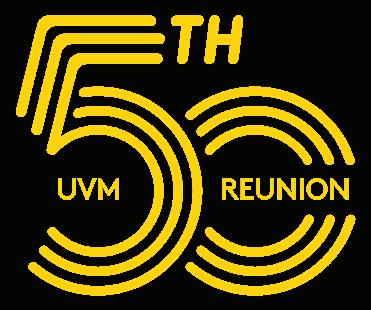
Send your news to –Mrs. Maureen Kelly Gonsalves moe.dave@verizon.net
Paul A. Bowe shared the sad news that Jeffrey D. Vorderer passed away in September 2024, after a lengthy illness. Jon Cain, Geoff Bemiss, Mark Cyr, Mike Fetsko, Tim Long, Scott Shallo ’89, and Joe Smith, who
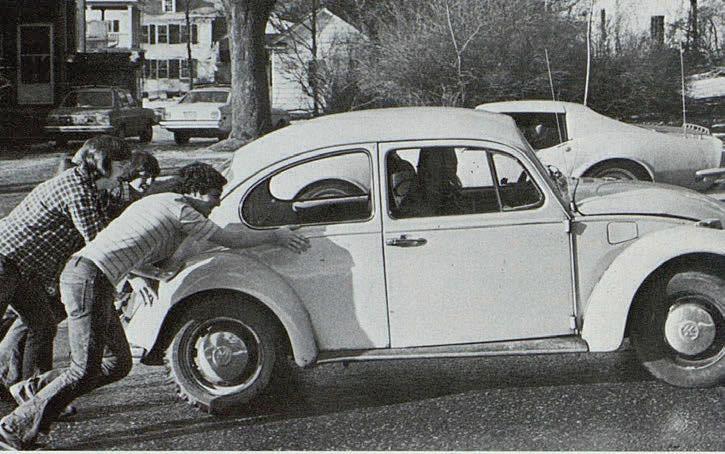
the Oregon legal community, where he served as an Assistant Attorney General in the Oregon Department of Justice. Carl, Rebecca Brody ’92 and Todd Landry all gathered to celebrate Patrick’s life in Portland, Ore., where Patrick lived since shortly after his UVM graduation in 1991. Many UVM friends were able to take part in the Vermont celebration of his life in Lyndonville in June.” Erik Steven Kufferman is still alive and well, and working in environmental consulting in France for ANTEA Group. John Oliver Niles wrote as his oldest son, Max , was preparing to start his sophomore year at UVM. John is now the vice president for conservation and science at the San Diego Natural History Museum and invites Catamounts to come vist the most biodiverse county in the continental U.S. Leah Silberfarb Sarah writes, “My three boys are 24, 22, and 17! My partner and I run a martial arts school in N.H. In my free time, I love painting and the outdoors with my standard poodle, Yuki!” ( See a picture of Leah and her sons with online Notes.)
Send your news to –Mrs. Karen Heller Lightman khlightman@gmail.com
92
Dongping P. Han retired from Warren Wilson College, and became professor emeritus in their Department of History and Political Science. Alex R. Johnson’s novel, Brooklyn Motto is out now. Reviewer Alex Abramovich says it’s “Raymond Chandler by way of Lou Reed: street-smart, razor-sharp, humming with menace. Johnson doesn’t just capture the city on edge; he drags you down its avenues, one gut-punch line at a time.” ( See a photo of the book’s cover with online Notes.) Laura Jean Schmigel has com -
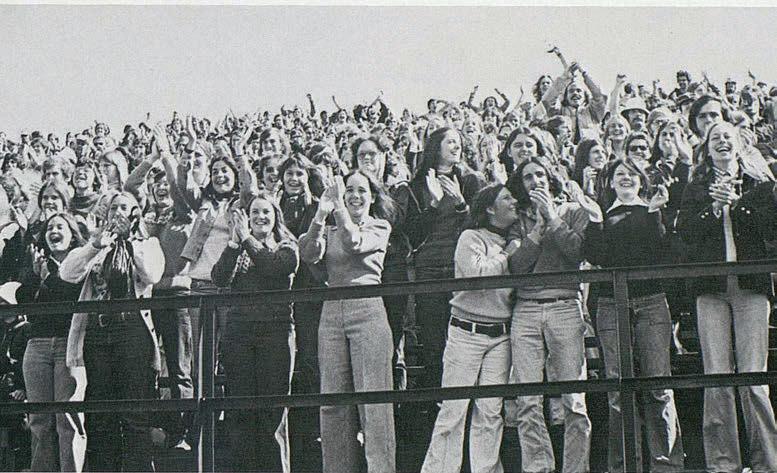
Make your plans to return to campus for your 50th Reunion on the weekend of June 5 through June 7, 2026, with early check-in and affinity programming beginning on June 4! Our UVMF Reunion programming is free to attend: you’ll just need to get here and find a place to stay. Hotel room courtesy blocks are already on the website. Visit alumni.uvm.edu/50th for more information. If
| CLASS NOTES
pleted her M.S. in high-incidence special education through Fort Hays State University in Kansas. Send your news to –Mrs. Lisa Aserkoff Kanter jslbk@mac.com
93
UVM Crew teammates Julie Cohn Greene and John Cooper ’92 teamed up for their third Peaks-to-Portland swim event. Experienced fisherman John guided in his kayak while Julie swam the 2.4 miles across Casco Bay, Maine. Julie reports that it was a beautiful day, a successful crossing, and that no sharks or jellyfish were encountered! A company’s relocation caused Mike Hecklinger to move from Colorado to Texas in June. He says that he finds himself in a strange land north of Dallas. Amid the flatlands of Frisco, Mike looks forward to connecting with fellow Catamounts in the DFW Metroplex. He is most proud of his children: his daughter Cece attends the Leeds School of Business at the University of Colorado; his son Spencer plays Division III hockey and is a business major at Worcester State University in Massachusetts. Send your news to –Ms. Gretchen Haffermehl Brainard gretchenbrainard@gmail.com
94
Robert Eugene Fraser just returned from a tour of Italy with wife, Tanya ’95, and their kids; Sebastian will be attending UVM this fall. Jean-Paul LaFors shares that UVM socks made for a small-world encounter on the Frog Lake Overlook trail in Lake Tahoe, Calif. While hiking, someone in JP’s group noticed UVM socks on a hiker of a different group —who turned out to be Stacey Blumer Evans. JP was the RA in Coolidge the spring of 1994 when Stacey lived there, and the two hadn’t seen each other since the April 1995 day that Stacey packed up her car to move to California. ( See a photo of the two, and Stacey’s socks, with online Notes.) Andrea J. Noel-Doubleday had a great visit this summer with physical therapy classmate Kristie (Manfredonia) Averill at her house on Cape Cod. They were looking forward to getting together in August in Maine with Nancy (Hardiman) Drew, Nicole (Boisvert) Quinn and Jill (Gumkowski) and Peter Vanderpot . She also proudly noted that son Christopher was looking forward to a fall start at UVM’s Grossman School of Business on an Army ROTC Scholarship. Denise Beliveau Smith is excited to have accepted the role as the Executive Director of the Vermont Council on Rural Development, which started when she was an undergrad at UVM in 1992. For those unfamiliar, she shares: “From local, citizen-led efforts to policy councils that build collaboration between state, federal, nonprofit, and private sector leaders, VCRD brings Vermonters together across political lines and organizational boundaries to create a better future.”
Send your news to –
Mrs. Cynthia Bohlin Abbott cyndiabbott@hotmail.com
Class Secretary Valeri Susan Pappas sent in a wonderful picture of a large group of 1995 graduates (with some ‘94 & ‘96 grads) who got together in Burlington in June for two nights of fun, including herself, plus: Tim Abrahamsen, Josh Baron, Bridget ’96 and Phil Bellizia, Ted Butler, Torrey Card, Tim Casey, Abe Conant , James Conway, Andrew Dudgeon, Sarah Ehrlich ‘96, Sara Giller, Lisa Golding ’96, Jon Grischuck , James Gurley, Tyler Hand, Marcus ’96 and Mitzi [Fowler] Johnson, Brad Kieves, Aram (Alex) Khavari, Lisa Kiniry, Sara Dolan Looby ’96, Will Lowry, Seth Parker, Spencer Picard, Kelli Shonter and Chris Ford, Heatha Sullivan, Alex Sumberg, Steph “The Officer” Tanger ’96, Jack Turner, Ann-Marie Vannucci, Damien Whalen, Elzy [Skylar] Wick , Cara Wolfendale, Bill Wright and Lisa [Goodrich ‘95], and Paul Zedlovich ‘94, saying, “This is how we do it! Go Cats! Best friends forever.”
Send your news to –Ms. Valeri Susan Pappas vpappas@davisandceriani.com
96
Sarah Terry Johnson was elected to the board of directors of the Vermont Genealogy Library. Pete Nardi has been named chair of the American Water Works Association (AWWA) Water Conservation Division and appointed to the AWWA’s Technical Education Council. He has been an AWWA Trustee since 2022, and the general manager of Hilton Head Public Service District, the water, wastewater, sewer, and recycled water utility, on Hilton Head Island, S.C., since 2015. He has worked for the utility for more than 21 years. Lisa M. Schaeffler is serving as Vermont’s very first New England American Public Works Association President.
Send your news to –Ms. Jill Cohen Gent jgent@steris.com or Mrs. Michelle Richards Peters mpeters@eagleeyes.biz
97
Katalin M Welch just started her second master’s degree in History Education and says she is hoping to teach college!
Send your news to –Mrs. Elizabeth Carstensen Genung leegenung@me.com
98
After many years living in central Vermont, Rebecca Schubert has moved to N.H. and opened an insurance-based nutrition counseling practice called One Step Nutrition Coaching. She says there’s been a lot to learn and that it’s very rewarding.
Send your news to –Mr. Benjamin Eldridge Stockman bestockman@gmail.com
99
Send your news to –Mrs. Sarah Pitlak Tiber spitlak@hotmail.com
VIEW CLASS NOTES PHOTOS ONLINE AT
OR SUBMIT YOUR OWN AT go.uvm.edu/submitnote
00
Andy Kaftanowicz has let us know that Christopher Gosline passed away peacefully, surrounded by loved ones, in March 2025, after a journey with colon cancer at his home in Manchester-by-the-Sea, Mass. He is survived by his wife and son, and Andy says he will be forever remembered fondly by his Buckham 3rd floor classmates as “Skip,” adding, “We’ll meet you in the woods, Skip. Rest in peace.” ( See a picture of the program from the memorial service with online Notes.) After a few years in Philadelphia, John Morton and family recently moved to Canton, Mass., where John is now the executive director of the Paul Revere Museum of Discovery and Innovation, scheduled to open near the end of 2025. In early summer 2025, Shiloh Autumn Schulte, Ph.D.’00 passed away in a helicopter crash while conducting field work in Alaska.
01
Andrew Cummins, M.S., M.D.’06 continues work as a private practice gastroenterologist in San Diego, Calif. He also trains residents and GI fellows at the Scripps Hospital System. In addition, he co-founded a medical research corporation. His wife, Anjali, works as an oncologist at UCSD. They have two sons, Dev (11), and Kal (9), who keep them busy with baseball, basketball, and football, and report recent exciting adventures to Portugal, Spain, Canada, and Italy. They also share the sad news that Andy’s father, Jim Cummins, M.D.’75, passed away in October 2022. Amy E. Thomas sends greetings from the UK, and adds, “After university I went on to get my master’s in education. Had an entire career in medical sales (which can be quite an education) before moving into the classroom to teach science to 11-year-olds. Now I’ve built my own online tutoring business for kids, teaching multiple subject areas and loving it! Being able to engage 1:1 with students is a blessing. It allows me to be anywhere, so I split my time between Florida and the United Kingdom, and am loving the culture overseas. And let’s not forget my visits back to Vermont to see family. Such great memories at UVM, especially attending psychology classes with Professor Lawson. I wonder what happened with Barnaby (our Psi Chi/Psychology Club President)?” Erin Colleen Wilson lives primarily in Nantucket, Mass., working in real estate on the island, and winters in Palm Beach, Fla. She is excited that she will now be working in the Palm Beach market as well, and says she has fun in her frequent connections with other UVM alums on Nantucket.
02
Nicholas Jamison Sears is using his music education degree teaching 4th–6th-grade band in Village Elemen -
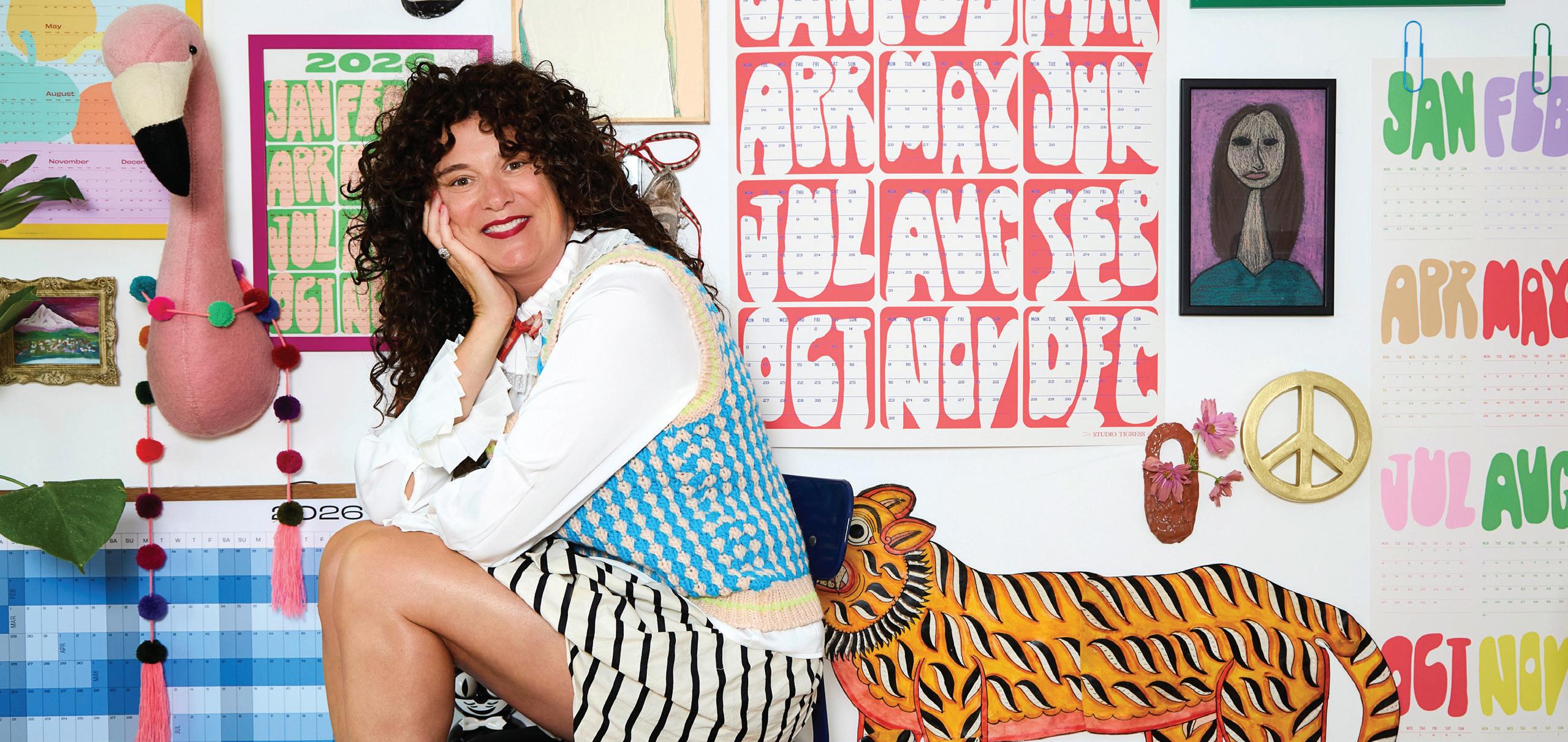
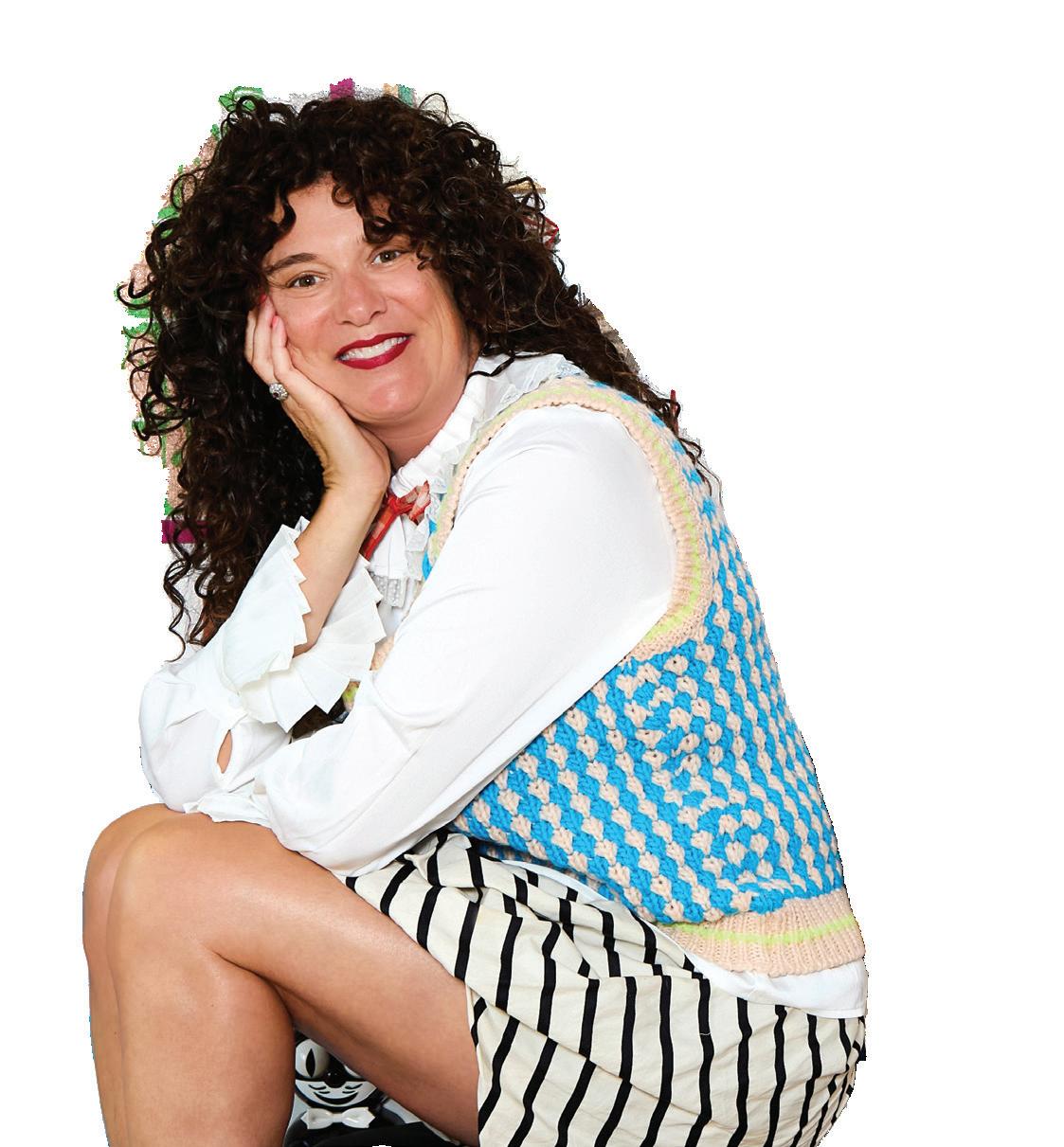
Building, Bending, and Creating: Sara Kinnamon Fritsch ’00
From UVM’s first women’s pole vaulters to president of a national design brand, Sara Kinnamon Fritsch has built a career at the intersection of engineering and creativity.
For Sara Kinnamon Fritsch ’00, adaptability has always been a guiding principle. A mechanical engineering major and studio art minor at UVM, she has spent the past 25 years weaving together design, engineering, and entrepreneurship into a dynamic career.
After graduation, Sara and her husband, Oliver Fritsch ’00–her former study partner in thermodynamics–worked as consultants in Boston before settling in Portland, Ore. There, they built a life centered on family, creativity, and the outdoors.
Sara’s professional breakthrough came at Schoolhouse, a luxury home and lighting brand, where she rose to president. Her leadership earned her recognition as Portland Business Journal’s 2020 Executive of the Year. When Food52 acquired the company in 2021, she stayed to guide the transition before launching her own venture, Studio Tigress. Through the firm, she helps design-driven companies grow and evolve while also developing her own line of products focused on our relationship with time. Her work has been featured in the Wall Street Journal, Forbes, Wired, and more.
Sara’s entrepreneurial path has roots at UVM. She and Oliver were part of the founding team of the Society of Automotive Engineers program in 1999, building an amphibious off-road race car that competed in a national collegiate competition. “It was a lot of work, was very rewarding, and we both feel like it was the top thing we did at UVM to set us up well for our careers beyond college,” she recalls.
Athletics also shaped her Vermont experience. A member of the track team, she was among
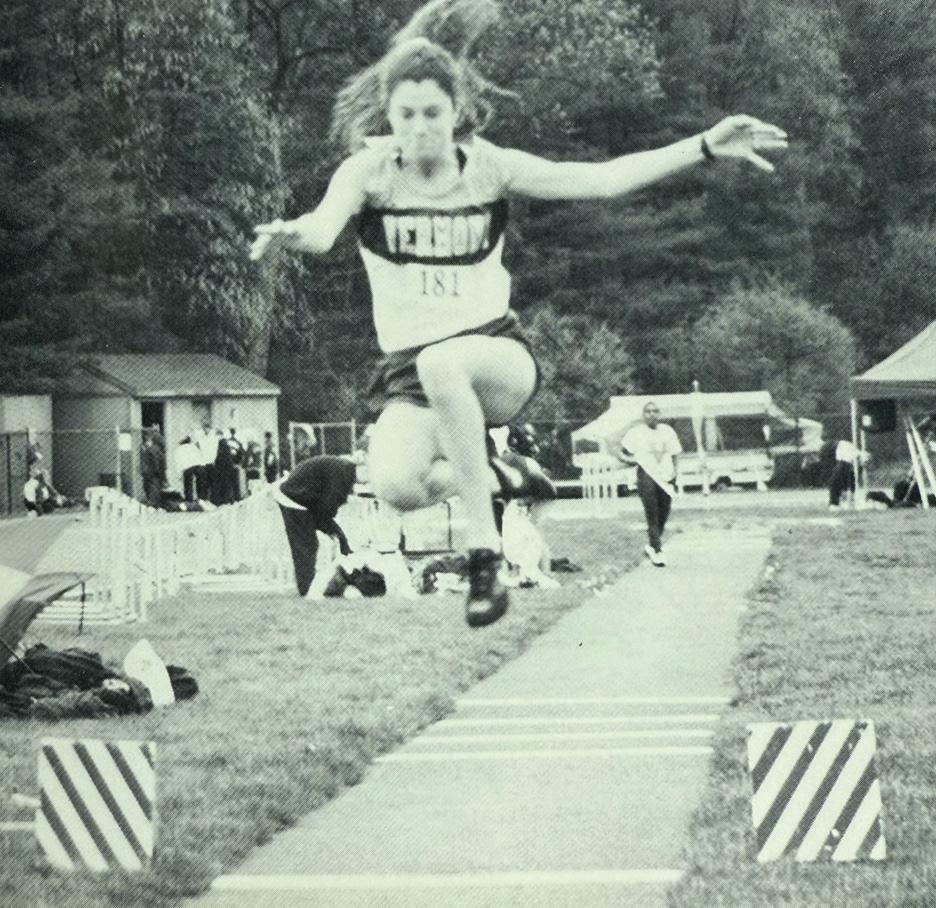
the first women to pole vault when the NCAA allowed the event in 1998. “Those of us who got to pole vault in 1998 felt like pioneers,” she says. “It has been amazing to see how far women’s pole vaulting has come since, and it is an honor to have been at the right place at the right time to go first.”
Her UVM connections remain strong. Sara helped establish the Katherine Anne Kelly Award, named for her late best friend and college roommate, which honors students who face medical challenges with courage and joy. She also mentors female entrepreneurs, serves on several corporate boards, and joined the UVM Alumni Association Board of Directors this fall.
Looking back, she credits UVM with giving her the foundation to balance creativity with technical rigor. “We all do our best work when we are able to be our truest self,” she says. “Learning how to connect with, prioritize, and be my best true self is the best gift I can give to those I love and those that depend on me.”
In her 25th reunion year, Sara continues to embrace new chapters–bending, building, and creating with the same resilience and vision that began in Burlington.
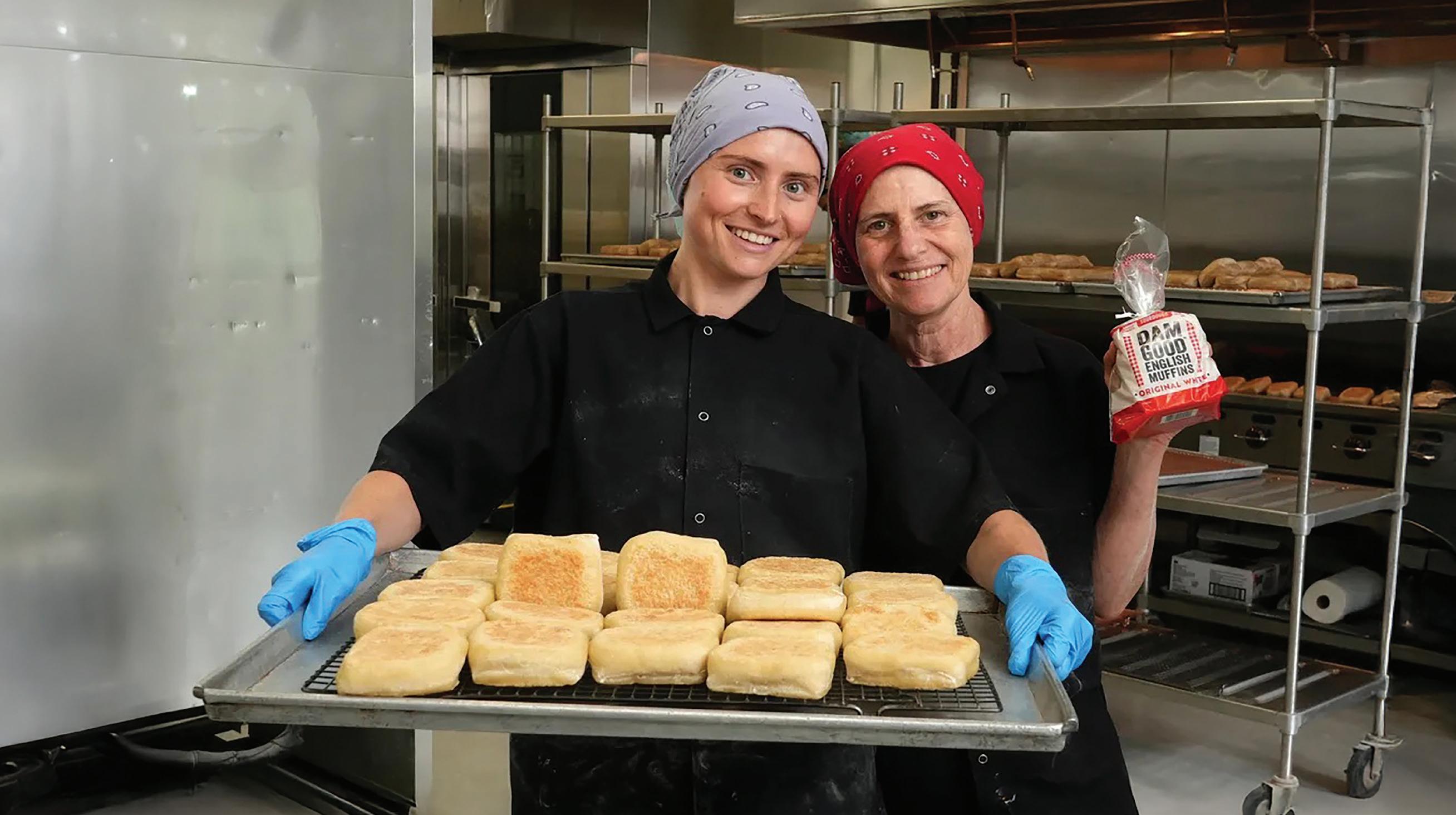
Baking Up a Business: Olivia Weale ’19 and Dam Good English Muffins
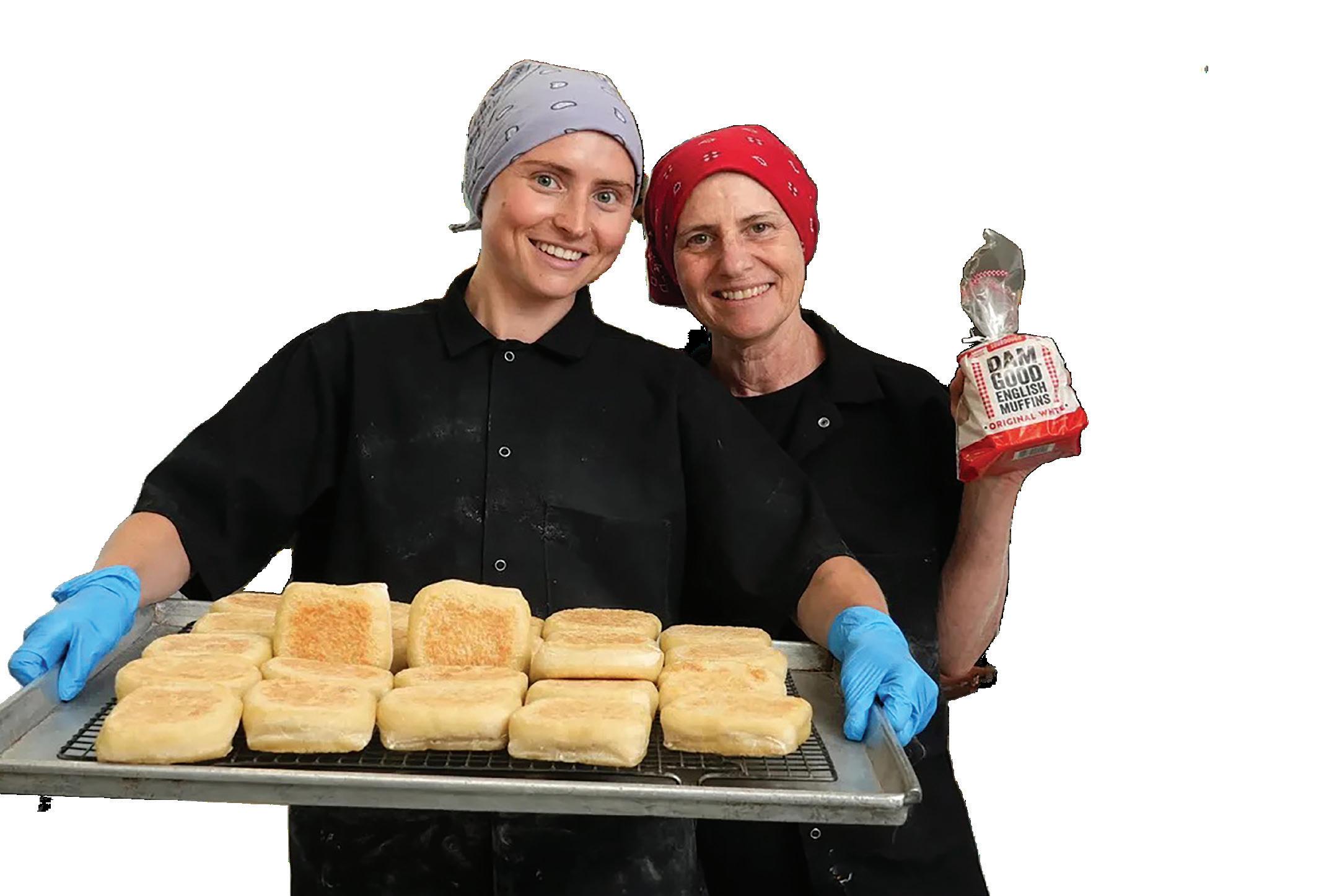
a sourdough English muffin unlike anything she’d ever tasted. That simple moment sparked a family experiment in the kitchen–one that grew into Dam Good English Muffins, a fast-growing specialty food company rooted in transparency, quality, and social impact.
From a family kitchen in New York to Whole Foods shelves, this alumna is reshaping a nostalgic staple with purpose and passion.
Weale, who majored in business administration and minored in sociology at UVM, co-founded the company with her parents, both professionally trained chefs. Early batches were gifted to friends and family, whose enthusiasm convinced them they were onto something bigger. Soon, they were baking under a New York State Home Processing License and selling at local farmers markets. Demand quickly grew, and a purchase order from FreshDirect prompted the move into a commercial space in Peekskill, N.Y.
Today, Dam Good English Muffins are available online nationwide, in all Wegmans stores, and in Whole Foods Market locations across New York, Connecticut, and New Jersey. The brand name–deliberately spelled without an “n”–honors the family’s roots near the New Croton Dam and reflects their mission to “do Dam Good” through open hiring practices, community engagement, and a commitment to food that nourishes rather than deceives.
Looking back, Weale credits her UVM education for preparing her to step into entrepreneurship. “The Grossman School of Business gave me a strong base of knowledge in areas
which I draw on daily as a co-founder managing both the manufacturing side of our business and its continued growth,” she says. “The values that UVM instills–around community, sustainability, and thinking critically–continue to influence how I lead, make decisions, and approach growth with intention and purpose.”
Her advice for aspiring entrepreneurs? Stay grounded in your mission. “It’s easy to get distracted by the noise–what other businesses are doing, industry trends, or the pressure to grow fast–but the real progress comes when you stay focused on your purpose and goals,” Weale says. “Be bold enough to differentiate yourself, and persistent enough to keep going when things get hard–because they will.”
She emphasizes the importance of connecting directly with customers, seeking feedback early, and leveraging networks to refine ideas and expand opportunities. And above all, she urges others to find joy in the process. “Entrepreneurship is full of challenges, but it’s also full of meaning, creativity, and endless opportunity,” she says. “Even on the hardest days, remind yourself why you started, and have fun with it.”
What began as a small family project has become a growing business making its way into homes across the country. For Weale, it’s proof that with focus, persistence, and purpose, even the simplest foods can open big doors.
READ AND SUBMIT CLASS NOTES ONLINE
alumni.uvm.edu/notes
tary School in Marblehead, Mass. He loves the work, saying that he and his colleagues can “joke and laugh together,” while also having “high expectations for each other.” He adds, “We practice empathy, teamwork, and leadership every day while we make music. It’s the best.”
Send your news to –
Ms. Jennifer Khouri Godin jenniferkhouri@yahoo.com
03
Kerstin Lange G’03’s 2024 book, ”The Phantom Border” has been endorsed by yet another beloved UVM faculty member, Bernd Heinrich, who offered: “This book combines adventure, history, and a narrative of how people lived confronted with the post-WWII environment in Germany. Lange explores consequences and lessons that continue to the present day. It tackles the larger issues, the importance of home, and its offshoot into conservation biology and ethics. With verve and clarity, it serves a rich fare for a wide readership. It is a great read.” Erin Socha Leonard was recently recognized as one of the Top 50 Women Leaders in Massachusetts for 2025 by Women We Admire. She is a senior director of technical sales for Proofpoint and is an advisor for UVM’s Grossman School of Business’ Women in Leadership Program. She lives with her family on the north shore of Boston. The family, friends and students of Mindi Wimett G’09 proudly wrote to share news of Mindi’s selection by the White House for a Presidential Award for Excellence in Mathematics and Science Teaching 2022. They note that she has made a mark in the Vermont education system, serving on a variety of committees in her supervisory union, and has participated in multiple professional learning communities such as the supervisory union’s anti-racist PLC and book study for Fostering Resilient Learners. ( See Mindi’s picture with online Notes.)
Send your news to –Mrs. Korinne Moore Berenson korinne.d.moore@gmail.com
04
Linda (Potvin) Orton ’90 with Katie (Bengtson) Jones and Nina (Graham) Socha, enjoyed the HITS horse show in Manchester, Vt., this summer. Linda is the trainer for Katie’s kids, Annelie (UVM hopeful Class of 2033) and Kirsi (UVM hopeful Class of 2039) on their horse fondly known as Tucker. Nina also recently joined another `04 UVM graduate at his business, Hoogenboom Wealth Management, where she is now a senior financial advisor. Jason Meyersburg and family have moved back to Vermont and look forward to reconnecting with old friends.
Send your news to –
Ms. Kelly Marie Kisiday kelly.kisiday@gmail.com
Mia Lise Bauman wrote, illustrated, and published a new children’s book titled “Moving Day for Mikey,” to help children going through difficult life transitions, like moving. Shortly after publishing her book, Mia had the pleasure of being interviewed by Cat Viglienzoni of WCAX (Vermont) news about the story. She hopes to write and illustrate many more children’s books and says she is excited to share her book with the wonderful UVM community! Clyde Dunton-Gallagher writes , “Our son, Felix, was born April 17 and is happy and healthy. Mom, Nancy, is doing well and could not be more proud of our kids. Daughter Mae turned seven in June and daughter Madelyn turned four in July. Mae will be attending Coconut Grove Montessori School for second grade this fall, and Madelyn will be in pre-K. In March, I opened a solo practice law office in Coconut Grove, Fla.: Dunton Gallagher Legal PLLC, where I handle a variety of civil legal matters, with a focus on representing plaintiffs in negligence actions and meeting the legal needs of yacht and boat owners.” Congratulations to Darrell Lee Goodwin, selected by the Oikos Institute for Social Impact as a recipient of their 2025 Impact Award. This award acknowledges the transformative leadership he has shown as the Executive Conference Minister and President of the Southern New England Conference of the United Church of Christ across Massachusetts, Connecticut, and Rhode Island. ( See a picture of Reverend Goodwin with online Notes.)
Send your news to –Mrs. Kristen Dobbs Schulman kristin.schulman@gmail.com
06
Zoe Sarah Anderson works as corporate counsel at Tinder. She lives near the beach in Carlsbad, Calif. with her husband and their 6-year-old son, Rock, who she says is already showing signs of outpacing her both on the snow and in the surf. She recently fulfilled her dream of owning a cabin near Big Bear, and says she would love to host any UVM friends in SoCal for a weekend in the mountains.
Send your news to –Mrs. Katherine Kasarjian Murphy kateandbri@gmail.com
07
Heather Baldyga got married in fall 2024 in Portsmouth, N.H., with 10 UVM alumni present. The wonderful photo she shared includes nine former members of the UVM Crew team (five of whom served as team president in different years!): Liam Carroll, Casey Clark ‘08, Amanda Cota ‘08, Kelsy Hartley ‘06, Rose Weggler ‘08, Elizabeth Schiffmann ‘06, Eric Silverberg ‘08, Gregory Stewart ‘08, and Sarah Tousignant ‘09 ( See the group’s picture with online Class Notes.) Sarah Virginia Martin is the director of NOLS Rocky Mountain in Lander, Wyo. She got her start leading in the outdoors at the Outing Club at UVM, and says her
group sent about 900 students into the mountains around Wyoming this summer!
Send your news to –Mrs. Elizabeth DiPietrantonio dipietrantonioe@jgua.com
08
Emily May has published her first book of essays, “Some Girls,” which blend personal memoir with cultural criticism. The work was published by Galileo Press and debuted at the annual gathering of the Association of Writers & Writing Programs in Los Angeles in March 2025. ( See the book’s cover with online Class Notes.)
Send your news to –Ms. Elizabeth S. Bearese ebearese@gmail.com or Ms. Emma Maria Grady gradyemma@gmail.com
09
After 15 years of serving in the environmental world, Heather Brooke Bromberg is pursuing a master’s degree through Stony Brook University’s School of Social Welfare to transition her career to social work. Susie Cirilli has joined the Philadelphia-based law firm Spector Gadon Rosen Vinci P.C. She is recognized for focused expertise in employment law, intellectual property, and the professional women’s sports arena, advising companies on employment law compliance and workplace matters, and has developed a particular focus on advising organizations within the sports industry, with a strong passion for supporting women’s sports. Erik Giard-Chase, CFA recently launched Blue Slate Wealth Management, a boutique, fee-only, registered investment advisor that provides financial planning and investment management services to families, individuals, non-profits and institutions. Carmen Renee Lagala sends warm greetings to everyone reading Class Notes!
Send your news to –
Mr. David Arthur Volain david.volain@gmail.com
10
Kelly Harmon MacPherson, M.D. ‘22 and her family happily welcomed their second child, Aidan James MacPherson, into the world this past year. She also finished her pediatrics residency at Brown University and started a neonatal-perinatal medicine fellowship at Brown in July 2025. Rory Mitchell ’05 wrote with the sad news that his brother James Mitchell died in May 2025. James was a history major, a member of Phi Beta Kappa honor society, and a passionate fan of the men’s hockey team who would often travel to Burlington after graduation to follow them in person. He is survived by three siblings — Robert, Rory ’05 and Tory ’05 — and their mother, Mary Jane.
Send your news to –
Ms. Daron Lynn Raleigh raleighdaron@gmail.com
11
Luke Martin was recently made a partner at Impact Research — one of the country’s leading Democratically-aligned campaign polling and strategy firms. He also manages the firm’s D.C. office and associate staff.
Send your news to –Ms. Troy Elizabeth McNamara troy.mcnamara4@gmail.com
12
Latimer Hoke and two friends spent ten days riding their bicycles from Lowell, Vt., to the far eastern tip of the Gaspé Peninsula in Québèc. The 845-mile route started at Corez Pond adjacent to the dormant asbestos mine near Lowell, one of the headwaters of the Missisquoi River, and generally followed the water to the ocean by way of the Missisquoi River, Lake Champlain, the Richelieu River, and finally, the St. Lawrence River. The trio enjoyed many sunsets, practiced French, and consumed the world’s finest poutine while watching a small creek become an ocean.
Send your news to –Mr. Patrick Wayne Dowd patrickdowd2012@gmail.com
13
In April 2025, Magnolia Maloney Dow was named associate director of real estate, public relations and communications at Nickerson. The firm enthusiastically welcomes her “deep expertise in strategic communications (and) established relationships within the real estate sector.” Having earned a bachelor’s degree in english, film and television studies at UVM, Magnolia further shares that she lives on Boston’s South Shore with her wife and daughter, is an avid runner, and that the family frequent New England’s northernmost regions to enjoy camping and snowboarding. ( photo) Jason Katz has completed his doctorate of nursing practice from Fairfield University and passed his licensing exam to become an APRN - Psychiatric Nurse Practitioner! He is living in New Haven, Conn., and continues to have nearly daily contact with friends from the class of 2013, though he says that in order to protect the innocent he will not name names at this moment. ( See Jason’s picture with online Notes.) Molly Grasso ’14 shared the sad news that John Koo passed away in Los Angeles in June 2025. He was a devoted son, husband, brother, uncle, founder and friend and will be dearly missed.
14
Hagan Christopher Dooley is excited to announce the opening of Five Points Animal Hospital in Denver. After years of dedication to veterinary medicine (a bachelor’s in animal science from UVM and a doctorate of veterinary medicine from the University of Missouri), he is proud to launch this next chapter as the owner of a full-service animal hospital committed to compassionate, high-quality care for pets and their families. Dr. Dooley lives just around the corner from the clinic with wife and fellow Catamount Leslie Barnard ’14 and their three rescue dogs! Hillary Laggis Ribaudo says her family is a year late in announcing the arrival of daughter Charlotte, born September 9, 2024. She joined proud big brother, Theo (3). ( See their adorable photo with online Notes.)
Send your news to –Mrs. Grace Louise Buckles Eaton glbuckles@gmail.com
15
Jigar (Jay) Patel Writes, “I am very proud of my degree, education received, and time spent with people during my training.”
Olivia I. Taylor sent in a sweet picture of a Maine seashore reunion celebrating 10 years since graduation with Amy Chalmers, Abbie Waite, Ariel Mondlak , and Emma Lettiere. ( See the picture with online Notes.) Charlotte F. Wonnell shared, “Catamounts from near and far enjoyed a reunion in Wilton, Conn. Parents were outnumbered by the little Cats!!” ( See the group’s picture with online Notes.) Abby Ginsberg Wyckoff sent in the lovely news of her wedding to Peter Wyckoff with many Catamounts in attendance, including David Babbitz ’90, Eileen (Smith) Babbitz ’89, Zachary Babbitz ’21, Sarah Bonebrake, Quinn Bryant ’14, Melanie (Wetmore) Bryant ’14, Ben DeCarlo, Tim Gallant , Francesca Garofalo, M.D.’22 , Ben Hoffling, Sam Ratcliffe, Aaron Schwartz , Ph.D.’20, Daniel Smith, Allyson (Boli) Smith, Alva Swing ‘16, Nick Wood, Brian Unger ’14, and Alexandra Zilonis ’21. ( See the group’s photo with online Notes.)
16
Mollie Gerber and Nate DeFlavio ’16 married in Puerto Rico in February 2025. ( See the beach photo of them surrounded by UVM alumni friends with online Notes.) Mollie and Nate live in P.R., where Mollie is a landscape design contractor and Nate works in corporate development for a tech startup.
17 Congratulations to Michael Steven Simoneau Jr. and Alex Gessman ‘18, who sent a note announcing their engagement.
18
Francesca A. Harvey was recently promoted to associate head athletic trainer at Barton College in Wilson, N.C., where the 2025–26 academic year will mark her sixth on staff. In July 2025, biology alum and graduate student Ben Recchia workshopped the popular British play “KIN” in Burlington’s Main Street Landing blackbox theatre. The Charlotte, Vt., native finds many overlapping skills and perspectives between theater and biology!
19
Sarah Wry and James Leary ‘18 tied the knot in St. Augustine, Fla. in January 2025. Surrounded by fellow Tri Deltas and UVM lacrosse alumni, they had representation from 11 different graduating classes, calling it a “true Caturday!”
20
Nick E. Bouffard has relocated to Bristol, U.K. for continued work with Epic. Nathan Raike has joined the non-profit association RENEW Northeast as manager of state and local affairs to lead advocacy and policy engagement related to advancing clean energy development across New England.
21
Arianna Belfield is teaching K–4th-grade general music at Bellows Free Academy in Fairfax, Vt., and says, “I have a lot of fun with my students, who are positive, curious, and open to trying new things in my classroom.”
OR SUBMIT YOUR OWN AT go.uvm.edu/submitnote
23
Class Secretary Han Naung Tun is now working as an M.D. research program specialist at Geisel School of Medicine at Dartmouth College. Charlotte Frances Crum graduated with her M.S. in historic preservation from Columbia University in May 2025 and is looking forward to the opportunities that come next! Since receiving her degree in environmental studies, Christine Elizabeth Fleming recently started a job as a wildland firefighter in Price, Utah, and sent a note as she had just got off her first large fire. (vSee her picture with online Notes.) Grace Kreitler has been working with Boston’s non-profit The Food Project, which specializes in sustainable urban farming, youth leadership development, and community food justice. They steward over 70 acres of farmland throughout Eastern Mass., hire 120 teens each year to farm and grow their leadership skills, and annually yield 100,000 pounds of fresh produce for local distribution. She encourages any Catamounts who find themselves in Boston to check out their work. Katie Loalbo is teaching band at Milton Middle School in Milton, Vt. She says she loves teaching middle schoolers. “They are so much fun!” After graduating with a B.S. in Forestry from UVM, Catherine Rose earned a Master’s in forestry at Duke University in May, 2025, and in June began working as an Urban Forest Planner in the Forestry Division of the City of Raleigh, N.C. Caroline Platt will soon begin Peace Corps service in Morocco. She says, “Through my UVM studies and then through two terms as an AmeriCorps VISTA in Knoxville, Tenn., I witnessed first-hand the possibilities for positive change and development through localized, community-driven initiatives.” As a youth development facilitator, she’ll collaborate with community members to assess youth needs and design empowerment programs.
Send your news to –Mr. Han Naung Tun annasxhan@gmail.com
Noah James Dreifus wrote as he was preparing to attend Carnegie Mellon University for an M.S. in biomedical engineering. Olivia McLean has been named assistant coach for the Saint Michael’s College women’s ice hockey program.
Jyll Allen G’03 passed away in July 2025. After completing a master’s in disability studies, they worked in local education for decades. Their family writes that compassion, intelligence and activism defined their life as a self-advocate and activist for social justice. A lover of words and language, they collaborated on many projects and published writing in The Green Mountains Deep: Fiction about Disabled Vermonters by a Disabled Vermonter. A sticker on their transfer lift saying, “Where there’s a Jyll, there’s a way,” epitomized their punny humor and cleverness.
Francis Churchill ’90, served UVM as a staff member for 32 years, most recently as Director of Environmental Health and Safety. He died suddenly on October 11, 2025. His colleague Mike Schirling noted that he shaped “the culture of safety on our campus with unwavering commitment and care…. His work touched every corner of the university, from lab safety to emergency response, with an especially profound impact during the COVID-19 pandemic. Francis was known for his quiet leadership, his ability to build consensus, and his genuine kindness.” In 2023 he received the Our Common Ground Staff Award. He is survived by his wife, Molly Dugan G’96, and daughters Ginny ’21, and Ellie ’23.
Timothy Hayes ’67 passed away in July 2025. After a long career in advertising that included writing the iconic tagline, “I can’t believe I ate the whole thing,” Tim found himself becoming a devoted expert in natural horsemanship and equine therapy. He remarked how gratified he was to return to UVM 50 years after graduating to teach today’s students about his approach to horsemanship.
Diane Eastman Jones ’55 passed away in February 2025. Her loved ones remember her as “a friend to all, and to know her was to love her. This irrepressible (impossible to control) rascal lady was truly a woman for all seasons, whose zest for life and service was unparalleled, and an inspiration for all.” She captained the 1955 women’s ski team while working towards a B.S. in psychology. She is survived by a large and loving family that includes her husband of 66 years, Colonel Richard Jones, and their children and their families: Liz Taylor ’77, Sandra Jones ’83, Susan Jones ’86, and James Jones.
Dr. Barbara Clark Kay ‘67 passed away in February 2025. The UVM community is grateful to her as a longtime, committed volunteer and a generous supporter, most recently through a research fund supporting biological and environmental undergraduate research.
Arthur S. Kunin, M.D. ’53, former husband of Vermont’s first female governor, Madeleine Kunin G’67, passed away at 99 in July 2025. Dr. Kunin spent summers in Burlington with his grandparents in the city’s “Little Jerusalem” Old North End neighborhood. The first person in his family to attend college, he went on to serve in WWII in a division assigned to General Patton’s Third Army, and as a volunteer for a mission to rescue wounded Americans from the battlefield in December 1944, where he himself was seriously wounded. After recovering, he earned an undergraduate degree at Columbia. He then attended UVM’s College of Medicine, graduating in 1953 and beginning a career as an attending physician and researcher here in 1957. He is survived by Governor Madeleine Kunin and children Adam M.D. ’93, Daniel, Julia, and Peter Kunin, among a large network of beloved family members and treasured friends.
Jessica Rachel Mann ’99 passed away in August 2025. A sociology major, she found community at UVM both academically
and socially. She learned to ski in a gym class at UVM and went on to ski some of the world’s most challenging slopes.
Beloved local musician, radio DJ and reference librarian Robert Resnik ’74 passed away in July 2025. Friends affectionately remember his eclectic weekly WRUV show and a smile that one friend called, “somewhere between Jerry Garcia and a leprechaun.”
Professor Emeritus of English Alfred Felix Rosa died peacefully on January 31, 2025. His 34-year teaching career at UVM focused on American literature, expository writing, and editing and publishing. He taught Italian American literature and was a frequent lecturer on the history of Italians and stone carving in Barre. In partnership with his English Department colleague, Paul Eschholz, he co-authored nine textbooks, most of which went into multiple editions, with three still in print after five decades. (Scan the QR code or visit go.uvm.edu/rosa to read more about the Rosa-Eschholz friendship.)
Shiloh Schulte, Ph.D. ’00 passed away in a helicopter crash while conducting field work in Alaska, doing the research he was most devoted to: working in nature to protect the birds and wild places he cherished so deeply. He is remembered as a lifelong birdwatcher, conservationist, and scientist whose passion for the natural world was infectious. He is survived by wife Shevaun Schulte ’02 and their two daughters.
Robert Taisey ’50 went on from UVM to receive a J.D. from Cornell University. He established a 70-year legal career, and he contributed a lifetime of volunteer leadership and generosity to support UVM as well as prodigious service in support of the legal profession and the humanities.
Stephen Terry ’64 passed away in July 2025. In his UVM undergraduate years, he was a member of Delta Psi. He is remembered as an esteemed journalist, as well as a dedicated UVM volunteer and supporter—active with campus events, engaged in service on the Boards of Advisors of the Aiken Lecture Series and UVM Alumni Association, and passionate about the Center for Research on Vermont and the Center for Community News.
Sally Weinstock ’56 passed away in spring 2025. She went on from UVM to have an energetic career, including as CEO of her family’s business in New York City. She remained a devoted volunteer for UVM and many other causes and organizations. She made an enormous impact on generations of UVM students as a longtime donor who established support for UVM’s Theatre Department, and for undergraduate students in the College of Arts and Sciences.
Dr. Robert Cummings Woodworth ‘53 was a professor of biochemistry at UVM in the College of Medicine from 1961 until his retirement in 1997. Passionate about continuing support for UVM students, he and his wife Marilyn Pratt Woodworth ’52 endowed a fund to support undergraduates majoring in biochemistry, chemistry, or nutrition and food sciences. He is survived by brother Barry Bruce Woodworth; children Charles Woodworth, Hope Woodworth and Natalie Woodworth Billings ’82 and grandchildren Jireh Billings ’12, Calder Billings ’15, and Nathaniel Swift Billings.

UVM has a long history of producing Peace Corps volunteers, having made the top 25 list for most of the last quarter-century, and currently holds the number three spot for medium-size institutions–those having between 5,000 and 15,000 undergraduate students. Since the Peace Corps’ founding in 1961, UVM has produced over 900 program volunteers.
“The culture of UVM, as a place where students really want to make a difference, plays a big part in our success in fostering so many volunteers,” said UVM Peace Corps Strategic Campus Recruiter Arminda King. “UVM students want to bring about lasting, positive change in the world, and they find the Peace Corps to be a program through which they can do that.”
To honor the Peace Corps and its longstanding presence on campus, King commissioned Vermont artist Dorie Keck to paint a new mural that is now installed on the ground floor of the Marsh Life Science Building.
“The species depicted in the mural represent the many countries the Peace Corps has reached. Placing it here on campus honors our relationship and offers a lasting contribution to the UVM community,” said King.

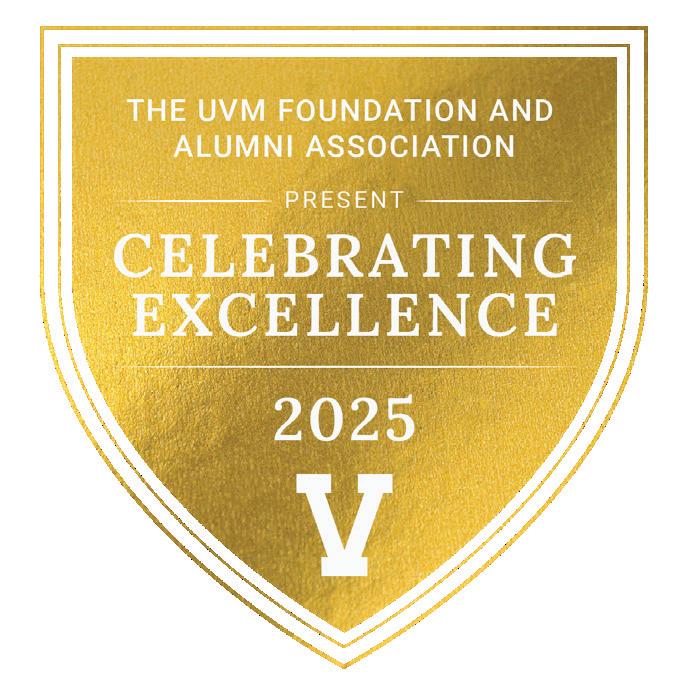
CONGRATULATIONS
to the winners of the 2025 UVM Alumni Association and UVM Foundation Awards
DISTINGUISHED SERVICE AWARD
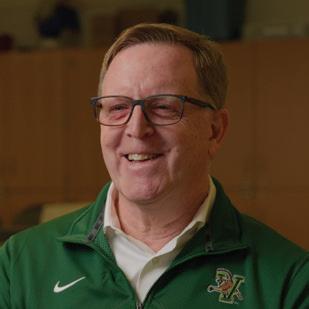
Karl Fessenden ’85
Fort Thomas, Ky.
College of Engineering and Mathematical Sciences
Karl Fessenden built a distinguished career as a senior executive in aviation, power, energy, and construction. At UVM, he has demonstrated exceptional leadership and generosity, serving 10 years on the CEMS Board of Advisors, including five as chair, where he focused on expanding professional opportunities for students. With his wife, Mary, he established the Karl and Mary Fessenden Professorship in Biomedical Engineering. He now serves on the UVM Foundation Leadership Council.
OUTSTANDING YOUNG ALUMNI AWARD
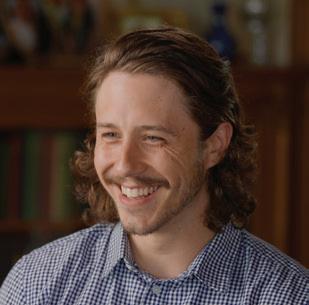
Christopher Petrillo ’18
Seattle, Wash.
College of Engineering and Mathematical Sciences
Christopher Petrillo has dedicated his career to advancing the responsible use of data, technology, and artificial intelligence to expand access to open knowledge. As head of product for Wikimedia Enterprise, he has made Wikipedia data available to UVM Complex Systems researchers, who use it to model human behavior and the way society functions. In recognition of his impact in artificial intelligence, he was named to the Forbes “30 Under 30” list in 2024.
ALUMNI ACHIEVEMENT AWARD
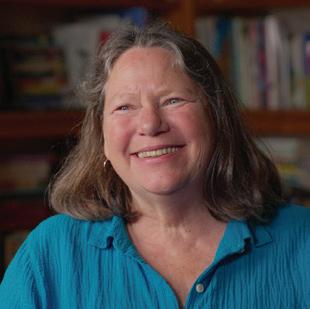
Megan Camp ’84
Shelburne, Vt. College of Arts and Sciences
Megan Camp is an internationally recognized leader in education for sustainability whose career has been devoted to fostering healthy communities, food systems, and ecosystems. For over three decades, she has been at the heart of Shelburne Farms’ impact as a hub of learning and collaboration for educators across the world. Tireless in her commitment, she has advanced innovative curriculum development, inclusive teaching practices, and global partnerships that promote the long-term wellness of people and planet.
TRANSFORMATIVE PARTNERSHIP AWARD
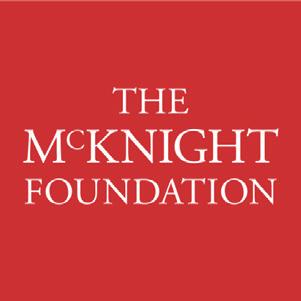
The McKnight Foundation Minneapolis, Minn.
For 11 years, the McKnight Foundation has partnered with UVM researchers to transform food systems for the health of people and the planet. In 2023, with support from McKnight, UVM launched the Institute for Agroecology (IFA)—the first of its kind at a land-grant university in the U.S. Bridging research with practice and policy, McKnight and the IFA help communities improve nutrition and achieve more equitable livelihoods through sustainable practices, laying the foundation for resilient food systems worldwide.
Please visit alumni.uvm.edu/awards to learn more about each recipient and to submit a nomination for next year’s awards.
